High-Performance Organization – Workshop 1 (HPO Foundations)
The Appleton Greene Corporate Training Program (CTP) for High-Performance Organization is provided by Dr. de Waal Certified Learning Provider (CLP). Program Specifications: Monthly cost USD$2,500.00; Monthly Workshops 6 hours; Monthly Support 4 hours; Program Duration 24 months; Program orders subject to ongoing availability.
If you would like to view the Client Information Hub (CIH) for this program, please Click Here
Learning Provider Profile

Dr. de Waal Ph.D., MSc, MBA is Academic Director of the HPO Center, an organization which conducts research into high performance organizations. He is also a partner at the Finance Function Research & Development Center, a company that aims to help finance functions to transform in a high-performing department. Dr. de Waal has been a consultant and partner with Arthur Andersen for 16 years. He was also 13 years Associate Professor Organizational Effectiveness at the Maastricht School of Management. Dr. de Waal has been guest lecturer at the Free University Amsterdam, University of Amsterdam, and Erasmus University Rotterdam, visiting fellow at Cranfield University, UK and senior lecturer at Wittenborg University of Applied Sciences. Dr. de Waal holds a MSc in Chemistry from Leiden University (the Netherlands), a MBA from Northeastern University Boston (USA) and a Ph.D. in Economics from Vrije Universiteit Amsterdam (the Netherlands). His dissertation was about the behavioral aspects that are important for the successful implementation and use of performance management systems.
Dr. de Waal teaches and does projects in the field of high performance organizations and performance management in countries such as China, Vietnam, Bangladesh, Mongolia, Nepal, Mexico, Peru, Ecuador, Suriname, United States, UK, Italy, Belgium, Portugal, Poland, Saudi Arabia, Yemen, United Arab Emirates, Palestine, South Africa, Namibia, Tanzania, Zambia and Australia. He was selected by managementboek.nl as one of the Dutch Masters in Management, ten people who have influenced management thinking in The Netherlands the most in the past decade. Dr. de Waal has published more than 500 articles (among which more than 140 academic publications) and 36 books.
MOST Analysis
Mission Statement
To equip organizations and their employees and management with the tools and mindset needed to thrive in a dynamic and complex world through the implementation of the High Performance Organization (HPO) Framework.
Objectives
01. Facilitate understanding of the HPO Framework and its application in organizational settings.
02. Empower participants to drive meaningful changes in their organizations (or parts of it), fostering a culture of high performance.
Strategies
01. Conduct comprehensive workshops and training sessions on HPO Foundations, emphasizing the key success factors.
02. Provide guidance on how to adapt the HPO Framework to specific organizational contexts through the HPO Family approach.
03. Foster a culture of openness, action orientation, continuous improvement, and long-term orientation within participating organizations.
04. Introduce participants to case studies exemplifying successful HPO implementations for practical insights and inspiration.
05. Implement exercises and reflection questions to integrate HPO behavior into participants’ work ethos, ensuring alignment with organizational goals and values.
Tasks
01. Develop and deliver workshop materials on HPO Foundations, including presentations, case studies, and exercises..
02. Facilitate discussions and activities to encourage participants’ active engagement and reflection on HPO principles.
03. Collaborate with organizational leaders to customize HPO transformation plans based on diagnostic results.
04. Monitor progress and provide ongoing support to ensure effective implementation of HPO strategies and initiatives.
Introduction
In today’s rapidly evolving business landscape, marked by unprecedented technological advancements, shifting market dynamics, and increasing global competition, the need for organizations to operate at a high-performance level has never been more critical. The HPO Framework was developed in response to these challenges, offering a robust and adaptable model for organizational excellence. As industries continue to transform and new paradigms of work emerge, the principles of high performance remain more relevant than ever. This learning course is designed not just to navigate these changes, but to leverage them, ensuring that the organization not only adapts but thrives. By understanding and implementing the HPO Framework, organizations can gain a significant competitive edge, fostering resilience, innovation, and sustained success in an ever-changing global business environment. This program, therefore, is not just about reaching high performance; it is about equipping the participants organizations with the tools and mindset needed to stay ahead in a dynamic and complex world.
The HPO Framework
A High Performance Organization is an organization that achieves financial and non-financial results that are exceedingly better than those of its peer group over a period of time of five years or more, by focusing in a disciplined way on what really matters to the organization. During a five-year scientific study the High Performance Organization (HPO) Framework was developed. This framework is a conceptual, scientifically validated structure which organizations can use for analyzing how high performing they are and to decide which capabilities need to be strengthened in order to improve organizational performance and make it sustainable for the long term. The framework was developed twenty years ago and has since then been used in thousands of profit, non-profit and governmental organizations worldwide.
The positive effects of applying the HPO Framework are considerable, as an HPO is more innovative, has a greater ability to improve, is more open and transparent, has more focus and discipline, experiences trust between the partners in the organization’s value chain, has better cooperation internally in the organization and externally with third parties, and has a more positive mentality among the organization’s people who are considerably happier than employees in ‘regular’ organizations. And these non-financial benefits translate ‘automatically’ in financial benefits such as increased turnover, higher productivity, increased profitability and doing more with a higher quality for the same or less budget (in case of governmental and non-profit organizations).
The HPO Family
The HPO Framework is a conceptual, scientifically validated structure which practitioners can use for deciding what to do to improve organizational performance and make it sustainable. It is not a set of instructions or a recipe which can be followed blindly. Rather it is a framework that has to be translated by managers to their specific organizational situation in their current time, by designing a specific variant of the framework fit for their organization. To support these managers, the CLP ‘How to become and stay a high performance organization’ has been developed. The first goal of the program is not only for participants to become familiar with what an HPO is but also to help them in actually transforming their organizations (or parts of it) into HPOs. For this, the ‘HPO Family’ is used (see Figure 1). The second goal of the program is not just to impart knowledge but to also empower participants to drive meaningful changes in their organizations, fostering a culture of high performance.
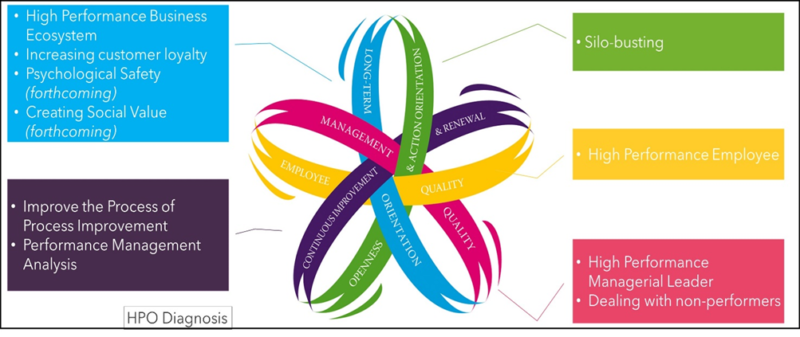
Figure 1: The HPO Family
Ever since the initial development of the HPO Framework, which consists of five factors (and 35 accompanying characteristics), the HPO philosophy has been extended with additional topics which help improve and strengthen an organization (such as increasing the quality of managers – the High Performance Managerial Leader (HPML); improving the collaboration the organization – silo busting; and creating social value – complying with and increasing corporate social responsibility). At the heart of the HPO Family sits the HPO Framework, which is the focus of this first workshop.
The workshop starts with a thorough discussion of the research into HPOs and the resulting five factors and 35 characteristics that make up an HPO. The research in which the HPO Framework was developed is discussed and examples are given of the performance results that organizations have achieved after applying the HPO Framework. In addition, the HPO Family is reviewed and the program schedule is explained. The HPO Questionnaire, a key component of the HPO Diagnosis, is introduced for the participants to distribute within their organization in the coming month. The HPO Diagnosis is part of the HPO transformation which the participants go through the next two years.

Case Study – The Microsoft Way: Crafting a High-Performance Culture Through Openness and Innovation
In the competitive landscape of the technology industry, Microsoft emerges not just as a giant in IT but as a beacon of high performance, driven by a culture of openness, continuous learning, and adaptability. This narrative, woven from interviews with several Microsoft managers, sheds light on the principles and practices that underpin Microsoft’s enduring success.
A Culture of Openness and Approachability
At Microsoft, the hierarchical barriers typical of many corporations are replaced with a culture of openness. Leaders are not just figures of authority but active participants in dialogue and debate. This approachability fosters an environment where feedback and ideas flow freely, ensuring that innovation is not confined to the upper echelons but is a collective pursuit.
Staying Agile Amidst Competition
Despite its size, Microsoft remains nimble and innovative, constantly questioning its success and driving improvements. The mantra “In God we trust, all others bring data” epitomizes a culture deeply rooted in evidence and accountability. This data-driven approach, coupled with a commitment to continuous improvement, enables Microsoft to adapt swiftly to market changes and maintain its competitive edge.
The Importance of Continuous Learning and Coaching
Learning and development are central to the Microsoft experience. From the top down, coaching and mentorship are integral, ensuring that every employee has the opportunity to grow and excel. This emphasis on personal and professional development is not just about enhancing skills but about nurturing a workforce that is innovative, resilient, and ready to tackle the challenges of a rapidly evolving industry.
Adapting to Change
Microsoft’s ability to adapt to change is a testament to its forward-thinking culture. Recognizing that the tech landscape is perpetually in flux, the company values flexibility and adaptability, ensuring its strategies and workforce can pivot in response to new opportunities and challenges. This agility is crucial for sustaining growth and innovation in an industry defined by constant change.
Fostering a Forgiving Environment
Innovation involves risk, and Microsoft understands that mistakes are part of the journey. The company’s forgiving culture encourages experimentation, knowing that failure is often a precursor to breakthroughs. This balance of accountability and understanding fosters a culture where employees are not afraid to push boundaries and explore new ideas.
Giving Meaning and Purpose
At the heart of Microsoft’s ethos is the belief that work should be meaningful. Leaders are tasked not just with setting goals but with inspiring their teams to embrace these objectives as their own. This sense of purpose is what transforms individual effort into collective achievement, driving the company towards its vision while ensuring that every employee feels valued and engaged.
Embracing the New World of Work
Microsoft’s adoption of the ‘New World of Work’ demonstrates its commitment to innovation not just in technology but in workplace culture. By leveraging technology to enable flexibility and collaboration, Microsoft has not only boosted productivity but has also fostered a more dynamic and inclusive work environment. This approach reflects a broader understanding that the future of work is about empowering employees to work in ways that best suit their needs and lifestyles.
Leadership as a Listening Exercise
Effective leadership at Microsoft is characterized by listening and minimal intervention. This philosophy recognizes that high performance is not about micromanagement but about empowering teams and individuals to take initiative and make decisions. By fostering a culture where leadership is about support and guidance rather than control, Microsoft ensures that its teams are both agile and autonomous.
Collaborating to Create Value
Microsoft’s success is also built on its ability to collaborate with partners and clients. Recognizing that value creation is a collaborative endeavor, the company works closely with a diverse ecosystem of partners to deliver solutions that meet the evolving needs of its customers. This collaborative approach not only enhances Microsoft’s offerings but also strengthens its relationships with stakeholders across the industry.
Conclusion
Microsoft’s journey as a high-performance organization is a testament to the power of openness, adaptability, and a deep commitment to learning and development. By fostering a culture that values innovation, collaboration, and meaningful work, Microsoft has not only achieved remarkable success in the tech industry but has also set a standard for what it means to be a high-performance organization in the modern corporate world.
Executive Summary

Chapter 1: HPO Definition
Welcome to the first step of your journey towards organizational excellence. This initial phase, titled ‘HPO Foundations’, is all about setting the stage for transforming your organization into a High-Performance Organization (HPO). An HPO stands out by delivering significantly better financial and non-financial results than its competitors over at least five years, thanks to its focused and disciplined approach to what truly matters for success.
For leaders and decision-makers, the primary goal is to steer your organization and its teams to excel in a VUCA (Volatile, Uncertain, Complex, Ambiguous) world. In this fast-changing environment, becoming an HPO is not just beneficial—it is crucial. Embracing the qualities of an HPO ensures that your organization doesn’t just survive but thrives in the long run.

Chapter 2: HPO Research
Since the 1960s, there has been a growing interest among both practitioners and scholars in understanding what drives superior organizational performance. This pursuit of excellence was significantly propelled forward by the influential works of researchers like Peters & Waterman with “In Search of Excellence” and Collins with “Good to Great,” both of which became best-selling books on the topic of high performance. Following their groundbreaking contributions, numerous studies and publications on excellence and high performance have emerged.
What sets the High-Performance Organization (HPO) Framework apart from earlier models of high performance is its distinction as the only scientifically validated framework. Organizations can use this framework to assess their level of high performance and identify which areas they need to strengthen to enhance and sustain their organizational performance. The development of the HPO Framework involved a thorough review of 505 academic and practitioner publications on high performance, coupled with a global survey of organizations across various performance levels, sizes, and sectors, including profit, non-profit, and government.

Chapter 3: The HPO Framework
In this learning module, we are focusing on the five key Success Factors of the HPO framework. These factors are crucial for our discussions and analysis:
• Management Quality: This is about how effective the leadership is and how well decisions are made within the organization.
• Employee Quality: This emphasizes the importance of investing in our employees, recognizing their skills, and supporting their development.
• Openness & Action Orientation: We encourage open communication and a mindset geared towards taking action.
• Continuous Improvement & Renewal: This factor highlights the importance of always looking for ways to improve and innovate.
• Long-Term Orientation: It’s about finding the right balance between achieving short-term goals and maintaining a strategic vision for future success.
Each factor plays a vital role in transforming an organization into an HPO.
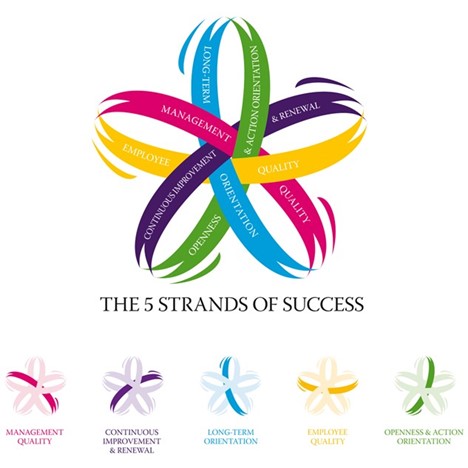

Chapter 4: Management Quality
Effective management boils down to how well you interact and motivate your team. No matter the number of tools or techniques you introduce, their success hinges on your ability to inspire your team to use them to boost their performance. Therefore, a manager’s attitude and behavior play a crucial role in the organization’s success. The best managers, who form the backbone of an HPO, foster a culture of trust, fairness, and belief in their team. They are known for their integrity, commitment, enthusiasm, respect, and a proactive approach to decision-making. They ensure accountability by setting clear expectations for performance. Moreover, they effectively communicate the organization’s values and strategy, ensuring everyone understands and aligns with these principles.
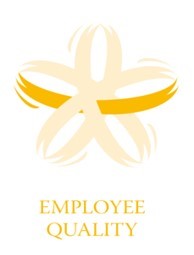
Chapter 5: Employee Quality
For an organization to transform into an HPO, it is crucial to hire and keep employees who are endlessly curious, thrive on challenges, seek responsibility, and are willing to be accountable for their actions. They aim to excel in every situation. These high-performing individuals outshine the average employee, significantly enhancing the organization’s overall effectiveness. With such a team, an organization can truly become an HPO. An HPO therefore focuses on creating a diverse and well-rounded team of managers and staff, characterized by their ability to adapt and bounce back from challenges. It fosters an environment where employees are motivated to grow their skills, aiming for remarkable achievements. This setup not only holds employees accountable for their results but also boosts creativity, leading to superior outcomes.

Chapter 6: Openness and Action Orientation
The guiding principle of an HPO is “a day not learned is a day not lived.” This reflects the deep-rooted curiosity within HPO employees about finding ways to enhance the organization, its processes, and its people. Engaging in discussions, sharing knowledge, and learning are not just activities but key reasons why working in an HPO is enjoyable. It is all about personal and organizational growth. An HPO is thus characterized by its open culture, where management genuinely values employee feedback and actively involves them in critical organizational decisions. Mistakes are not frowned upon but seen as valuable learning opportunities. Employees dedicate significant time to conversations, exchanging ideas, and acquiring new knowledge, all aimed at boosting their own performance and driving the organization forward. Managers lead by example, engaging in experiments and promoting a culture of innovation and change.
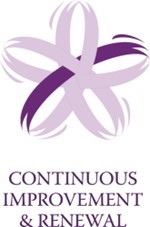
Chapter 7: Continuous Improvement and Renewal
In an HPO, everyone feels a strong sense of duty to achieve the best possible results and to bring out the best in themselves, their colleagues, and the organization. To reach their highest potential, they constantly work on enhancing their current products, services, processes, and core competencies. This means not only improving what the organization already excels at but also innovating and refreshing their strengths to stay ahead of the curve. An HPO actively adapts by updating and distinguishing its strategies to stay relevant. It is committed to continuous improvement, streamlining, and aligning its processes, while also innovating its products and services. This approach helps create new competitive edges to keep up with market changes. Additionally, an HPO efficiently manages its key strengths and outsources activities that are not central to its core mission, ensuring focus and efficiency.
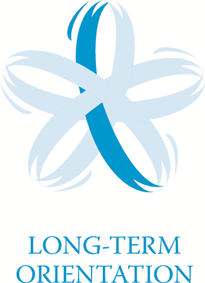
Chapter 8: Long-Term Orientation
In an HPO, the long-term success and sustainability of the organization are always more important than short-term profits. This forward-thinking approach applies to everyone connected with the organization, including customers, suppliers, employees, government bodies, interest groups, and the wider community. The goal is to ensure that all these stakeholders benefit positively from their relationship with the organization. An HPO therefore focuses on growing through strong, long-term partnerships with both suppliers and customers, emphasizing the importance of commitment to all involved parties. When it comes to filling job openings, the organization looks to its high-potential internal candidates first, promoting leadership development from within. It also prioritizes creating a safe and supportive work environment, both physically and mentally, and considers terminating employment only as a very last option.

Chapter 9: HPO Benefits
Shifting to a High-Performance Organization (HPO) brings a wealth of benefits, both non-financial and financial. On the non-financial side, organizations can expect:
• Greater innovation and an enhanced capacity for improvement.
• A positive mindset among employees, leading to a more motivated workforce.
• Increased openness within the organization, fostering a culture of transparency and trust.
• Improved focus and discipline, ensuring that efforts are directed towards meaningful goals.
• Stronger trust with both internal and external partners, enhancing relationships with suppliers and customers.
• Better collaboration and cooperation, both within the organization and externally.
• A more distinctive strategy, setting the organization apart from competitors.
• An improved reputation in the industry, making it easier to attract new clients and top talent.
• A rejuvenated spirit among employees, boosting morale and engagement.
Financially, becoming an HPO can lead to:
• Higher revenue and market share.
• Increased productivity, making the most of resources and efforts.
• Greater profitability, reflecting efficient operations and strong market positioning.
• For non-profit and governmental organizations, the ability to achieve more and deliver higher quality services within the same or a reduced budget.
Overall, transforming into an HPO not only enhances the organization’s financial health but also significantly improves its operational and cultural dynamics.

Chapter 10: HOW versus WHY
The HPO Framework is a scientifically backed structure designed to help practitioners identify how to enhance and sustain organizational performance. However, it is not a simple checklist or a step-by-step guide that can be followed without thought. Instead, it is a flexible framework that managers need to adapt to their organization’s unique circumstances and challenges by creating a tailored approach that suits their specific needs. This might seem like bad news for managers who prefer clear-cut instructions, as the HPO Framework doesn’t offer a one-size-fits-all solution. But for proactive and creative managers, this is an opportunity to apply their knowledge, skills, and creativity to drive their organization towards becoming an HPO.
The HPO Framework outlines what areas need improvement (the “what”), but it’s up to each organization to figure out how to make those improvements (the “how”) based on their context and conditions. This means that after identifying the critical areas for enhancement, the responsibility falls on you and your team to develop and implement strategies that strengthen these areas. Therefore, the HPO Framework acts as a guide, focusing your attention on what truly matters for achieving top-notch performance, without prescribing exactly how to get there.

Chapter 11: Causality
A key question in management has always been whether certain management practices lead to better performance, or if better-performing organizations are simply more capable of implementing these practices. This question is particularly relevant when considering the HPO Framework, a scientifically backed method aimed at achieving and maintaining high performance levels. Research indicates a clear link between the use of the HPO Framework and enhanced organizational performance. More so, evidence suggests that actively focusing on strengthening the five HPO factors can directly lead to improved performance. This insight is crucial for managers, providing them with the assurance that they are using a proven approach to enhance their organization’s performance without wasting their time or that of their employees.

Chapter 12: HPO Diagnosis
An organization can assess its progress towards becoming an HPO by conducting an HPO Diagnosis. This process involves both management and employees completing a questionnaire that asks about the 5 key HPO factors and the 35 specific characteristics that define them. Responses are given on a scale from 1 (indicating no alignment with the characteristic) to 10 (full alignment). After collecting these responses, the average scores for each HPO factor are calculated and reviewed, to identify areas needing improvement to reach HPO status.
The HPO Questionnaire, which is based on the 35 characteristics, has been tested and validated with data from organizations worldwide, ensuring its applicability across different industries and company types. The principles of the HPO framework are universal and do not change based on the organization’s sector. The average scores from the questionnaire highlight the specific areas where an organization must focus its improvement efforts.
Based on the HPO Diagnosis results, the organization develops a set of action plans aimed at addressing the identified areas for improvement. These plans are integrated into an HPO transformation strategy, which is implemented over the course of the next two years. The HPO transformation strategy is regularly reviewed and updated as necessary, based on the completion of planned actions, guiding the organization on its journey to becoming a high-performing entity.
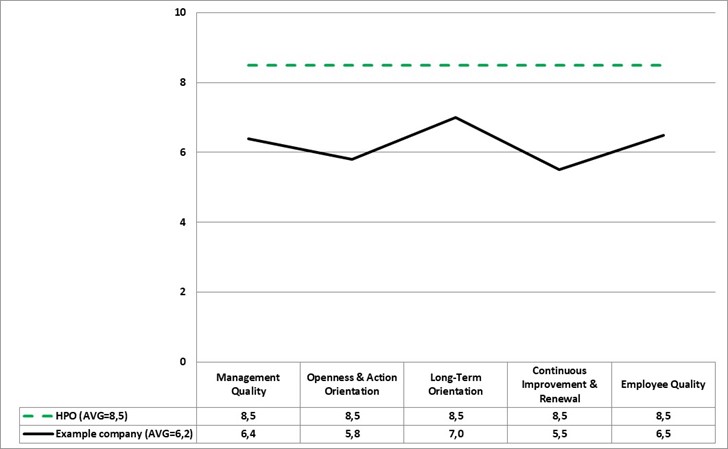
Example HPO scoring graph
Curriculum
High-Performance Organization – Workshop 1 – HPO Foundations
- HPO Definition
- HPO Research
- The HPO Framework
- Management Quality
- Employee Quality
- Openness and Action Orientation
- Continuous Improvement and Renewal
- Long-Term Orientation
- HPO Benefits
- HOW versus WHY
- Causality
- HPO Diagnosis
Distance Learning
Introduction
Welcome to Appleton Greene and thank you for enrolling on the High-Performance Organization corporate training program. You will be learning through our unique facilitation via distance-learning method, which will enable you to practically implement everything that you learn academically. The methods and materials used in your program have been designed and developed to ensure that you derive the maximum benefits and enjoyment possible. We hope that you find the program challenging and fun to do. However, if you have never been a distance-learner before, you may be experiencing some trepidation at the task before you. So we will get you started by giving you some basic information and guidance on how you can make the best use of the modules, how you should manage the materials and what you should be doing as you work through them. This guide is designed to point you in the right direction and help you to become an effective distance-learner. Take a few hours or so to study this guide and your guide to tutorial support for students, while making notes, before you start to study in earnest.
Study environment
You will need to locate a quiet and private place to study, preferably a room where you can easily be isolated from external disturbances or distractions. Make sure the room is well-lit and incorporates a relaxed, pleasant feel. If you can spoil yourself within your study environment, you will have much more of a chance to ensure that you are always in the right frame of mind when you do devote time to study. For example, a nice fire, the ability to play soft soothing background music, soft but effective lighting, perhaps a nice view if possible and a good size desk with a comfortable chair. Make sure that your family know when you are studying and understand your study rules. Your study environment is very important. The ideal situation, if at all possible, is to have a separate study, which can be devoted to you. If this is not possible then you will need to pay a lot more attention to developing and managing your study schedule, because it will affect other people as well as yourself. The better your study environment, the more productive you will be.
Study tools & rules
Try and make sure that your study tools are sufficient and in good working order. You will need to have access to a computer, scanner and printer, with access to the internet. You will need a very comfortable chair, which supports your lower back, and you will need a good filing system. It can be very frustrating if you are spending valuable study time trying to fix study tools that are unreliable, or unsuitable for the task. Make sure that your study tools are up to date. You will also need to consider some study rules. Some of these rules will apply to you and will be intended to help you to be more disciplined about when and how you study. This distance-learning guide will help you and after you have read it you can put some thought into what your study rules should be. You will also need to negotiate some study rules for your family, friends or anyone who lives with you. They too will need to be disciplined in order to ensure that they can support you while you study. It is important to ensure that your family and friends are an integral part of your study team. Having their support and encouragement can prove to be a crucial contribution to your successful completion of the program. Involve them in as much as you can.
Successful distance-learning
Distance-learners are freed from the necessity of attending regular classes or workshops, since they can study in their own way, at their own pace and for their own purposes. But unlike traditional internal training courses, it is the student’s responsibility, with a distance-learning program, to ensure that they manage their own study contribution. This requires strong self-discipline and self-motivation skills and there must be a clear will to succeed. Those students who are used to managing themselves, are good at managing others and who enjoy working in isolation, are more likely to be good distance-learners. It is also important to be aware of the main reasons why you are studying and of the main objectives that you are hoping to achieve as a result. You will need to remind yourself of these objectives at times when you need to motivate yourself. Never lose sight of your long-term goals and your short-term objectives. There is nobody available here to pamper you, or to look after you, or to spoon-feed you with information, so you will need to find ways to encourage and appreciate yourself while you are studying. Make sure that you chart your study progress, so that you can be sure of your achievements and re-evaluate your goals and objectives regularly.
Self-assessment
Appleton Greene training programs are in all cases post-graduate programs. Consequently, you should already have obtained a business-related degree and be an experienced learner. You should therefore already be aware of your study strengths and weaknesses. For example, which time of the day are you at your most productive? Are you a lark or an owl? What study methods do you respond to the most? Are you a consistent learner? How do you discipline yourself? How do you ensure that you enjoy yourself while studying? It is important to understand yourself as a learner and so some self-assessment early on will be necessary if you are to apply yourself correctly. Perform a SWOT analysis on yourself as a student. List your internal strengths and weaknesses as a student and your external opportunities and threats. This will help you later on when you are creating a study plan. You can then incorporate features within your study plan that can ensure that you are playing to your strengths, while compensating for your weaknesses. You can also ensure that you make the most of your opportunities, while avoiding the potential threats to your success.
Accepting responsibility as a student
Training programs invariably require a significant investment, both in terms of what they cost and in the time that you need to contribute to study and the responsibility for successful completion of training programs rests entirely with the student. This is never more apparent than when a student is learning via distance-learning. Accepting responsibility as a student is an important step towards ensuring that you can successfully complete your training program. It is easy to instantly blame other people or factors when things go wrong. But the fact of the matter is that if a failure is your failure, then you have the power to do something about it, it is entirely in your own hands. If it is always someone else’s failure, then you are powerless to do anything about it. All students study in entirely different ways, this is because we are all individuals and what is right for one student, is not necessarily right for another. In order to succeed, you will have to accept personal responsibility for finding a way to plan, implement and manage a personal study plan that works for you. If you do not succeed, you only have yourself to blame.
Planning
By far the most critical contribution to stress, is the feeling of not being in control. In the absence of planning we tend to be reactive and can stumble from pillar to post in the hope that things will turn out fine in the end. Invariably they don’t! In order to be in control, we need to have firm ideas about how and when we want to do things. We also need to consider as many possible eventualities as we can, so that we are prepared for them when they happen. Prescriptive Change, is far easier to manage and control, than Emergent Change. The same is true with distance-learning. It is much easier and much more enjoyable, if you feel that you are in control and that things are going to plan. Even when things do go wrong, you are prepared for them and can act accordingly without any unnecessary stress. It is important therefore that you do take time to plan your studies properly.
Management
Once you have developed a clear study plan, it is of equal importance to ensure that you manage the implementation of it. Most of us usually enjoy planning, but it is usually during implementation when things go wrong. Targets are not met and we do not understand why. Sometimes we do not even know if targets are being met. It is not enough for us to conclude that the study plan just failed. If it is failing, you will need to understand what you can do about it. Similarly if your study plan is succeeding, it is still important to understand why, so that you can improve upon your success. You therefore need to have guidelines for self-assessment so that you can be consistent with performance improvement throughout the program. If you manage things correctly, then your performance should constantly improve throughout the program.
Study objectives & tasks
The first place to start is developing your program objectives. These should feature your reasons for undertaking the training program in order of priority. Keep them succinct and to the point in order to avoid confusion. Do not just write the first things that come into your head because they are likely to be too similar to each other. Make a list of possible departmental headings, such as: Customer Service; E-business; Finance; Globalization; Human Resources; Technology; Legal; Management; Marketing and Production. Then brainstorm for ideas by listing as many things that you want to achieve under each heading and later re-arrange these things in order of priority. Finally, select the top item from each department heading and choose these as your program objectives. Try and restrict yourself to five because it will enable you to focus clearly. It is likely that the other things that you listed will be achieved if each of the top objectives are achieved. If this does not prove to be the case, then simply work through the process again.
Study forecast
As a guide, the Appleton Greene High-Performance Organization corporate training program should take 12-18 months to complete, depending upon your availability and current commitments. The reason why there is such a variance in time estimates is because every student is an individual, with differing productivity levels and different commitments. These differentiations are then exaggerated by the fact that this is a distance-learning program, which incorporates the practical integration of academic theory as an as a part of the training program. Consequently all of the project studies are real, which means that important decisions and compromises need to be made. You will want to get things right and will need to be patient with your expectations in order to ensure that they are. We would always recommend that you are prudent with your own task and time forecasts, but you still need to develop them and have a clear indication of what are realistic expectations in your case. With reference to your time planning: consider the time that you can realistically dedicate towards study with the program every week; calculate how long it should take you to complete the program, using the guidelines featured here; then break the program down into logical modules and allocate a suitable proportion of time to each of them, these will be your milestones; you can create a time plan by using a spreadsheet on your computer, or a personal organizer such as MS Outlook, you could also use a financial forecasting software; break your time forecasts down into manageable chunks of time, the more specific you can be, the more productive and accurate your time management will be; finally, use formulas where possible to do your time calculations for you, because this will help later on when your forecasts need to change in line with actual performance. With reference to your task planning: refer to your list of tasks that need to be undertaken in order to achieve your program objectives; with reference to your time plan, calculate when each task should be implemented; remember that you are not estimating when your objectives will be achieved, but when you will need to focus upon implementing the corresponding tasks; you also need to ensure that each task is implemented in conjunction with the associated training modules which are relevant; then break each single task down into a list of specific to do’s, say approximately ten to do’s for each task and enter these into your study plan; once again you could use MS Outlook to incorporate both your time and task planning and this could constitute your study plan; you could also use a project management software like MS Project. You should now have a clear and realistic forecast detailing when you can expect to be able to do something about undertaking the tasks to achieve your program objectives.
Performance management
It is one thing to develop your study forecast, it is quite another to monitor your progress. Ultimately it is less important whether you achieve your original study forecast and more important that you update it so that it constantly remains realistic in line with your performance. As you begin to work through the program, you will begin to have more of an idea about your own personal performance and productivity levels as a distance-learner. Once you have completed your first study module, you should re-evaluate your study forecast for both time and tasks, so that they reflect your actual performance level achieved. In order to achieve this you must first time yourself while training by using an alarm clock. Set the alarm for hourly intervals and make a note of how far you have come within that time. You can then make a note of your actual performance on your study plan and then compare your performance against your forecast. Then consider the reasons that have contributed towards your performance level, whether they are positive or negative and make a considered adjustment to your future forecasts as a result. Given time, you should start achieving your forecasts regularly.
With reference to time management: time yourself while you are studying and make a note of the actual time taken in your study plan; consider your successes with time-efficiency and the reasons for the success in each case and take this into consideration when reviewing future time planning; consider your failures with time-efficiency and the reasons for the failures in each case and take this into consideration when reviewing future time planning; re-evaluate your study forecast in relation to time planning for the remainder of your training program to ensure that you continue to be realistic about your time expectations. You need to be consistent with your time management, otherwise you will never complete your studies. This will either be because you are not contributing enough time to your studies, or you will become less efficient with the time that you do allocate to your studies. Remember, if you are not in control of your studies, they can just become yet another cause of stress for you.
With reference to your task management: time yourself while you are studying and make a note of the actual tasks that you have undertaken in your study plan; consider your successes with task-efficiency and the reasons for the success in each case; take this into consideration when reviewing future task planning; consider your failures with task-efficiency and the reasons for the failures in each case and take this into consideration when reviewing future task planning; re-evaluate your study forecast in relation to task planning for the remainder of your training program to ensure that you continue to be realistic about your task expectations. You need to be consistent with your task management, otherwise you will never know whether you are achieving your program objectives or not.
Keeping in touch
You will have access to qualified and experienced professors and tutors who are responsible for providing tutorial support for your particular training program. So don’t be shy about letting them know how you are getting on. We keep electronic records of all tutorial support emails so that professors and tutors can review previous correspondence before considering an individual response. It also means that there is a record of all communications between you and your professors and tutors and this helps to avoid any unnecessary duplication, misunderstanding, or misinterpretation. If you have a problem relating to the program, share it with them via email. It is likely that they have come across the same problem before and are usually able to make helpful suggestions and steer you in the right direction. To learn more about when and how to use tutorial support, please refer to the Tutorial Support section of this student information guide. This will help you to ensure that you are making the most of tutorial support that is available to you and will ultimately contribute towards your success and enjoyment with your training program.
Work colleagues and family
You should certainly discuss your program study progress with your colleagues, friends and your family. Appleton Greene training programs are very practical. They require you to seek information from other people, to plan, develop and implement processes with other people and to achieve feedback from other people in relation to viability and productivity. You will therefore have plenty of opportunities to test your ideas and enlist the views of others. People tend to be sympathetic towards distance-learners, so don’t bottle it all up in yourself. Get out there and share it! It is also likely that your family and colleagues are going to benefit from your labors with the program, so they are likely to be much more interested in being involved than you might think. Be bold about delegating work to those who might benefit themselves. This is a great way to achieve understanding and commitment from people who you may later rely upon for process implementation. Share your experiences with your friends and family.
Making it relevant
The key to successful learning is to make it relevant to your own individual circumstances. At all times you should be trying to make bridges between the content of the program and your own situation. Whether you achieve this through quiet reflection or through interactive discussion with your colleagues, client partners or your family, remember that it is the most important and rewarding aspect of translating your studies into real self-improvement. You should be clear about how you want the program to benefit you. This involves setting clear study objectives in relation to the content of the course in terms of understanding, concepts, completing research or reviewing activities and relating the content of the modules to your own situation. Your objectives may understandably change as you work through the program, in which case you should enter the revised objectives on your study plan so that you have a permanent reminder of what you are trying to achieve, when and why.
Distance-learning check-list
Prepare your study environment, your study tools and rules.
Undertake detailed self-assessment in terms of your ability as a learner.
Create a format for your study plan.
Consider your study objectives and tasks.
Create a study forecast.
Assess your study performance.
Re-evaluate your study forecast.
Be consistent when managing your study plan.
Use your Appleton Greene Certified Learning Provider (CLP) for tutorial support.
Make sure you keep in touch with those around you.

Tutorial Support
Programs
Appleton Greene uses standard and bespoke corporate training programs as vessels to transfer business process improvement knowledge into the heart of our clients’ organizations. Each individual program focuses upon the implementation of a specific business process, which enables clients to easily quantify their return on investment. There are hundreds of established Appleton Greene corporate training products now available to clients within customer services, e-business, finance, globalization, human resources, information technology, legal, management, marketing and production. It does not matter whether a client’s employees are located within one office, or an unlimited number of international offices, we can still bring them together to learn and implement specific business processes collectively. Our approach to global localization enables us to provide clients with a truly international service with that all important personal touch. Appleton Greene corporate training programs can be provided virtually or locally and they are all unique in that they individually focus upon a specific business function. They are implemented over a sustainable period of time and professional support is consistently provided by qualified learning providers and specialist consultants.
Support available
You will have a designated Certified Learning Provider (CLP) and an Accredited Consultant and we encourage you to communicate with them as much as possible. In all cases tutorial support is provided online because we can then keep a record of all communications to ensure that tutorial support remains consistent. You would also be forwarding your work to the tutorial support unit for evaluation and assessment. You will receive individual feedback on all of the work that you undertake on a one-to-one basis, together with specific recommendations for anything that may need to be changed in order to achieve a pass with merit or a pass with distinction and you then have as many opportunities as you may need to re-submit project studies until they meet with the required standard. Consequently the only reason that you should really fail (CLP) is if you do not do the work. It makes no difference to us whether a student takes 12 months or 18 months to complete the program, what matters is that in all cases the same quality standard will have been achieved.
Support Process
Please forward all of your future emails to the designated (CLP) Tutorial Support Unit email address that has been provided and please do not duplicate or copy your emails to other AGC email accounts as this will just cause unnecessary administration. Please note that emails are always answered as quickly as possible but you will need to allow a period of up to 20 business days for responses to general tutorial support emails during busy periods, because emails are answered strictly within the order in which they are received. You will also need to allow a period of up to 30 business days for the evaluation and assessment of project studies. This does not include weekends or public holidays. Please therefore kindly allow for this within your time planning. All communications are managed online via email because it enables tutorial service support managers to review other communications which have been received before responding and it ensures that there is a copy of all communications retained on file for future reference. All communications will be stored within your personal (CLP) study file here at Appleton Greene throughout your designated study period. If you need any assistance or clarification at any time, please do not hesitate to contact us by forwarding an email and remember that we are here to help. If you have any questions, please list and number your questions succinctly and you can then be sure of receiving specific answers to each and every query.
Time Management
It takes approximately 1 Year to complete the High-Performance Organization corporate training program, incorporating 12 x 6-hour monthly workshops. Each student will also need to contribute approximately 4 hours per week over 1 Year of their personal time. Students can study from home or work at their own pace and are responsible for managing their own study plan. There are no formal examinations and students are evaluated and assessed based upon their project study submissions, together with the quality of their internal analysis and supporting documents. They can contribute more time towards study when they have the time to do so and can contribute less time when they are busy. All students tend to be in full time employment while studying and the High-Performance Organization program is purposely designed to accommodate this, so there is plenty of flexibility in terms of time management. It makes no difference to us at Appleton Greene, whether individuals take 12-18 months to complete this program. What matters is that in all cases the same standard of quality will have been achieved with the standard and bespoke programs that have been developed.
Distance Learning Guide
The distance learning guide should be your first port of call when starting your training program. It will help you when you are planning how and when to study, how to create the right environment and how to establish the right frame of mind. If you can lay the foundations properly during the planning stage, then it will contribute to your enjoyment and productivity while training later. The guide helps to change your lifestyle in order to accommodate time for study and to cultivate good study habits. It helps you to chart your progress so that you can measure your performance and achieve your goals. It explains the tools that you will need for study and how to make them work. It also explains how to translate academic theory into practical reality. Spend some time now working through your distance learning guide and make sure that you have firm foundations in place so that you can make the most of your distance learning program. There is no requirement for you to attend training workshops or classes at Appleton Greene offices. The entire program is undertaken online, program course manuals and project studies are administered via the Appleton Greene web site and via email, so you are able to study at your own pace and in the comfort of your own home or office as long as you have a computer and access to the internet.
How To Study
The how to study guide provides students with a clear understanding of the Appleton Greene facilitation via distance learning training methods and enables students to obtain a clear overview of the training program content. It enables students to understand the step-by-step training methods used by Appleton Greene and how course manuals are integrated with project studies. It explains the research and development that is required and the need to provide evidence and references to support your statements. It also enables students to understand precisely what will be required of them in order to achieve a pass with merit and a pass with distinction for individual project studies and provides useful guidance on how to be innovative and creative when developing your Unique Program Proposition (UPP).
Tutorial Support
Tutorial support for the Appleton Greene High-Performance Organization corporate training program is provided online either through the Appleton Greene Client Support Portal (CSP), or via email. All tutorial support requests are facilitated by a designated Program Administration Manager (PAM). They are responsible for deciding which professor or tutor is the most appropriate option relating to the support required and then the tutorial support request is forwarded onto them. Once the professor or tutor has completed the tutorial support request and answered any questions that have been asked, this communication is then returned to the student via email by the designated Program Administration Manager (PAM). This enables all tutorial support, between students, professors and tutors, to be facilitated by the designated Program Administration Manager (PAM) efficiently and securely through the email account. You will therefore need to allow a period of up to 20 business days for responses to general support queries and up to 30 business days for the evaluation and assessment of project studies, because all tutorial support requests are answered strictly within the order in which they are received. This does not include weekends or public holidays. Consequently you need to put some thought into the management of your tutorial support procedure in order to ensure that your study plan is feasible and to obtain the maximum possible benefit from tutorial support during your period of study. Please retain copies of your tutorial support emails for future reference. Please ensure that ALL of your tutorial support emails are set out using the format as suggested within your guide to tutorial support. Your tutorial support emails need to be referenced clearly to the specific part of the course manual or project study which you are working on at any given time. You also need to list and number any questions that you would like to ask, up to a maximum of five questions within each tutorial support email. Remember the more specific you can be with your questions the more specific your answers will be too and this will help you to avoid any unnecessary misunderstanding, misinterpretation, or duplication. The guide to tutorial support is intended to help you to understand how and when to use support in order to ensure that you get the most out of your training program. Appleton Greene training programs are designed to enable you to do things for yourself. They provide you with a structure or a framework and we use tutorial support to facilitate students while they practically implement what they learn. In other words, we are enabling students to do things for themselves. The benefits of distance learning via facilitation are considerable and are much more sustainable in the long-term than traditional short-term knowledge sharing programs. Consequently you should learn how and when to use tutorial support so that you can maximize the benefits from your learning experience with Appleton Greene. This guide describes the purpose of each training function and how to use them and how to use tutorial support in relation to each aspect of the training program. It also provides useful tips and guidance with regard to best practice.
Tutorial Support Tips
Students are often unsure about how and when to use tutorial support with Appleton Greene. This Tip List will help you to understand more about how to achieve the most from using tutorial support. Refer to it regularly to ensure that you are continuing to use the service properly. Tutorial support is critical to the success of your training experience, but it is important to understand when and how to use it in order to maximize the benefit that you receive. It is no coincidence that those students who succeed are those that learn how to be positive, proactive and productive when using tutorial support.
Be positive and friendly with your tutorial support emails
Remember that if you forward an email to the tutorial support unit, you are dealing with real people. “Do unto others as you would expect others to do unto you”. If you are positive, complimentary and generally friendly in your emails, you will generate a similar response in return. This will be more enjoyable, productive and rewarding for you in the long-term.
Think about the impression that you want to create
Every time that you communicate, you create an impression, which can be either positive or negative, so put some thought into the impression that you want to create. Remember that copies of all tutorial support emails are stored electronically and tutors will always refer to prior correspondence before responding to any current emails. Over a period of time, a general opinion will be arrived at in relation to your character, attitude and ability. Try to manage your own frustrations, mood swings and temperament professionally, without involving the tutorial support team. Demonstrating frustration or a lack of patience is a weakness and will be interpreted as such. The good thing about communicating in writing, is that you will have the time to consider your content carefully, you can review it and proof-read it before sending your email to Appleton Greene and this should help you to communicate more professionally, consistently and to avoid any unnecessary knee-jerk reactions to individual situations as and when they may arise. Please also remember that the CLP Tutorial Support Unit will not just be responsible for evaluating and assessing the quality of your work, they will also be responsible for providing recommendations to other learning providers and to client contacts within the Appleton Greene global client network, so do be in control of your own emotions and try to create a good impression.
Remember that quality is preferred to quantity
Please remember that when you send an email to the tutorial support team, you are not using Twitter or Text Messaging. Try not to forward an email every time that you have a thought. This will not prove to be productive either for you or for the tutorial support team. Take time to prepare your communications properly, as if you were writing a professional letter to a business colleague and make a list of queries that you are likely to have and then incorporate them within one email, say once every month, so that the tutorial support team can understand more about context, application and your methodology for study. Get yourself into a consistent routine with your tutorial support requests and use the tutorial support template provided with ALL of your emails. The (CLP) Tutorial Support Unit will not spoon-feed you with information. They need to be able to evaluate and assess your tutorial support requests carefully and professionally.
Be specific about your questions in order to receive specific answers
Try not to write essays by thinking as you are writing tutorial support emails. The tutorial support unit can be unclear about what in fact you are asking, or what you are looking to achieve. Be specific about asking questions that you want answers to. Number your questions. You will then receive specific answers to each and every question. This is the main purpose of tutorial support via email.
Keep a record of your tutorial support emails
It is important that you keep a record of all tutorial support emails that are forwarded to you. You can then refer to them when necessary and it avoids any unnecessary duplication, misunderstanding, or misinterpretation.
Individual training workshops or telephone support
Please be advised that Appleton Greene does not provide separate or individual tutorial support meetings, workshops, or provide telephone support for individual students. Appleton Greene is an equal opportunities learning and service provider and we are therefore understandably bound to treat all students equally. We cannot therefore broker special financial or study arrangements with individual students regardless of the circumstances. All tutorial support is provided online and this enables Appleton Greene to keep a record of all communications between students, professors and tutors on file for future reference, in accordance with our quality management procedure and your terms and conditions of enrolment. All tutorial support is provided online via email because it enables us to have time to consider support content carefully, it ensures that you receive a considered and detailed response to your queries. You can number questions that you would like to ask, which relate to things that you do not understand or where clarification may be required. You can then be sure of receiving specific answers to each individual query. You will also then have a record of these communications and of all tutorial support, which has been provided to you. This makes tutorial support administration more productive by avoiding any unnecessary duplication, misunderstanding, or misinterpretation.
Tutorial Support Email Format
You should use this tutorial support format if you need to request clarification or assistance while studying with your training program. Please note that ALL of your tutorial support request emails should use the same format. You should therefore set up a standard email template, which you can then use as and when you need to. Emails that are forwarded to Appleton Greene, which do not use the following format, may be rejected and returned to you by the (CLP) Program Administration Manager. A detailed response will then be forwarded to you via email usually within 20 business days of receipt for general support queries and 30 business days for the evaluation and assessment of project studies. This does not include weekends or public holidays. Your tutorial support request, together with the corresponding TSU reply, will then be saved and stored within your electronic TSU file at Appleton Greene for future reference.
Subject line of your email
Please insert: Appleton Greene (CLP) Tutorial Support Request: (Your Full Name) (Date), within the subject line of your email.
Main body of your email
Please insert:
1. Appleton Greene Certified Learning Provider (CLP) Tutorial Support Request
2. Your Full Name
3. Date of TS request
4. Preferred email address
5. Backup email address
6. Course manual page name or number (reference)
7. Project study page name or number (reference)
Subject of enquiry
Please insert a maximum of 50 words (please be succinct)
Briefly outline the subject matter of your inquiry, or what your questions relate to.
Question 1
Maximum of 50 words (please be succinct)
Maximum of 50 words (please be succinct)
Question 3
Maximum of 50 words (please be succinct)
Question 4
Maximum of 50 words (please be succinct)
Question 5
Maximum of 50 words (please be succinct)
Please note that a maximum of 5 questions is permitted with each individual tutorial support request email.
Procedure
* List the questions that you want to ask first, then re-arrange them in order of priority. Make sure that you reference them, where necessary, to the course manuals or project studies.
* Make sure that you are specific about your questions and number them. Try to plan the content within your emails to make sure that it is relevant.
* Make sure that your tutorial support emails are set out correctly, using the Tutorial Support Email Format provided here.
* Save a copy of your email and incorporate the date sent after the subject title. Keep your tutorial support emails within the same file and in date order for easy reference.
* Allow up to 20 business days for a response to general tutorial support emails and up to 30 business days for the evaluation and assessment of project studies, because detailed individual responses will be made in all cases and tutorial support emails are answered strictly within the order in which they are received.
* Emails can and do get lost. So if you have not received a reply within the appropriate time, forward another copy or a reminder to the tutorial support unit to be sure that it has been received but do not forward reminders unless the appropriate time has elapsed.
* When you receive a reply, save it immediately featuring the date of receipt after the subject heading for easy reference. In most cases the tutorial support unit replies to your questions individually, so you will have a record of the questions that you asked as well as the answers offered. With project studies however, separate emails are usually forwarded by the tutorial support unit, so do keep a record of your own original emails as well.
* Remember to be positive and friendly in your emails. You are dealing with real people who will respond to the same things that you respond to.
* Try not to repeat questions that have already been asked in previous emails. If this happens the tutorial support unit will probably just refer you to the appropriate answers that have already been provided within previous emails.
* If you lose your tutorial support email records you can write to Appleton Greene to receive a copy of your tutorial support file, but a separate administration charge may be levied for this service.

How To Study
Your Certified Learning Provider (CLP) and Accredited Consultant can help you to plan a task list for getting started so that you can be clear about your direction and your priorities in relation to your training program. It is also a good way to introduce yourself to the tutorial support team.
Planning your study environment
Your study conditions are of great importance and will have a direct effect on how much you enjoy your training program. Consider how much space you will have, whether it is comfortable and private and whether you are likely to be disturbed. The study tools and facilities at your disposal are also important to the success of your distance-learning experience. Your tutorial support unit can help with useful tips and guidance, regardless of your starting position. It is important to get this right before you start working on your training program.
Planning your program objectives
It is important that you have a clear list of study objectives, in order of priority, before you start working on your training program. Your tutorial support unit can offer assistance here to ensure that your study objectives have been afforded due consideration and priority.
Planning how and when to study
Distance-learners are freed from the necessity of attending regular classes, since they can study in their own way, at their own pace and for their own purposes. This approach is designed to let you study efficiently away from the traditional classroom environment. It is important however, that you plan how and when to study, so that you are making the most of your natural attributes, strengths and opportunities. Your tutorial support unit can offer assistance and useful tips to ensure that you are playing to your strengths.
Planning your study tasks
You should have a clear understanding of the study tasks that you should be undertaking and the priority associated with each task. These tasks should also be integrated with your program objectives. The distance learning guide and the guide to tutorial support for students should help you here, but if you need any clarification or assistance, please contact your tutorial support unit.
Planning your time
You will need to allocate specific times during your calendar when you intend to study if you are to have a realistic chance of completing your program on time. You are responsible for planning and managing your own study time, so it is important that you are successful with this. Your tutorial support unit can help you with this if your time plan is not working.
Keeping in touch
Consistency is the key here. If you communicate too frequently in short bursts, or too infrequently with no pattern, then your management ability with your studies will be questioned, both by you and by your tutorial support unit. It is obvious when a student is in control and when one is not and this will depend how able you are at sticking with your study plan. Inconsistency invariably leads to in-completion.
Charting your progress
Your tutorial support team can help you to chart your own study progress. Refer to your distance learning guide for further details.
Making it work
To succeed, all that you will need to do is apply yourself to undertaking your training program and interpreting it correctly. Success or failure lies in your hands and your hands alone, so be sure that you have a strategy for making it work. Your Certified Learning Provider (CLP) and Accredited Consultant can guide you through the process of program planning, development and implementation.
Reading methods
Interpretation is often unique to the individual but it can be improved and even quantified by implementing consistent interpretation methods. Interpretation can be affected by outside interference such as family members, TV, or the Internet, or simply by other thoughts which are demanding priority in our minds. One thing that can improve our productivity is using recognized reading methods. This helps us to focus and to be more structured when reading information for reasons of importance, rather than relaxation.
Speed reading
When reading through course manuals for the first time, subconsciously set your reading speed to be just fast enough that you cannot dwell on individual words or tables. With practice, you should be able to read an A4 sheet of paper in one minute. You will not achieve much in the way of a detailed understanding, but your brain will retain a useful overview. This overview will be important later on and will enable you to keep individual issues in perspective with a more generic picture because speed reading appeals to the memory part of the brain. Do not worry about what you do or do not remember at this stage.
Content reading
Once you have speed read everything, you can then start work in earnest. You now need to read a particular section of your course manual thoroughly, by making detailed notes while you read. This process is called Content Reading and it will help to consolidate your understanding and interpretation of the information that has been provided.
Making structured notes on the course manuals
When you are content reading, you should be making detailed notes, which are both structured and informative. Make these notes in a MS Word document on your computer, because you can then amend and update these as and when you deem it to be necessary. List your notes under three headings: 1. Interpretation – 2. Questions – 3. Tasks. The purpose of the 1st section is to clarify your interpretation by writing it down. The purpose of the 2nd section is to list any questions that the issue raises for you. The purpose of the 3rd section is to list any tasks that you should undertake as a result. Anyone who has graduated with a business-related degree should already be familiar with this process.
Organizing structured notes separately
You should then transfer your notes to a separate study notebook, preferably one that enables easy referencing, such as a MS Word Document, a MS Excel Spreadsheet, a MS Access Database, or a personal organizer on your cell phone. Transferring your notes allows you to have the opportunity of cross-checking and verifying them, which assists considerably with understanding and interpretation. You will also find that the better you are at doing this, the more chance you will have of ensuring that you achieve your study objectives.
Question your understanding
Do challenge your understanding. Explain things to yourself in your own words by writing things down.
Clarifying your understanding
If you are at all unsure, forward an email to your tutorial support unit and they will help to clarify your understanding.
Question your interpretation
Do challenge your interpretation. Qualify your interpretation by writing it down.
Clarifying your interpretation
If you are at all unsure, forward an email to your tutorial support unit and they will help to clarify your interpretation.
Qualification Requirements
The student will need to successfully complete the project study and all of the exercises relating to the High-Performance Organization corporate training program, achieving a pass with merit or distinction in each case, in order to qualify as an Accredited High-Performance Organization Specialist (APTS). All monthly workshops need to be tried and tested within your company. These project studies can be completed in your own time and at your own pace and in the comfort of your own home or office. There are no formal examinations, assessment is based upon the successful completion of the project studies. They are called project studies because, unlike case studies, these projects are not theoretical, they incorporate real program processes that need to be properly researched and developed. The project studies assist us in measuring your understanding and interpretation of the training program and enable us to assess qualification merits. All of the project studies are based entirely upon the content within the training program and they enable you to integrate what you have learnt into your corporate training practice.
High-Performance Organization – Grading Contribution
Project Study – Grading Contribution
Customer Service – 10%
E-business – 05%
Finance – 10%
Globalization – 10%
Human Resources – 10%
Information Technology – 10%
Legal – 05%
Management – 10%
Marketing – 10%
Production – 10%
Education – 05%
Logistics – 05%
TOTAL GRADING – 100%
Qualification grades
A mark of 90% = Pass with Distinction.
A mark of 75% = Pass with Merit.
A mark of less than 75% = Fail.
If you fail to achieve a mark of 75% with a project study, you will receive detailed feedback from the Certified Learning Provider (CLP) and/or Accredited Consultant, together with a list of tasks which you will need to complete, in order to ensure that your project study meets with the minimum quality standard that is required by Appleton Greene. You can then re-submit your project study for further evaluation and assessment. Indeed you can re-submit as many drafts of your project studies as you need to, until such a time as they eventually meet with the required standard by Appleton Greene, so you need not worry about this, it is all part of the learning process.
When marking project studies, Appleton Greene is looking for sufficient evidence of the following:
Pass with merit
A satisfactory level of program understanding
A satisfactory level of program interpretation
A satisfactory level of project study content presentation
A satisfactory level of Unique Program Proposition (UPP) quality
A satisfactory level of the practical integration of academic theory
Pass with distinction
An exceptional level of program understanding
An exceptional level of program interpretation
An exceptional level of project study content presentation
An exceptional level of Unique Program Proposition (UPP) quality
An exceptional level of the practical integration of academic theory
Preliminary Analysis
André de Waal, What Makes A High Performance Organization, five validated factors of competitive advantage that apply worldwide, Warden Press, 2019
André A. de Waal, High Performance Managerial leadership, best ideas from around the world, Praeger, 2020
Course Manuals 1-12
Course Manual 1: HPO Definition
In conversation with a CEO – A Beautiful Sunset
Contentedly, Peter Mueller looked out the window at the beautiful sunset. As a red fireball, the sun slowly sank below the horizon. It was a perfect end to a fantastic day, a finale that exactly reflected Peter’s mood. Smiling, he turned his chair back to the desk. “Where were we?” he asked the journalist who was interviewing him.
“You were just telling me how, right after you became the chief executive officer here, you started changing your company. You said those changes have significantly improved the performance of the organization, making it number one in the industry for several years now,” she replied.
Peter nodded. “That’s right, Tanya, that’s exactly what happened.”
The journalist continued, “I would really appreciate it if you could tell me what those changes were. Then I can use that information to write a well-founded article about the high-performance organization.”
Peter leaned back slightly and pressed his fingertips together. “The high-performance organization,” he murmured, “what a concept…”
The journalist looked at him questioningly.
“Oh sorry,” said Peter out loud. “I’ll explain it to you. When I took over this company, the concept of the high-performance organizations was just starting to gain traction, after it had been around for a while. I even believe…” He looked at the agenda lying open on the large glass desk, dated December 13. “What a coincidence. It’s exactly seven years ago today that I was at a seminar about creating a high-performance organization. The seminar was called the path or the route to Nirvana or something like that. I found it a bit of a strange title, but… I have indeed created a sort of Nirvana here. I’m not boring you, am I?”
Tanya quickly assured him that was not the case and urged him to continue with his story. The CEO leaned back a bit further in his chair and began to explain. “First, I’ll give you the definition of a high-performance organizations. It’s an organization that achieves better financial and non-financial results than its competitors or similar organizations over a period of at least five to ten years.”
Tanya nodded as she eagerly took notes.
“It sounds even nicer when you say ‘peer group’. That’s the group of organizations you normally compare yourself with, in whatever way.”
The journalist looked up from her notes. “Peer group, does this mean high-performance organizations only occur in the profit sector?”
Peter shook his head. “Certainly not. High-performance organizations, or HPOs as I always call them, can also occur in the non-profit sector and in government. After all, you’re talking about a peer group, and that exists in those sectors too. For example, a general hospital can compare itself to other general hospitals, and a municipality can compare itself to other municipalities of the same size. No, the concept of HPOs is fortunately not reserved only for profit companies.
“Good thing, too. But I mean to ask, that time period, five years, where does that come from?”
“Five to ten years you mean. It is indeed a long time, especially in today’s fast-paced world. But there’s a thought behind that, and it has to do with a company’s strategy. Do you know how far a strategic plan looks ahead?”
“What do you mean?” Tanya looked questioningly at the CEO.
“I mean, over what time period does an organization make a strategic plan.”
“Aha. I suppose five to ten years then.”
“No, that was in the past, now it’s much shorter. In general, for most companies a strategic plan covers three years. Now the idea is that an organization must successfully execute its strategic plan to achieve good results. The strategy lasts three years, so to properly evaluate the effect of all this planning, you have to look well beyond those three years. Hence the five years in the HPO definition.”
“And the ten years then?”
“The idea behind that is that you must have experienced at least one economic downturn, and historically, an upturn and downturn occur at least once a decade. If you still perform better than the peer group during that dip, then you are a real HPO. Then you have not only done well during economically good times, as everyone can sail well with a tailwind, but also when times are tough. It’s then not about having luck, you really have it down as an organization.”
“We felt we had stayed in our comfort zone for too long. Our organization had been doing quite well in recent years and would continue to do so – or, at least, that’s what we thought. However, various changes in the environment started to hurt us more and more, making it painfully clear that we were losing our value to clients. We, as management, realized that it was not us but the employees who were the decisive factor for the results of the organization. Our people at the counters took a decision every six minutes, that is 80 decisions per day per person. And with 400 counter clerks that meant 32,000 decisions any given day! Such a number could never be regulated by protocols or instructions from ‘above’ so clerks had to take these decisions autonomously. And if they would simply follow a checklist provided to them by us, they would not be thinking about client needs while making decisions and we would never create added value for our clients. We became aware of the need to build an organization that would facilitate employees making good decisions and turn the work floor into the most important layer of the organization. We needed to become a high performance organization.”
Does this “lamentation’’ of a CEO sound familiar? What about these stories, called ‘Bad organization, good organization’?
Recently, a friend’s grandmother, who has significant hearing loss, received a call from a telephone company offering a special, more affordable plan for people like her. Excited by the promise of a cheaper option, she agreed to switch services. However, a week later, my friend couldn’t reach her on the phone, getting a constant busy signal. Concerned for his elderly grandmother, he decided to visit her and discovered the mix-up: in the process of switching, her old service had been cut off before the new one was activated, likely due to her not fully understanding the instructions given over the phone.
My friend immediately contacted the new phone company to expedite his grandmother’s connection. However, he was told to call a different number and leave a request, with a waiting period of ten days. Despite the urgency and his grandmother’s vulnerability, the company refused to speed up the process or make an exception.
After ten days of waiting, my friend called his grandmother again, only to find the line still busy. When he called the company to inquire, he was informed that his initial reconnection request had been lost due to a system error on the day he made it. He was asked to submit another request and wait another ten days, with the company firmly stating no exceptions could be made, even in his grandmother’s case, to maintain fairness and manage their workload.
Another friend of mine recently booked a romantic city trip. Upon arrival at the hotel, he and his wife were warmly greeted, and the check-in process was handled efficiently and politely by the receptionist. My friend had made the reservation online and had specifically requested an anti-allergenic, non-smoking room due to his sensitivity to dust. He also asked for twin beds, given the significant difference in height and build between him and his wife.
The receptionist cheerfully offered them a specially prepared anti-allergenic room with a king-size bed. When my friend reminded him of the request for twin beds, the receptionist apologized profusely and offered them drinks at the bar while housekeeping prepared the correct room. In less than ten minutes, the room was ready, so quickly that they hadn’t even finished their drinks. To make up for the inconvenience, a fruit bowl was waiting in their room, and about ten minutes later, the hotel manager personally checked in to ensure everything was to their satisfaction. Throughout their stay, they were regularly asked if everything was still okay. My friend said he would always choose this hotel chain in the future.
Imagine if every organization operated like that exemplary hotel. Life would be significantly more enjoyable for us as consumers, and organizations would likely see increased profits. However, the reality is that many companies struggle to maintain high-quality service. Even organizations that once excelled are gradually slipping into mediocrity. This reflects a common sports saying: reaching the top isn’t as hard as staying there. Moreover, the old belief that “the customer is king” seems to be fading. Companies often treat us like royalty until they secure our business; after that, the attention we receive tends to wane. Therefore, the quest to identify what makes a company truly outstanding focuses on traits that ensure sustained excellence, not just one-time successes.
The interest in becoming a High-Performance Organization (HPO) has been strong since the publication of “In Search of Excellence” by Peters and Waterman in 1982. This interest grew with the success of “Built to Last” by Collins and Porras in 1994 and “Good to Great” by Collins in 2001, alongside challenges like increasing globalization, intense competition, economic downturns, financial scandals, health crises like the Corona epidemic, and the ongoing global talent war. Managers are keenly searching for strategies to not just survive these challenges but to seize opportunities, grow, and prosper. In every sector, there are organizations that outperform their peers, becoming desirable places to work. Such a high-performing organization is defined as an organization that achieves financial and non-financial results that are exceedingly better than those of its peer group over a period of time of five years or more, by focusing in a disciplined way on that which really matters to the organization.
This definition highlights several key points about what makes an organization a High-Performance Organization (HPO):
• High performance is comparative. Essentially, an organization’s performance is considered “high” only when it stands out from its competitors or similar organizations. For profit-driven companies, this means outperforming other businesses in their sector. For non-profits and government agencies, it involves excelling beyond comparable entities.
• Sustained success is crucial. Organizations that excel for just one to three years do not qualify as HPOs. True high performance is about achieving and maintaining excellent results over a longer period, specifically five years or more. This is not about short-term luck; it is about consistently doing the right things well. The five-year mark is significant because it is beyond the typical three-year strategic planning cycle most organizations use to try to outperform their peers. It is also a substantial portion of the average organization’s lifespan, which is around 12.5 years and decreasing. Excelling for nearly half of an organization’s expected lifespan is a strong indicator of being an HPO.
• Consistent growth is challenging. Recent studies and case studies show that maintaining steady growth is tough for any organization. HPOs stand out because they understand what drives their long-term success. They avoid getting sidetracked by the latest management trends and focus on refining what already works for them—be it processes, systems, or behaviors. Their efforts are always directed towards enhancing these elements. HPOs only venture into new areas if it strengthens their core capabilities and competences. They know that straying from their proven path could lead to trouble and a decline in performance, so they maintain strict discipline in their strategic approach.
So, what exactly is an HPO? It is not just another project. An HPO is an organization that inspires, motivates, and challenges both its employees and customers. Size does not always matter; what is crucial is that everyone works together on the right things. This collective effort can turn any team or department into the foundation of an HPO. Scientific research and the practical experiences of hundreds of organizations worldwide offer insights into how you can transform your organization into an HPO. This knowledge is invaluable, much like the African proverb says: ‘water for life’.
Many organizations are continuously initiating changes and improvements. In today’s business world, there is a trend of constantly starting new projects as a way to show a commitment to change, improvement, or growth. But how do these initiatives fit within the HPO Framework:
• The HPO Framework helps prioritize initiatives by ensuring they are clearly aimed at boosting organizational performance. This means every project is chosen and designed with the goal of making the organization better.
• It acts as a tool for evaluating the effectiveness of these initiatives, allowing organizations to measure the impact of their actions and determine how successful they have been.
• The framework discourages the habit of constantly starting new, isolated projects. Instead, it promotes a more focused and integrated approach to improvement.
• It ensures that initiatives are not just the responsibility of management or individuals but are embraced by the entire organization. This collective ownership ensures that changes are more widely accepted and implemented.
• The HPO Framework helps avoid duplication and redundancy in initiatives. By providing a clear overview and direction, it ensures that efforts are not wasted on repeating or overlapping projects.
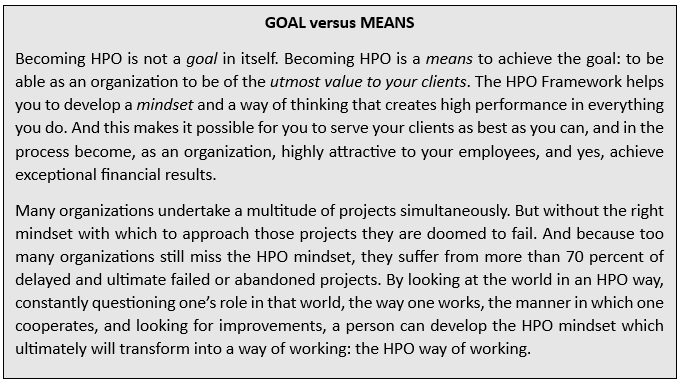
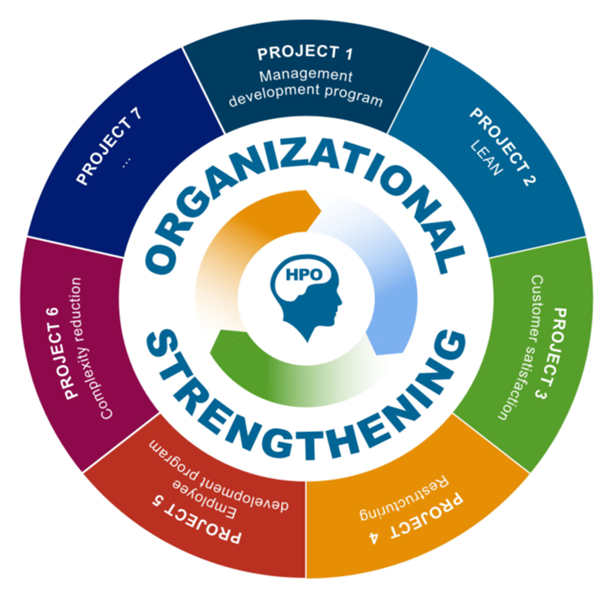

Case Study – HPO Gives Red Bull Wings: A Managerial Case Study
In the 1980s, Austrian entrepreneur Dietrich Mateschitz discovered Krating Daeng, an Asian energy drink, during his travels in Asia. Inspired by its effects, particularly in alleviating jet lag, Mateschitz spent five years developing a new beverage concept. In 1987, Red Bull Energy Drink was launched in Austria, marking the birth of not just a new product but a whole new product category: the energy drink. Today, Red Bull is sold in 171 countries, employs nearly 12,000 people, including 2,000 athletes, and has grown from selling 1 million cans in its first year to over 6.1 billion cans annually, generating a revenue of 6 billion and becoming the market leader in the sports and energy drink segment.
From its inception, Red Bull has been privately owned, a strategic choice that has allowed it to focus on long-term brand building and investment in functional drinks. By outsourcing its entire production, Red Bull has concentrated on its core business: marketing and selling “functional drinks” that help improve concentration, alertness, mental performance, and combat fatigue. Red Bull’s headquarters in Fuschl Am See, Austria, embodies the company’s commitment to its long-term vision and its dedication to providing consumers with the energy and focus needed for their demanding lives.
Red Bull Netherlands: A Subsidiary in Action
Red Bull Netherlands, located in Amsterdam, operates as a fully-owned subsidiary of the Austrian Red Bull GmbH. With 90 employees and about 200 students, including 65 ‘Wings’ who drive around in iconic minis distributing Red Bull cans, the Dutch office embodies the company’s innovative approach to marketing and brand engagement. These students are not just temporary staff but are considered an integral part of the team, serving as the company’s eyes and ears on the ground and a vital part of Red Bull’s talent pipeline. The mission of Red Bull Netherlands is to lead the energy drink market and successfully build Red Bull TV. This involves not just selling cans but creating an experience around the brand, leveraging content generated from athletes and cultural talents, and organizing events that emphasize the company’s ethos of “Giving wings to people and ideas.” This approach has helped turn brand enthusiasts into loyal customers. The Red Bull manifesto encapsulates the company’s vision and values, including “Winged,” “Making the Impossible Possible,” and “Yeeeh or Neeeh,” which guide employee behavior and communication. This manifesto is a constant reminder to all employees of the company’s mission and the high standards it sets for innovation and performance.
Quality of Management
Red Bull’s management quality is exemplified by its strategic leadership and vision, particularly in recognizing the need for a shift from a sales-driven focus to sustainable organizational growth. The leadership’s decision to adopt the HPO framework underscores a commitment to excellence and long-term planning. Managers are trained in personal and team leadership, coaching, and positive feedback, fostering a culture where leadership is not just about directing but empowering and inspiring. The management is characterized by its action-oriented approach, where decisions are made swiftly to capitalize on opportunities or address challenges. This agility is a hallmark of Red Bull’s management quality, ensuring that the organization remains dynamic and competitive.
Openness and Action Orientation
Red Bull promotes an open culture where feedback is encouraged, and mistakes are viewed as learning opportunities. This openness fosters innovation and continuous improvement, as employees feel valued and empowered to share their ideas and suggestions. The company’s action orientation is evident in its willingness to embrace change and pursue innovation. The company’s history of organizing groundbreaking events and engaging in unique marketing strategies reflects its commitment to staying ahead of industry trends and continuously reinventing its approach to business.
Long-Term Orientation
Red Bull demonstrates its long-term orientation through its commitment to sustainability and social responsibility. Initiatives like the ‘Wings for Life World Run’ and efforts to minimize environmental impact through recycling and optimized transport logistics underscore Red Bull’s dedication to making a positive impact beyond its immediate business interests. The company’s focus on long-term growth is also evident in its strategic investments in brand building, employee development, and innovation. By prioritizing long-term success over short-term gains, Red Bull ensures its resilience and sustainability in a competitive market.
Continuous Improvement and Renewal
Red Bull is committed to continuous improvement, constantly seeking ways to enhance its products, services, and processes. This commitment is reflected in its adoption of the HPO framework, which serves as a guide for ongoing organizational development and excellence. Innovation is at the heart of Red Bull’s approach to continuous improvement and renewal. The company’s willingness to experiment with new ideas, even when they lead to failures like the frisbox, highlights its dedication to learning and evolving.
Employee Quality
Red Bull places a strong emphasis on the quality of its employees, offering extensive training and development opportunities to foster their growth and empowerment. The company’s approach to treating students as integral team members and its investment in the Red Bull Academy illustrate its commitment to nurturing talent. Red Bull excels in aligning individual employees’ goals with organizational objectives, ensuring that everyone works towards a common vision. This alignment is facilitated through personalized development plans and performance management systems, enabling employees to contribute their best to the company’s success.
Conclusion
Red Bull’s journey from a single product launched in Austria to a global leader in the energy drink market is a testament to its innovative approach to business, commitment to quality, and dedication to its employees and societal responsibilities. By adopting the HPO framework and maintaining a culture of excellence, Red Bull continues to soar, giving wings to people and ideas around the world.

Exercise – Why undertake an HPO transformation?
1. Increasing the Added Value to Customers: The primary purpose of any organization is to serve its customers, providing products or services that meet their needs and exceed their expectations. By transforming into an HPO, an organization commits to continuously improving its offerings, ensuring that it consistently adds value to its customers. This focus on customer satisfaction is crucial because it helps build loyalty, enhances brand reputation, and drives sustainable growth. Customers are the foundation of an organization’s success, and placing them at the forefront ensures that the organization remains relevant and competitive.
2. Re-energizing Employees and Enhancing Their Workplace Happiness: Employees are the backbone of any organization, and their engagement and satisfaction are directly linked to productivity and innovation. Transforming into an HPO involves creating a positive and supportive work environment that motivates employees, fosters their professional growth, and acknowledges their contributions. This shift can reinvigorate the workforce, leading to increased creativity, lower turnover rates, and a stronger commitment to the organization’s goals. A happy and energized workforce is more likely to go above and beyond, driving the organization towards excellence.
3. Focusing Leaders on Key Success Factors: Leadership plays a pivotal role in guiding an organization towards high performance. The transformation process helps leaders identify and concentrate on the factors that truly impact the organization’s success. This clarity enables leaders to make informed decisions, allocate resources more effectively, and inspire their teams by setting clear priorities and goals. By understanding what drives high performance, leaders can steer their organization through challenges and opportunities alike, ensuring sustained success.
4. Future-Proofing the Organization: In today’s rapidly changing business landscape, organizations must be agile and resilient to survive and thrive. Transforming into an HPO means adopting a strategic approach that balances short-term gains with long-term sustainability. This involves making decisions that not only address immediate needs but also contribute to the organization’s enduring success. By doing so, an organization can navigate market fluctuations, technological advancements, and evolving customer expectations, ensuring its long-term survival and relevance.
Course Manual 2: HPO Research
Following the influential books “In Search of Excellence” by Peters and Waterman in 1992, “Built to Last” by Collins and Porras in 1994, and “Good to Great” by Collins in 2001, there’s been a keen interest from both scholars and business leaders in pinpointing the key elements that drive exceptional company performance. This surge in interest is partly due to new insights from the resource-based view of companies and the concept of dynamic capabilities, and to the numerous chances in a increasingly dynamic world. Various studies have highlighted numerous factors that could be crucial for achieving high performance, but these factors often vary based on the research perspective or the specific interests of the researchers. The goal behind creating the High Performance Organization (HPO) framework was to identify consistent factors that lead to high performance across different contexts, such as countries, industries, organization types, and time periods. The central research question aimed to uncover, through empirical studies, which factors are positively linked to organizational performance. Identifying these factors provides managers with clear directions on what actions to take to achieve superior outcomes for their organizations.
But … where to start when creating an HPO? Better in keeping promises? Having more focus on customers? Defining a clear vision, mission and strategy? Enhancing trust in leadership? Creating better conditions for career development? Implement better processes together with an improved IT structure? Implementing a different organizational structure? Introducing competence management? Lowering the work pressure? Appreciate employees more for their efforts? Developing better listening skills? Having more two-way communication with employees? Finally sacking low-performing people? There are so many things one can do and so many factors that potentially can play a role in achieving high-performance, that is was imperative to conduct a broad-based study consisted by reviewing literature from many different scientific disciplines, including organizational psychology, human resource management and strategic management, and to test the resulting theoretical framework at many different types of organizations all over the world. Much of the research on high performance so far has been done at US companies which might make the research results seem less relevant to management practice in non-Anglo-Saxon countries. This HPO study distinguishes itself from these previous studies in that it, apart from North American studies, also included studies conducted in non-USA countries, and that the survey used in the study was administered to organizations in Europe, Asia, Africa and South-America. As opposed to many previous studies, no selection was made during this research as to the type of organization, industry, country or time period to be studied, in order enable generalization. Many of the previous studies did not adhere to good scientific protocol because they beforehand explicitly made a selection of companies to study, thereby rendering the study outcomes of limited generic value.
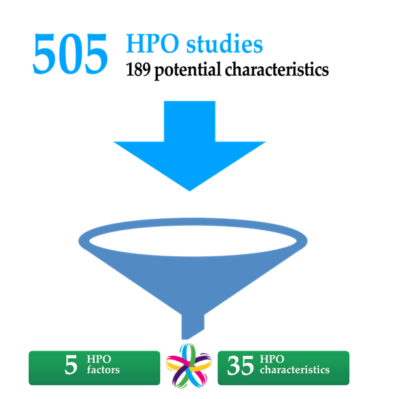
Figure 1: The HPO research approach
The first phase, the literature review, consisted of selecting the studies on high performance and excellence that were to be included in the empirical study. Criteria for including studies in the research were that the study: (1) was aimed specifically at identifying HPO factors or best practices; (2) consisted of either a survey with a sufficient large number of respondents so that its results could be assumed to be (fairly) generic, or of in-depth case studies of several companies so the results were at least valid for more than one organization; (3) employed triangulation by using more than one research method (for example a questionnaire and interviews); and (4) there was written documentation containing an account and justification of the research method, research approach and selection of the research population, a clear analysis, and clear retraceable conclusions and results so that the quality of the research method could be assessed.
The studies to be reviewed were gathered by searching the databases of Business Source premier, Emerald and Science Direct, and by browsing the internet with Google using the following search words: high performance, excellence, financial performance, organizational results, high performing organizations, high performance managers, high performance workforce, accountable organization, adaptive enterprise, agile corporation, agile virtual enterprise, democratic enterprise, flexible organization, high-performance work system, high reliability organization, intelligent enterprise, real-time enterprise, resilient organization, responsive organization, robust organization, and sustainable organization. In addition, books were reviewed, mainly on business and management. The literature search yielded 290 studies, later extended to 505 studies, which satisfied all or some of the four criteria. The studies were grouped into three categories:
A. Studies which satisfied all four criteria. These studies formed the basis for the identification of the HPO characteristics. Category A comprised of 105 studies.
B. Studies which satisfied Criteria 1 and 2 but not Criterion 3 and Criterion 4 only partly , because although the research approach seemed (fairly) thorough there is no clear description and justification of the method used. These studies provided additional input for the identification of HPO characteristics. Category B comprised of 66 studies.
C. Studies which satisfied Criteria 1 and 2 but not Criteria 3 and 4, so there was no basis for generalizing the study findings. These studies were used as a reference to support the HPO characteristics that were identified in Category A and B studies. Category C comprised of 119 studies.
The content quality of the studies was not further evaluated because of the large number of studies. The studies were summarized and put into two files by the author and two research assistants. The first file contained an overview of the studies that were reviewed, stating the (abbreviated) title of the research study, the author(s), the publication date, the research method(s) used, the research population, and the study category. To which category a study belonged was decided by the researcher who summarized that particular study. The study category was subsequently reviewed and approved by one of the other researchers. The second file described the research methods used, the research population, and the main findings of the study. The identification process of the HPO-characteristics consisted of a number of steps. First elements were extracted from each of the publications that the authors regarded as essential for high performance. These elements were then categorized in a matrix which listed all the factors included in the framework. Because authors used different terminologies in their publications, the elements were grouped according to similarity in categories under a factor and each group – later to be named ‘characteristic’- was given an appropriate description. Subsequently, a matrix was constructed for each factor listing a number of characteristics. For the first 90 studies this process was reviewed and repeated by an academic from Cranfield University in the UK. The results of this academic review were extensively discussed with the author until agreement on the categorization and the formulation of the characteristics was reached. Agreement was reached immediately in 95 percent of the cases, an additional 3 percent was reached quickly after clarifying some questions and mistakes, and the remaining 2 percent was reached after discussion. The outcome of the academic review provided sufficient ground to assume that the same categorization process could be used for the remaining studies. A total of 189 characteristics were identified. After that, the ‘weighted importance’ (i.e. the number of times a characteristic occurred in the individual study categories) was calculated for each of the characteristics. Finally, the 53 characteristics with a weighted importance of at least nine percent were chosen as the HPO characteristics that potentially make up an HPO. The research approach thus satisfied the ‘criteria for good science’: the data collection was performed in a systematic way, there was a structured procedure and documentation of the data analysis, and there were multiple person involvement and quality checks.
HPO research – Phase 2: empirical study
Phase 2 of the HPO research, the empirical study, was performed in two sub-phases. In Phase 2a, the 53 potential HPO characteristics were included in a trial questionnaire which was administered during lectures and workshops given by the researcher in Europe and Africa. Purpose of the trail was to test the quality of the questionnaire and whether it was possible to find correlations between the characteristics identified during the literature review and the performance of organizations. In the questionnaire the respondents indicated how well their organizations performed on the various HPO characteristics on a scale of 1 (very poor) to 10 (excellent) and also what their organizational results were compared to their peer group. Two types of competitive performance were established: (1) Relative Performance (RP) versus competitors: RP = 1 – ([RPT – RPW] / [RPT]), in which RPT = total number of competitors and RPW = number of competitors with worse performance; (2) Historic Performance (HP) of the past five years (possible answers: worse, the same, or better). These subjective measures of organizational performance are accepted indicators of real performance. With a statistical analysis of the respondents’ data, the characteristics which had the strongest correlation with organizational performance were extracted and identified as potential HPO characteristics. From the initial 53 characteristics, nine did not show a statistically significant correlation with competitive performance so they were removed.
In Phase 2b, an updated questionnaire was constructed with the remaining 44 characteristics. The formulation of the characteristics was made more concise and comprehensible. In addition, the questionnaire was translated into other languages to accommodate respondents who were not proficient in English. The updated questionnaire was administered during courses, lectures, workshops and presentations given by the author and colleagues in Europe, North-America, Asia, Africa and South-America. This questionnaire yielded 2015 responses of 1470 organizations. Again, the data of the respondents was statistically analyzed, resulting in 35 characteristics in 5 factors that showed a statistically significant correlation with competitive performance.
There is a substantial difference in approach between this HPO research and studies such as the ones carried out by Peters and Waterman and Collins. In the HPO research no selection was made in advance as to the objects or individuals that were to take part in the literature review and practical research, in order to avoid bias and to make the probability of generalization (amongst others to the public sector) as high as possible. In the studies of the other researchers mentioned, and of many others, however, a selection was made in advance, on the basis of financial analyses; organizations that performed well or excellently in a certain sector were compared to competitors that did not perform as well. They then determined the distinguishing characteristics of excellence based on these comparisons. A point of criticism to the latter approach is that the fact that specific organizations were selected for inclusion in the studies could be interpreted as selection bias, which affects the generalization of these studies. To prevent selection bias, no selection was made during the research described in this article, not during the literature review (except for the fact that the studies had to be relevant and usable) nor during the empirical study (which included high, medium and low performing organizations).

Exercise – What helps and what not?
1. Regularly handing out bonuses
2. Fire non-performers immediately
3. Empower all employees as much as possible
4. Communicate frequently with employees

Case Study – Achieving High Performance in the Construction Industry
BAM DLP is part of the BAM Netherlands division of the Royal BAM Group. BAM Group mainly focuses on the construction & infrastructure market in the Netherlands, the United Kingdom and Ireland, and offers a broad range of services in the field of nonresidential construction, mechanical engineering, electrical engineering, real estate development, civil projects, rail infrastructure, digital design and engineering, industrialization, circularity, modularity, energy transition and new technologies. BAM Group had in 2021 approximately 16,000 employees, while BAM DLP has 31 employees and flex workers (i.e. temporary hired workers). BAM DLP is responsible for the implementation and supervision of working in contaminated soil. The organization employs professionals with operational knowledge and experience in the field of environment & soil, safety, quality assurance and enforcement. BAM DLP ensures that the BAM business units, who are executing the construction projects, remain in compliance with regard to laws and regulations when working with contaminated soil. BAM DLP is independent of BAM’s line organization and therefore is able to intervene where necessary. BAM DLP is strong in the field of process control and was in 2019 the first organization in the world to achieve Step 5 (highest level) of the Safety Culture Ladder. BAM DLP is a flat organization, consisting of only three layers: the management team, formed by two managers; the project planners and project leaders, who prepare the projects and provide support and assistance to the projects; and the specialists, who are on site and support the project teams of BAM and subcontractors working on the constructions in contaminated soil.
The reasons for BAM DLP to undertake an HPO diagnosis can be traced back to its origin. From its establishment in 2014 the organization was set up using the lean philosophy, leading towards achieving the highest step of the Safety Culture Ladder. This ladder is an assessment method for measuring safety awareness with as goal to promote a conscious safe and healthy culture and behavior in companies. The ladder fosters an environment in which all organizational parties consciously shape safety in order to reduce the number of unsafe situations and thus incidents which would have resulted in absenteeism and damages. The Safety Ladder consists of five steps of increasing sophistication: 1. Shared Values. 2. Leadership Involvement. 3. Continuous Learning. 4. Accountability. 5. Constant Support. The ladder provides, per step, the requirements that an organization has to comply with, the accompanying criteria (the standards), how these criteria are valued (the scores), and what the independent auditors pay attention to when evaluating the safety step an organization has achieved. When BAM DLP reached Step 5 in 2019, as first organization in the world, its managers looked for a new challenge, a new benchmark to measure DLP up against. They chose the HPO Framework as this framework matched with the continuous improvement and strive for excellence that characterized BAM DLP’s vision and mission. Another motive was the fact that the Safety Culture Ladder was not scientifically developed and validated, and DLP’s managers wanted to know whether Step 5 actually, as logic dictated, matched with being a high performance organization; something which could be evaluated with the scientifically validated HPO Framework.
Figure 2 depicts the results of the HPO Diagnosis at BAM DLP, compared to the average HPO score for all respondents in the HPO database (in which all HPO data is collected) who work for construction companies worldwide, and to the threshold value for an HPO organization (this value is 8.5).
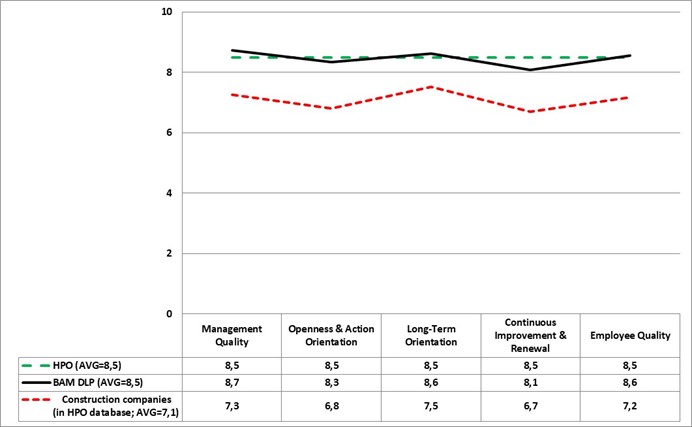
Figure 2: Results of the HPO Diagnose at BAM DLP
Figure 2 shows that in terms of the HPO profile (i.e. the shape of the graph), BAM DLP is a typical construction company but of a much higher level. In fact, the average HPO score of BAM DLP denotes the company as a high performance organization. This also shows in the results the organization achieves:
• it has the highest scores in the whole of BAM on the Employee Satisfaction Survey
• subcontractors, when asked, prefer to work for BAM DLP over working for other construction companies
• achieved, as first organization in the world, the highest certificate (Step 5) on the Safety Culture Ladder
• no instances of absenteeism because of accidents (i.e. no lost time incidents) since the start of DLP
• no enforcement incidents, causing law enforcement agencies to use BAM DLP as an example for the industry
• financial stable results since the start of DLP.
During the diagnosis several examples were discussed that illustrate the high scores on the HPO factors:
• HPO factor Continuous Improvement and Renewal – BAM DLP has a clear structure with a clear vision what it wants to achieve now and in the future and a clear strategy detailing how it wants to achieve its goals. The main focus of BAM DLP is on safety and compliance with soil and environmental legislation: promoting and nurturing this on the various BAM construction sites. Next to this customer and employee satisfaction are very important. The vision and strategy are shared with the employees and subsequently discussed with them four times per year, during the quarterly meeting. There is also a clear follow-up to the strategy, for example employees are sent on safety trainings during the year. There is a procedure to easily report problems in a process or process improvement ideas. In addition, DLP’s people use WhatsApp (on site) and Teams (in the office) frequently for continuous communication, discussion, problem solving, questions, improvement ideas and giving compliments. These two applications are the ‘lifeline’ of DLP. Every quarter the improvement ideas are jointly discussed and decided upon whether they should be taken up or not. Subcontractors are invited to participate in these discussions, to get more input. This way the processes are becoming increasingly efficient. During the day-to-day work all site personnel is invited to make an inspection of the site to look for problems or opportunities for improvement. These are immediately discussed with the BAM unit that is responsible for a particular site.
• HPO factor Openness and Action-Orientation. BAM DLP employees and flex workers are considered to be the capital of the unit and therefore the managers take great care of them. They have regular conversations with each employee, about work and private matters. There is also immediate follow-up if actions come out of these talks (for example coaching, training). The opinions and input of employees is regularly asked by the managers, using the WhatsApp application. BAM DLP’s motto is: “Making mistakes is allowed, but not tolerated.” This means that when mistakes are made, people need to learn from it, as making the same mistake will not be allowed. When mistakes are made, they are discussed in the group and actions are devised to make sure they will not happen again. The focus is not on blaming and shaming but on a good conversation and learning. At least 80 percent of the group has to believe that the action will solve the problem, otherwise it will not be accepted nor put in action, in fact the search for a better action will then continue.
• HPO factor Management Quality. The two managers of DLP are very different but complementary people who each have different strengths and because of this can deal with many issues in the organization. What characterizes both is that they stand up for their team and always back up the employees, especially in difficult situations such as a specialist stopping the work on a construction site because of safety issues while there is a lot of pressure (financial, time, psychological) from the client or subcontractor to continue with the work.
• HPO factor Employee Quality. BAM DLP has the ‘Golden Sink’ which is handed out to an employee, flex worker or client who performs excellently on safety. This award is not meant to be a motivation for doing safety, it is mainly to make people aware that safety is important. The ‘Golden Sink’ is awarded by a critical selection team so that the award is not seen as a trifle. The training (knowledge) and development (skills) needs and wishes of each employee is entered yearly in a system called BAM People. Management also pushes employees to follow certain training courses which are important for DLP and for the development of the individual him/herself (within DLP or the wider BAM organization or even externally).
• HPO factor Long-Term orientation. One of DLP’s managers is a member of many external committees to make sure that DLP is always aware of what is going on with stakeholders and to bring in the opinion and ideas of DLP. DLP also closely works together with the environmental services department of municipalities to improve processes and outputs. Regarding subcontractors, DLP employees are very accessible to them and always willing to answer questions or deal with bottlenecks. In this way close cooperations with subcontractors has been established. External people, from the subcontractors and stakeholders, are often invited to participate in DLP’s meetings to have a dialogue about issues and ideas. Vice versa DLP’s people regularly visit subcontractors and stakeholders premises to become familiar with their cultures. BAM DLP has created, according to the employees, a professional family culture in which they feel very safe. Family culture means that people treat each other as human beings; professional means that people are held accountable for their behavior and results (but in a nice and professional manner). New employees express a feeling of being welcomed with open arms. DLP also does a lot to foster social safety: financial support for people in financial difficulty, emotional support (in the shape of coaches) for employees with a burnout or too much stress, focus on healthy living (support with quitting smoking, healthy life style programs), and providing conversation training to discuss social safety.

Course Manual 3: The HPO Framework
In conversation with a CEO – Unlocking the HPO Framework
“So why did you want to be an HPO?,” Tanya asked.
“It was necessary to become one,” grumbled the CEO.
“How so?”
“When I came here seven years ago, the company was not doing too well, to say the least, I can tell you that.” The CEO shook his head somewhat despondently.
“It was going badly, but how bad is bad?” the journalist pressed.
“The revenue had significantly dropped in recent years, and as a result, profits too. Employees were demotivated, and quite a few managers had left. The worst was the great dissatisfaction among customers, many of whom were already looking for a new supplier.”
“That doesn’t sound like a bed of roses you walked into,” chuckled Tanya.
“It certainly wasn’t, but the board of directors had hired me for this reason. I had to pull this wonderful company out of the mire, and of course, I went about it vigorously. Boy, that was a challenge.”
“You’re making me very curious now. What happened?”
Peter stood up and began pacing back and forth. The memory of that time clearly still haunted him. “After first spending a few months looking around and talking to various people throughout the organization, I knew what I had to do. At least, I thought I did. I started a major improvement project under the motto ‘Passion for the Customer’. The core of it was to better organize the service to our customers. I had noticed that everyone was doing their best, but apparently that was not enough, the customers remained dissatisfied. We had to start focusing on the things that were really important and added value for our customers, but at the same time, we also had to keep a very close eye on the money. An important part of the improvement project was the introduction of performance management. We got support from an advisor specialized in implementing performance management and performance-oriented behavior. Everything was introduced, the analysis techniques, the reports, the control information, performance-oriented values and norms, you name it. But it didn’t yield what I had expected a year later. I missed the holy fire in the organization.”
Peter paused for a moment to take a sip of his now cold coffee.
He continued his story. “We had had several tough years in this industry. Now things were finally looking up and yes, we were growing again, but… we were still growing significantly less quickly than our competitors; they were shooting past us left and right. Now we had just landed a very large new client, maybe you’ve heard of them: that rapidly growing bank that also sponsors a major sports team. That bank had asked us to deliver a number of services within three months. And if we did that well, there would be much more in store for us.”
“That sounds great,” responded Tanya. “What was the problem then?”
Sighing, the CEO sat down. “Let me tell you. We had spent a lot of time on performance-oriented behavior during that period: how can we as management make ourselves and our people more results-oriented and customer-focused, how can we achieve better results than we are currently doing, and how can we simply be prouder of our company? Then a great opportunity came along, which I believe we seized well. We had special kick-off meetings with our employees and people from the bank to get to know each other better, we had set up a complete playbook for how to approach the service, we had established a special project team that supported the various branches across the country, we had identified performance indicators, and we even introduced a performance reward. I also spent a lot of time on it myself. But after three months, I went to the client for a progress meeting and it did not go well at all. Do you want to hear a few quotes from that conversation? Hold on: ‘It’s not going as we want, only a quarter of the promised products have been delivered and we only have one month left, what are you doing?’ ‘You may not realize it, but the house is on fire, we need to start extinguishing immediately.’ And the deadliest remark: ‘I miss a piece of passion and commitment from you.’ And yet we had won the assignment with our enthusiasm, our creativity, and our passion!”
Peter started pacing agitatedly again. “I didn’t understand it, all the urgent letters, all the urgent emails, all the phone calls, and yet there were still people within the organization who were neither hot nor cold about it. There were managers who had thrown themselves into it, who believed in it. But I still saw too many people without the holy spark. They acted as if they were busy with it, but their heart and soul were not in it. I felt like their efforts would sag as soon as I looked the other way. And the inevitable did happen: we missed a follow-up order for delivering a number of additional services because the bank no longer had confidence in us. So that was a net 250,000 euros we could kiss goodbye! I really wondered why I had spent so much time developing that performance-oriented behavior. This was the moment to show that we really had a heart for the customer, and we failed. What was I to do? Was there still hope, or should I just throw in the towel?”
Peter let a meaningful silence fall.
Tanya was now sitting on the edge of her seat. “What did you do then?”
Peter walked to a bookshelf next to the window and almost blindly picked up a well-thumbed booklet. He walked back to Tanya and handed it to her. “This is what we did.”
“What is this?” Tanya turned the booklet to the front to read the title. “What Makes A High Performance Organization, Five Validated Factors OF Competitive Advantage That Apply Worldwide,'” she read aloud. “Is this what I think it is?”
Peter smiled. “Yes, that book has pretty much become our bible. I got it after that seminar by the author. As it goes, you put it aside to read later, then of course you forget you have it. Fortunately, I was reminded of it a few months later when I read an article about excelling companies. I picked up the booklet and since then we have consistently used it in our transition to an HPO.”
“What’s in it?”
“Open the first page, and you’ll immediately see the essence of the booklet and of an HPO.”
Tanya opened the booklet with trembling fingers and saw immediately what the CEO meant.
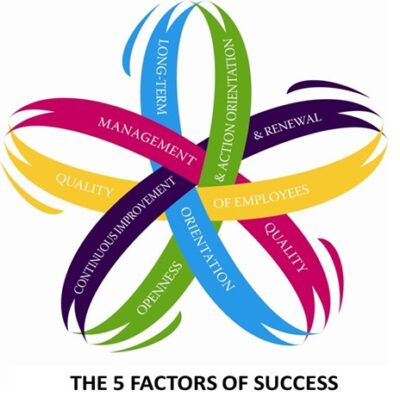
“Nice picture,” Tanya reacted, “but what does it mean?”
Peter settled in comfortably. “You have to look at the organization in an integrated way. Too many companies, too many consultants, and too many software vendors have tried to solve the performance problems of organizations in isolation, in small pieces. That’s not the way we’ve done it.”
“How did you approach it then?”
“Let me first explain what the five pillars of an HPO entail. The first pillar is high-quality management. Managers of an excellent organization are integral, decisive, action-oriented, performance-oriented, effective, confident, and they have a strong leadership style. They place a strong emphasis on building trust relationships with employees, coaching and facilitating those employees, and have a strong role model. HPO managers always hold employees and each other accountable for the results achieved and are decisive regarding ‘non-performers.'”
“They sound like superhumans, those HPO managers,” smiled Tanya.
Peter nodded. “Yes, sometimes it does feel that way, especially that role model part, which is quite heavy. But on the other hand, it’s also wonderful to work with such people, you pull yourself up to their level and they to your level. You create a winning team, and who wouldn’t want to be part of that?”
“That sounds very inspiring. Do you need a similar type of employees then?”
“In itself, yes, but it’s a bit different. The second HPO factor is indeed high-quality employees. That means that employees want to have responsibility and at the same time also be held responsible for their results. They want to hear when they’ve done something well but especially when they’ve done something wrong, so they can learn from it and grow personally. They also want to be inspired by their boss to achieve exceptional results. So that immediately requires quite a lot from those managers, hence the importance of being a role model we talked about earlier.”
Tanya nodded encouragingly.
“What also belongs to the second factor is that an HPO has a diverse and complementary management team and workforce,” Peter continued. “In addition, employees are trained to strengthen their flexibility and resilience, among other things by collaborating extensively with other departments and organizations.”
He took a deep breath and continued. “I’m on a roll now, Tanya. The third HPO factor is an open and action-oriented organizational culture. An excellent organization encourages interactive internal communication, an open dialogue between organization members, allowing free and continuous exchange of information. As a result, employees spend a lot of time sharing information, knowledge, and best practices within the entire organization. They are also involved in important business processes, such as developing a vision and organizational values, in decision-making, and in experiments, where making mistakes is explicitly allowed. All this with the goal of creating a performance-oriented culture that brings out the best in people.”
“Why is that important?” asked the journalist.
“A performance-driven culture ensures that everyone in the organization works towards achieving the same objectives and strives for the best results and continuous improvement. That way, you can truly excel.”
“I’m very curious about that fourth HPO factor, the long-term orientation. Is that the same as focusing on shareholder value?”
“Absolutely not, Tanya,” said Peter excitedly. “I always say that shareholder value thinking is the worst thing that has ever happened to us!”
“But how can you say that, you’re a profit company and you do have shareholders?”
“That’s true. But shareholders form just one of the stakeholders of my organization. I also have to take into account employees, customers, suppliers, the government, and societal groups. They are all dependent on this organization to a lesser or greater extent, so I have to take good care of them. This company has no natural-born right to exist; it must earn that right societally. And that requires a different orientation than is customary today, especially in the business world. You can’t think in quarterly figures; you have to look at the longer term.”
“What does that long-term orientation entail exactly?”
“That continuity in the long term always takes precedence over short-term profit. This factor is manifested in managers committing themselves to the organization for the long term. The excellent organization promotes new management from within and creates a safe and stable working environment for employees. In addition, an HPO maintains good long-term relationships with all stakeholders and continuously strives to increase the added value for customers.”
“That makes sense to me. Then that last pillar, continuous improvement…”
“… and innovation,” added Peter.
“Okay, and innovation. That’s kind of a fashion trend in recent years, right? Most governments are full of it, and various innovation platforms have been established. And now I see it here again.” Tanya shook her head in slight disbelief.
“It seems like you think that if the government is busy with it, it can’t be important,” laughed Peter. “But on the contrary, the fifth and last factor is actually very important. But watch what continuous improvement and innovation entail. An HPO first has a strategy that clearly distinguishes the organization from the peer group, and I can tell you that’s very difficult. Do you know how long you can stay unique?”
“What do you mean?”
“How big is your advantage when you come to market with a new service or a new product?”
“Well, it probably isn’t that big, judging by your face,” chuckled the journalist.
“Spot on! Your advantage over the competition lasts an average of eight months, no longer. So as an HPO, you are constantly using that advantage to develop the next new thing. Then an excellent organization continuously improves its processes to be able to realize that strategy, and measures and reports what is important so that all employees have the information to be able to improve. And an HPO also excels in its core competencies to be able to continue leading the sector.”
Peter fell silent and leaned back again. Tanya looked again at the picture in the book and then at Peter.
“You seem a bit confused,” the CEO noted.
Hesitantly, Tanya said, “It seems so easy. Just five factors that no one in their right mind could be against. Moreover, some seem actually quite like open doors. My readers will wonder why not many more organizations have become high performing if it’s all so simple.”
Peter had to laugh. “It seems deceptively simple, but it’s not. Behind each of the five factors lies a whole world. There are many things you have to arrange and do to become a high-performance organization. They all have to be executed well, otherwise, it doesn’t work. Moreover, the steps do not need to be executed sequentially. The order of implementation depends entirely on the situation of the organization. And those open doors, that seems to be the case, but then I have to agree with your readers. Because if they really were open doors, then undoubtedly many more organizations would excel… and that is certainly not the case.”
“Why is that?”
“I think it’s because they’re not open doors. It seems that way because much of what I’ve just told you is already well known, but we just don’t do it.”
Tanya looked a bit frustrated. “And why is that again?”
“Because we’re too often busy with the wrong things.”
“Is that so?”
“Absolutely. For example, that book also kicks over a few sacred cows. Those are things that we’re very busy with in many organizations, but they don’t help or are at least not decisive in becoming an HPO.”
“Now I’m really curious,” said the journalist eagerly. “What are those sacred cows?”
Peter grinned. “I already expected that you’d find that interesting. I’ll give you a few examples. First, none of the organizational designs or structures studied had a direct relationship with the results of an HPO. It turns out that it doesn’t really matter whether an organization opts for a functional design, a process-oriented layout, or a matrix organization, in the sense that none of those organizational designs guarantee that an organization will become an HPO.”
Tanya interrupted him. “But wait a minute, why do so many companies reorganize then, that’s not very logical?”
“Indeed it is not,” agreed Peter. “Reorganizing seems to be a Pavlovian reaction of management that is in trouble. The HPO research clearly shows that a reorganization does not automatically help to sustainably improve the performance of the organization. The reorganization must serve one of the five HPO factors, otherwise, it will rather work counterproductively. And then I have another one for you. Greater autonomy of employees does not automatically lead to better performance, despite the great attention in recent years to the topic of empowerment. The research shows that too much autonomy can actually have a negative relationship with the organization’s result.”
Tanya sniffed a bit incredulously.
Peter nodded. “Yes, that surprised me at first too, but it turns out that too much freedom for employees can lead to poor internal organization, ambiguities, and ultimately significant damage if a certain level of central coordination and direction is lacking. Management must indicate the playing field within which employees can operate autonomously, but where they must not come out, on penalty of, for example, dismissal.”
“That’s already two big sacred cows that are going down. Do you have any more?” Tanya settled in again.
“Well, another interesting research result is that strategy itself is not distinctive in becoming and remaining an HPO. It doesn’t matter whether an organization opts for cost leadership, product differentiation, customer intimacy, or a combination of these strategies: the distinguishing factor is the uniqueness of the chosen strategy in the industry or market in which the organization operates.”
“Oh,” the journalist interrupted him again, “that means that a ‘me too strategy’ can actually backfire if the organization wants to be an HPO.”
“Exactly!” exclaimed Peter. “See, you’ve got the principle already. You can safely say that a team of good people without a strategy can achieve just about anything, while an organization with a clear and well-defined strategy but not the right people to carry it out will eventually fail. The best thing is naturally to have both, so they can support each other.”
“I see in your eyes that we’re not there yet, you have another surprise in store for me.”
“Sharply observed. I do indeed have something else that is not distinctive to become and remain an HPO. That is the role of technology and in particular information and communication technology. Many organizations spend a lot of time and energy implementing new ICT systems, but this again does not automatically lead to HPO status. Thus, introducing an automated customer relationship management system will not automatically make employees more customer-friendly…”
“Let me guess: here too, improving ICT must serve one of the five HPO factors.”
“Exactly. Thus, the HPO factor of continuous improvement, for example, cannot do without good ICT systems. The golden HPO rule is that the implementation of these things must always support at least one of the five HPO factors to be effective.”
Tanya sighed deeply. “Well, that’s quite something.”
“But we’re not there yet, Tanya.”
“What, are there more things that aren’t important?”
“No, we’ve explored that topic enough now. I want to emphasize something else, namely that the real bottleneck on the road to HPO status is that the company must accept the consequences and implications of the transition to HPO.”
“Consequences like…?” the journalist asked.
“Internal political games are not allowed in an HPO. Everyone must recognize existing and potential problems so that they can be tackled immediately. Information shielding, competency struggles, and the protection of personal fiefdoms are out of the question.”
“That all sounds quite logical.”
“There’s more, Tanya. A non-committal attitude is fundamentally prohibited within an excelling organization. Waiting for problems to go away on their own, or blaming someone else, is not tolerated. Everyone acts in an honest, open, and involved manner. That’s not easy, especially during the transition from the old situation to HPO. But believe me, looking back, I see that it was all worth it.”
“In what way?” Tanya asked curiously.
Peter pushed the monitor of his personal assistant toward the young woman. “Look at these results. This graph shows the trend of financial results since we started on the path to becoming an HPO. Impressive, isn’t it?”
As her eyes wandered over the screen, Tanya nodded affirmatively.
“Look at this data on customer satisfaction and product quality, which have steadily increased over the last few years.” Peter leaned back satisfied. “I would say that speaks for itself.”
The HPO framework is a conceptual scientifically validated structure which practitioners can use for analyzing how high performing their organizations are and to decide what is needed to improve organizational performance and make it sustainable. The Framework consists of 5 factors and 35 accompanying characteristics, and is depicted as a flywheel (Figure 1).
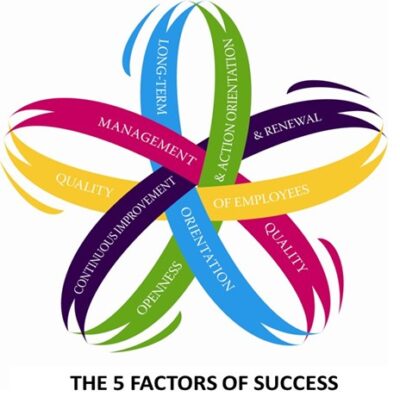
Figure 1: The HPO Framework
HPO factor 1: Management Quality
In an HPO, managers at every level build trust with their teams by showing appreciation for their dedication, respecting intelligent individuals, and fostering personal connections. They promote a culture of trust and fairness, acting with integrity and setting an example through their honesty, commitment, and ethical standards. These managers are known for their consistency, willingness to show vulnerability, and avoidance of complacency.
They make decisions swiftly, focus on action, and encourage their teams to do the same, steering clear of unnecessary delays in decision-making. By coaching and supporting their employees, HPO managers help them achieve outstanding results, shield them from distractions, and are always there to support them.
Management in an HPO holds team members accountable for their performance, making clear and tough decisions about those who do not meet expectations. They drive the organization towards success by ensuring everyone understands and aligns with the company’s values and strategy, fostering a strong, confident, and effective management style that resonates throughout the organization.
HPO factor 2: Openness & Action Orientation
In an HPO, the open culture is not just for show; it is a tool for achieving results. Management actively values employees’ opinions, engaging in regular discussions with them and including them in key business and organizational decisions. HPO leaders encourage a culture where taking risks and learning from mistakes is the norm, viewing errors as chances for growth.
Such an environment fosters innovation, as management is not only open to change but actively seeks it, pushing for continuous improvement and adaptability. They lead by example, directly participating in initiatives that drive change. In an HPO, there is a strong emphasis on communication, sharing knowledge, and learning together. This approach helps generate fresh ideas to enhance work processes and drives the entire organization towards a performance-oriented culture.
HPO factor 3: Long-Term Orientation
In an HPO, the focus is on long-term success rather than just short-term profits. This approach benefits everyone involved with the organization, including shareholders, employees, suppliers, clients, and the wider community. HPOs are dedicated to continuously improving the value they offer to customers by really understanding their needs and values, building strong relationships, involving them in the organization’s activities, responding to their feedback, and always looking for ways to better serve them.
HPOs also work on building lasting relationships with all stakeholders through extensive networking, contributing positively to society, and creating opportunities that are beneficial for everyone involved. They grow by forming partnerships with suppliers and customers, evolving into globally networked enterprises.
Management in an HPO is in it for the long term, striving to balance the organization’s goals with individual interests and encouraging a culture where the organization’s needs come first. They develop future leaders from within, promoting internal talent to leadership positions, and focus on creating a workplace that is both physically and mentally safe for everyone. Job security is a priority, and letting staff go is always seen as a last resort.
HPO factor 4: Continuous Improvement & Renewal
The journey of continuous improvement in an HPO begins with crafting a standout strategy that differentiates the company. This involves coming up with fresh approaches to replace outdated strategies. Once the strategy is set, an HPO commits fully to executing it. This means constantly streamlining, enhancing, and aligning all processes to boost efficiency and effectiveness, while cutting out unnecessary tasks and reducing information overload.
The organization keeps a close eye on its progress by measuring and reporting key metrics, ensuring that both management and all employees are well-informed about the company’s performance. This includes sharing both financial and non-financial data to empower everyone to contribute to ongoing improvements. There’s a shared commitment among the team to always aim for the best possible outcomes.
Innovation is at the heart of an HPO, which continually introduces new products, processes, and services to stay ahead of market trends and maintain a competitive edge. It focuses on excelling in its core competencies, choosing to innovate within these areas, and outsourcing tasks that fall outside of these core strengths. This approach ensures the company remains focused on what it does best, leveraging its strengths to achieve long-term success.
HPO factor 5: Employee Quality
An HPO prioritizes building a team that is diverse and brings a range of skills and perspectives to the table. It focuses on hiring individuals who are adaptable and can easily spot and address issues in business processes, while also driving innovation in problem-solving. An HPO is committed to its team’s growth, offering training to enhance resilience and adaptability. It encourages learning through collaborations with suppliers and customers, motivating employees to upgrade their skills for outstanding achievements. Employees are held accountable for their performance, which motivates them to find innovative and efficient ways to meet their goals.
Relation with performance
The research on High Performance Organizations (HPO) found a clear link between the five key HPO factors and how well a company performs competitively: the better a company scores on these HPO factors, the better its results. Conversely, lower scores on these factors lead to weaker competitive performance. It’s crucial for a company to have balanced scores across all HPO factors. For example, if a company scores high on four factors but significantly lower on one, it won’t achieve HPO status due to this imbalance.
An easy way to visualize this is to imagine a child’s propeller. When exposed to the wind, it spins around at a constant speed. However, if one of the strings breaks, the propeller will no longer turn around smoothly and will eventually break down. It illustrates that an organization should distribute its attention evenly across the five HPO factors to make sure none of these will be ‘broken’ and hold back the organization. Working on just one HPO factor, or only a few characteristics, without paying attention to the other HPO factors or characteristics in due course, will not help the organization in the long run.
Factors that do not make an HPO
The HPO research showed several factors that do not make an HPO. That does not mean they are not important, but they are so-called hygiene factors: matters that must be in order to ensure that the organization performs adequately but at the same time are not enough to become an HPO. In general, hygiene activities are related to basic matters that must be in order to make an organization function adequately, such as good accommodation, good IT architecture, good working conditions, et cetera. One can state that if the hygiene factors have not been taken care of, employees are dissatisfied and demotivated. When the hygiene factors have been ‘fixed’, employees are no longer dissatisfied but not necessarily motivated. For the latter to happen, the organization needs to work on the HPO factors.
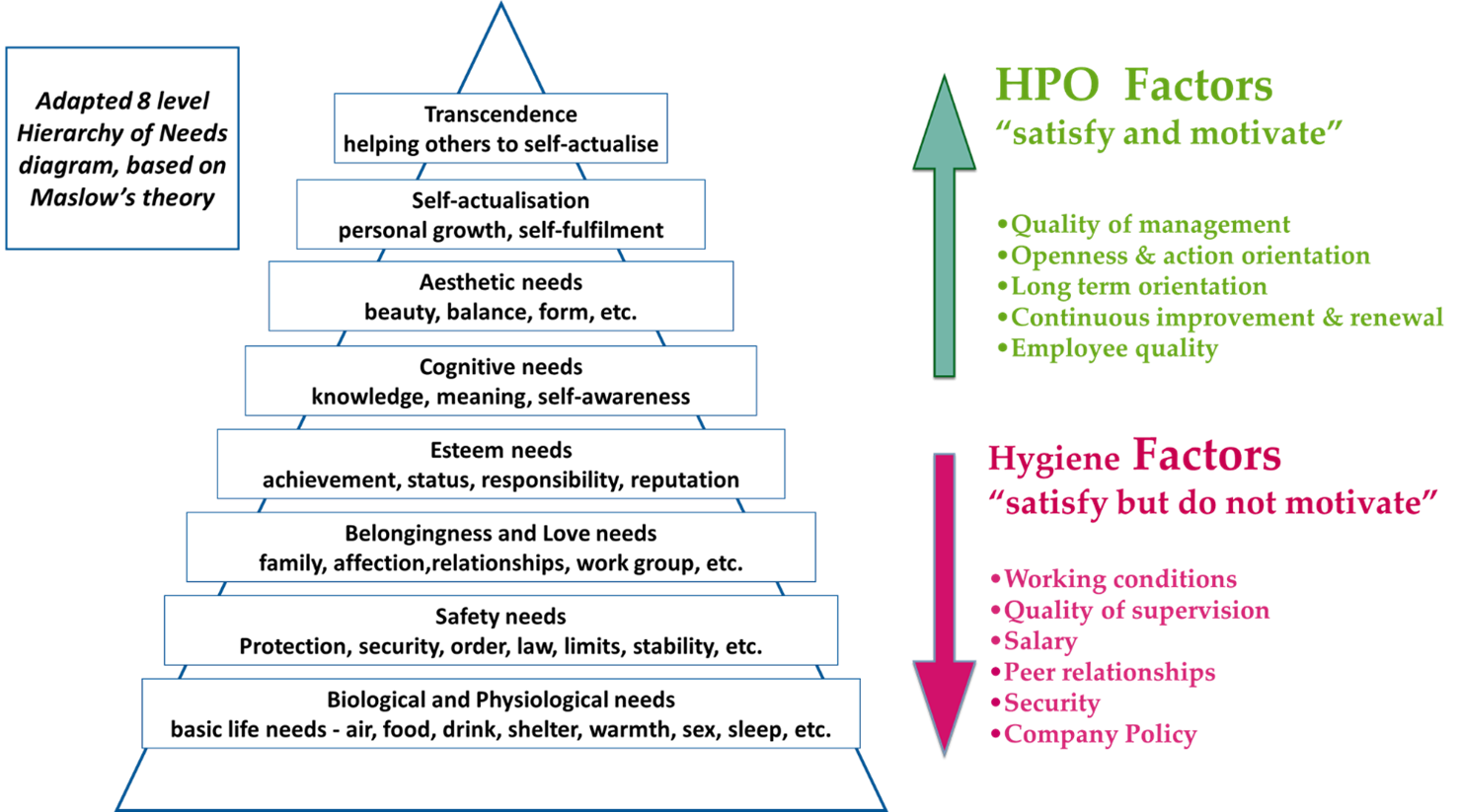
Examples of hygiene factors are:
• Organizational design / Structure – The HPO research found that the specific design or structure of an organization, such as whether it is organized by function, process, or a matrix system, does not impact its ability to become an HPO. These structural elements do not make a difference in achieving high performance and are not key factors in becoming an HPO. Therefore, starting a reorganization with the goal of improving performance isn’t recommended. In fact, studies consistently show that most reorganizations don’t lead to long-term improvements in performance.
• Strategy – With regard to strategy, it turned out that it is not so much the chosen strategy that is important, as all characteristics concerning cost leadership, product differentiation and customer intimacy strategies showed no correlation with high performance. It is the uniqueness of the strategy compared to competitors in the same industry. Adopting merely a ‘me-too’ strategy is thus not enough to become an HPO.
• Technology/ICT – The research revealed that there is no direct link between the use of technology or ICT systems and achieving high performance. This might be surprising, given that many organizations invest heavily in new information and communication technologies hoping to boost their performance. However, these investments alone won’t turn them into HPOs. While technology is essential for certain aspects of becoming an HPO, particularly in areas like Continuous Improvement and Renewal, simply adding new systems and technology does not guarantee long-term performance improvements. For technology investments to truly benefit the organization, they must directly support one or more of the HPO factors.
• Benchmarking – The HPO study showed that benchmarking was less effective than expected for improving an organization. When an organization embarks on a benchmarking project it usually aims to identify best practices, emulate these and attain – at best – the same level as the industry’s best. HPOs, however, have a completely different view on best practices. They regard competitors’ best performance merely as the baseline for performance, a starting point from which HPOs distance themselves as much as possible.

Exercise – Picture your HPO
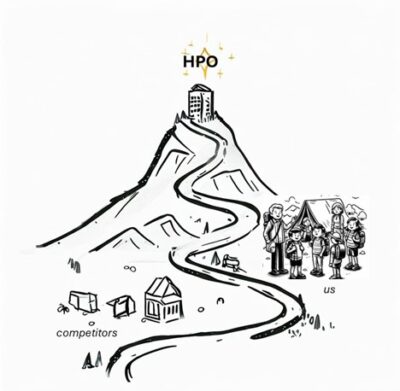

Case Study – Using the HPO framework to become the best in the industry
ARK Data Centres (ARK) is a small but rapidly growing company with high business ambitions and challenging goals for the future. The company is on a journey of transformation from a relatively new, low profile player in the data center industry, to achieving its vision to become the UK’s leading provider of high integrity data centers. ARK has a strong financial foundation that stems from a recapitalization in which a new senior leadership team came on board with a vision to change the UK data center industry. The vision of ARK is to combine next-generation design with the cost-effectiveness and commercial flexibility to give customers real cost savings. To this end, the company built campuses in Cody Park (36 acres) and Spring Park (38 acres above ground, with access to 120 MVA diverse power supply, and one million square feet of underground space available for development), with purpose-built data centers which give clients maximum level of flexibility in making easy changes in data center sizes or requirements. The campuses also have several rings of security for a highly secure facility. In addition, ARK heavily invests in research and development to make sure it can also deliver tomorrow’s data center needs, enabling the digital capability that underpins the modern economy and its public services. Currently, the company has the lowest total cost of ownership (TCO) in the UK and its annualized lowest power usage efficiency drives customers’ costs down while minimizing the company’s impact on the planet. ARK’s success goals are recognized by Gartner as top of the UK Magic Quadrant for high integrity data providers, and the organization is in the top 10 Best Employers to work for in the Times survey for SME technology businesses.
ARK performed three HPO Diagnoses. Figure 2 shows the results of these diagnoses. Summarizing the diagnoses results, ARK increased its HPO score in 3 years 1,1 point thus becoming an HPO, while at the same time experiencing significant growth in both revenue and created data warehouse capacity.
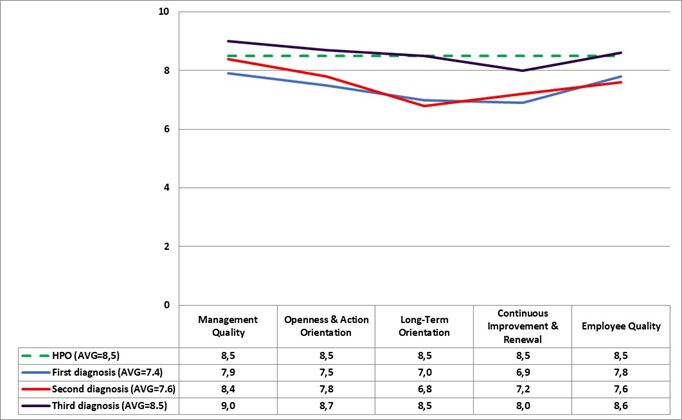
Figure 2: HPO scores of ARK
The first two diagnoses showed that Ark was a strong company on its path to becoming an HPO, though it faced challenges related to its rapid expansion. The slight improvement in its HPO score by 0.2, with similar patterns in the first two evaluations, indicated that Ark was essentially operating the same way as before but with minor improvements. Feedback from Ark’s staff highlighted several key issues: some employees had a clear vision of what Ark would look like as an HPO, while others didn’t fully understand the implications of this transition. There was a prevalent focus on short-term solutions and tackling immediate problems, typical for a young, fast-growing company, but there was a need for a more strategic, long-term approach. Additionally, while some team members were open to changes, others struggled to adapt, either emotionally or skill-wise. To address these challenges and facilitate Ark’s journey to becoming an HPO, several strategies were proposed:
• Develop a Unified Vision: Clearly define what Ark as an HPO would look like, especially transitioning from an engineering-led to a marketing-led company, both in structure and behavior.
• Future-Proof Processes: Identify areas for process improvement and implement a knowledge management system to support these changes.
• Cultivate a Proactive Culture: Encourage a “make it happen” attitude by removing both procedural and mental obstacles that prevent staff from taking initiative.
• Structured Communication: Establish a clear dialogue framework outlining who should talk to whom, when, why, and about what, to ensure effective communication.
• Prepare Managers for the Future: Train managers to lead in an HPO environment, equipping them with the necessary skills and mindset.
• HPO Coaches: Assign selected employees as HPO Coaches to foster a culture of high performance from within and inspire both managers and staff towards achieving HPO status.
ARK’s senior leadership team (SLT) realized it had to step up in order to make the HPO transformation at ARK a success after all. It had been and still was very busy for them in this rapid growing and changing industry, but they had to get more and more visibly involved in HPO activities. They decided to appoint one of the SLT members, the CFO, as HPO Champion who was going to direct the HPO Coaches directly, and who would monthly report back to the SLT on the progress made on the HPO attention points. Also, in each of the attention points at least one SLT member would be involved, either as end responsible for the point or as participant in the activities aimed at addressing the attention point. The SLT as a whole took the lead in creating the consistent picture of ARK as an HPO. The results of the third HPO Diagnosis showed that ARK and the SLT were very successful in addressing the attention points: by achieving a score of 8,5 and increased organizational results the company had clearly become an HPO.

Course Manual 4: Management Quality
In conversation with a CEO – What Managing Really Boils Down To
“The essence of management is dealing with people,” began the CEO as he explained the first HPO pillar. “No matter how many tools and techniques you implement; if you can’t motivate people to use them to improve their performance, then when push comes to shove, you’ve achieved nothing.”
“I often hear that when I interview top managers,” Tanya responded.
“I can imagine. It’s a problem we constantly struggle with.”
“How have you solved that?”
“By impressing upon my managers that their behavior and attitude are crucial for the success of this company. I’ve emphasized that they have a role model function for their people. That goes further, much further, than just setting clear objectives, formulating effective actions, and showing the discipline to follow through and execute those actions to the end.”
“In what way does it go further?”
“It starts with the trust employees have in you. Do they see you as a trustworthy person, someone who says what he’s going to do and then actually does it? Are you consistent and integral, and can employees rely on you to be a man of your word? You know the saying: trust comes on foot…”
“… and leaves on horseback,” the journalist interjected triumphantly.
“No,” grinned Peter, “that was in the past, now it leaves in a Formula 1 race car. The internet ensures that any misstep is out in the open immediately.”
“Yes, that’s true, I hadn’t looked at it that way. What else is important?”
“Management must be decisive and action-oriented. I always say it’s better to make a bad decision than no decision at all.”
Tanya looked surprised, and Peter quickly added, “I mean… uh, have you ever heard of the expression ‘paralysis by analysis’?”
The young woman shook her head.
“It means that you keep studying the data and keep deliberating over a decision for so long that it’s no longer necessary, because the problem has spiraled out of control. You’re essentially paralyzed because you kept analyzing. Well, an HPO manager doesn’t like that at all.”
“But what about that bad decision, that doesn’t seem quite right either?”
“At first glance, no, but it’s not so bad. The great advantage of making a bad decision instead of no decision at all is that you can learn very quickly from a bad decision. That provides extra information that can point you in the right direction. You can then intervene immediately and do something that does ensure you achieve your goal.”
“This is quite something. Are there any other aspects that belong to this factor?”
“What we haven’t discussed yet is result orientation. HPO managers are very much so and are also very effective in achieving those results. They keep their eye on the ball to ensure that the agreed performances are delivered. To this end, they coach their employees to achieve these results more effectively.”
“In an interview I held last week with a number of employees, I heard precisely that they are never coached, but that they do get reprimanded if they don’t meet their targets,” said Tanya indignantly.
“Did they tell you why they weren’t coached enough?”
“No, not really. They said something about never seeing their manager.”
“That’s exactly it!” exclaimed Peter. “Managers are always busy, busy, busy. It seems like you don’t matter if you’re not busy. So, managers make sure they participate in all kinds of projects, but you see them too little on the work floor. And that’s where it all happens.”
Tanya said nothing for a moment, letting the CEO calm down.
“Sorry Tanya, but I can get so worked up about this. People who always hide behind how busy they are, while they forget the essence of managing: take good care of your people then they’ll take good care of you. However, that doesn’t mean you shouldn’t hold your employees accountable for recognizing and improving lagging results. If someone really isn’t performing, then you have to do something about it. We don’t let anyone flounder here, but we don’t make it personal either. We assume that if someone isn’t functioning, they’re not the right person for the job. Perhaps this person would be better suited in a different role within or outside the company. This applies to both employees and managers. But you can only reassign or dismiss someone if you’ve given them enough opportunity to improve, by actively coaching them and being interested in what drives them.”
“And yet it sounds like those managers of yours are sort of supermen and superwomen,” Tanya noted.
“Aren’t you asking too much of them?”
“Well, that’s not too bad,” Peter replied. “I don’t expect the impossible from my people. We’ve abandoned the ridiculous notion that our people have to be good at everything. That’s not realistic, we’re all human so we fail sometimes.”
He took a sip of coffee. “Success creates success, so that’s what we focus on.”
“What do you mean by that?”
“Managers spend an inordinate amount of time on things that go wrong. Instead, we pay more attention to the strengths of our organization. This builds more confidence, which you see reflected in our results.”
“What’s the prerequisite for fostering confidence?” asked Tanya.
“Giving people responsibility and holding them accountable for their results. You know…” Peter leaned forward toward his conversation partner. “The most important thing a manager can do, I’ve said it before, is to be a strong and good role model for his people, showing them how to behave and how to act. If a manager clearly shows what is and isn’t important for an organization, everyone knows what to focus on. So when managers demonstrate daily that it’s important to them that the organization excels, their people are willing to invest their energy and time in achieving the desired HPO status. And that focused and performance-oriented behavior starts at the top, with me.”
Management is essentially about working with people. No matter how many tools and techniques managers introduce, if they can’t inspire their team to use these tools to enhance performance, they haven’t really accomplished anything. The research on HPOs highlights that the quality of management is a key factor in determining whether an organization will achieve and maintain the HPO status. The way managers act and how they treat their team members play a crucial role in the organization’s success. Therefore, having outstanding managers is fundamental to building an HPO.

In this course manual part we deal with the HPO factor Management Quality. Each of its twelve characteristics is discussed. At the end a summary table is given. Our research indicates that there isn’t a single leadership style (such as directive, situational, coaching, etc.) that guarantees success. Instead, the twelve characteristics we have identified blend elements of both a ‘caring’ and ‘daring’ approach. The relevance of these characteristics may vary depending on your industry, organizational culture, and the current developmental stage of your organization. It is crucial to recognize the significance of each trait. If you or your colleagues lack any of these qualities, as it is rare for an individual to embody the perfect balance of these traits, it is important to acknowledge this gap and actively seek out strategies to integrate these essential characteristics into your leadership approach.
Trust
Trust is essentially believing in someone’s reliability, honesty, and ability. Research on HPOs has found that trust is the most critical trait for a manager aiming to be at the helm of an HPO. In fact, creating an HPO is impossible without having managers that employees trust. Trust is closely linked to the quality of management and many other aspects of HPOs. When managers focus on improving any HPO-related traits, they are also building their team’s trust in them. For an organization to be truly high-trust, a significant number of managers need to prioritize building trust.
HPO managers earn their employees’ trust through actions like being honest and straightforward, showing respect, listening actively, being open to learning and asking for help, demonstrating trust in others, and treating everyone fairly. They make an effort to build personal connections with their team members, keeping open lines of communication and staying informed about their well-being. When criticism is necessary, HPO managers do so directly and privately, ensuring it is constructive and fair. They make decisions justly and acknowledge employees’ contributions, giving credit where it’s due.
Integrity
Integrity means being morally upright. Managers in HPOs demonstrate their integrity by adhering to strong ethical principles in both their personal and professional lives. They lead by example, ensuring their actions match their words, which makes them appear credible and consistent to their employees and peers. Moreover, HPO managers work to ensure that the organization’s values are upheld and respected by everyone, fostering a culture of moral intelligence. They focus on being fair and treating everyone equally, rather than trying to be the most popular person in the room.
Role model
A role model is someone others look up to as an example in a specific role. Studies have found that for most people, a family member is their most significant role model. However, the second most influential role model changes with age: for those between 18 and 30, it is usually a teacher or coach, while for those over 30, it is often a business leader. Interestingly, this business leader is typically not a high-level executive but rather a direct supervisor—the person they report to and interact with daily. This highlights the importance of every manager, at all levels, being a positive role model, as they greatly impact their employees’ motivation, loyalty, commitment, and performance. Employees are more influenced by their managers’ actions than their words, so managers need to lead by example.
HPO managers exemplify this by being committed, engaged, enthusiastic, and maintaining a positive attitude. They show courage during crises, keep things in perspective, persevere through challenges, work hard, and remain a visible leader during tough times. HPO managers are humble, welcoming strong opinions and challenges to their ideas to improve them. They strive to be role models not just for their team and peers but also for partners and clients, building a network of trust and value.
Fast decision-making
Decision-making is the process through which a final choice or solution is determined. Research identifies four main styles of decision-making among managers:
• Decisive: This style is about valuing quick action, efficiency, and consistency. Once a decision is made, the manager sticks with it and moves on.
• Flexible: Here, a manager looks for just enough information to make a decision and is willing to change it if new, conflicting information comes up.
• Hierarchical: This approach involves collecting a lot of information and analyzing it thoroughly before making a long-term decision.
• Integrative: Managers who use this style like to keep their options open, making broad decisions that allow for various actions.
HPO managers often change their decision-making style as they progress in their careers. At the start, when they are in lower-level positions like supervision, they tend to lean towards the decisive style because the work requires a focus on immediate action. As they climb the organizational ladder, they gradually shift towards more flexible and integrative styles. This shift is because higher-level decision-making involves more listening, understanding, long-term thinking, and gaining cooperation and agreement from others. In contrast, non-HPO managers often stick with the decisive style, which can become less effective over time. Additionally, HPO managers are known for making decisions quickly. They avoid getting stuck in “paralysis by analysis,” where too much overthinking prevents any action. Instead, they find a balance between thinking and doing, making decisions in a timely manner and then acting swiftly to address issues.
Fast action-taking
Taking action means actually doing things, not just being busy. While management is all about getting things done, research indicates that only about 10% of managers take quick and deliberate actions. Many managers mistake being busy for being productive. They might be highly energetic and committed, but without focusing on achieving specific outcomes, their efforts often do not lead to effective results, leaving them feeling frustrated by their lack of impact.
In contrast, purposeful action involves deliberate, focused efforts aimed at achieving meaningful goals. HPO managers are deeply involved and committed to not just completing tasks but making a significant difference. They do not let the multitude of demands distract them; instead, they actively shape their environment to meet their objectives. They possess the determination to prioritize and accomplish the most important tasks. After taking any action, these managers reflect on its effectiveness and consider whether further or corrective steps are needed. This approach allows them to continuously learn and improve. They are also willing to change course if they find their decisions or actions were not the right ones, demonstrating flexibility and a commitment to achieving the best outcomes.
Coaching
Coaching is all about training and supporting team members. HPO managers excel in coaching by being supportive, helping their team navigate challenges, shielding them from distractions, and being there for them whenever they are needed. Instead of dictating how goals should be achieved, they provide timely and specific feedback on performance.
Mentoring is a related concept that supports employees, but it focuses on long-term career development rather than immediate job tasks. While coaching is about handling present duties, mentoring prepares employees for future roles and opportunities, often without focusing on current job issues. A mentor does not have to be the employee’s direct boss; in many cases, senior managers take on mentoring roles, especially for junior managers. Mentoring involves a one-on-one relationship where the mentor, who has significant expertise and experience, guides the mentee’s personal and professional growth, aiming to build their career in a specific field.
Results oriented
Results orientation means having a strong desire to achieve specific outcomes. HPO managers are highly focused on results. This focus is evident in their constant efforts to meet or exceed the organization’s goals and targets. They actively seek out opportunities to gain a competitive edge and improve performance. Additionally, they work on making the organization more efficient and effective by cutting out waste and unnecessary complexity.
HPO managers have no tolerance for mediocrity; they believe there is always room for improvement and aim for the highest standards in everything they do. They avoid wasting resources, including time, energy, and money, and steer clear of bureaucratic processes in favor of simpler, more straightforward approaches.
Effective
Effectiveness means being able to achieve the outcomes you want. HPO managers excel in this area because they are skilled at communicating the organization’s vision and strategy to their team, clearly outlining the objectives they aim to achieve. They consistently reinforce this message until every team member understands and supports it. Then, they concentrate on reaching these goals, not stopping until they are accomplished.
To support goal achievement, HPO managers establish clear responsibilities and ensure everyone has the necessary information to perform well. They are adept at resolving conflicts constructively and addressing concerns early to prevent them from escalating. These managers are proactive in identifying both opportunities and risks, taking appropriate action swiftly. They focus on important details while avoiding distractions that could hinder progress, keeping their eyes firmly on the objectives.
Strong leadership
Strong leadership means guiding a team or organization effectively, being resilient in the face of challenges, and having the determination to succeed. HPO managers demonstrate strong leadership, especially during difficult times, by staying committed to their goals while being adaptable in their approaches to achieve them. They understand that there are multiple paths to success and are determined to find the right one.
HPO managers are not shy about facing conflicts head-on and will stand firm when necessary, prioritizing the achievement of goals over keeping everyone comfortable. They are willing to hold people accountable if commitments are not met. In these situations, HPO managers remain calm and clear in their communication, avoiding personal attacks to maintain respect and professionalism. They handle conflicts with the organization’s best interests in mind, focusing on how each individual can contribute to the overall success.
Confidence
Confidence means having and showing trust, certainty, and self-assurance. HPO managers have the confidence to lead effectively, balancing humility with a strong professional drive. They are aware of their strengths and weaknesses and are genuine, self-aware, disciplined, and modest. These managers are emotionally strong without being arrogant, using their authority ethically and focusing on people.
Even in situations where they may not feel entirely confident, HPO managers project confidence. This is often necessary because many management decisions must be made with incomplete information. By appearing confident, they can move the organization forward despite uncertainties. This approach is based on the idea that showing confidence can inspire employees to act in ways that support decisions, turning them into reality. This is not about deceiving the team; it is about avoiding stagnation. It is crucial for employees to see their managers as confident leaders who are willing to make and, if necessary, reevaluate decisions to keep progressing.
Decisive toward non-performers
Decisiveness means being able to make quick and effective decisions. HPO managers do not tolerate poor performance and take swift action against those who consistently underperform. They follow the “bad apple principle,” which means removing anyone who negatively affects the team’s performance as soon as possible to prevent further issues.
HPO managers focus on achieving results and are not hesitant to make tough calls when individuals fail to meet their goals. They evaluate performance carefully, considering if there are systemic issues like flawed processes, unrealistic goals, or lack of support that might be hindering performance. If no such reasons are found, they hold the underperformers accountable, ensuring they face appropriate consequences. This might mean helping them find a role that better suits their skills within the organization or, if necessary, letting them go.
By taking decisive action against non-performers, HPO managers not only address the immediate issue but also boost the motivation of other team members. Seeing that management does not tolerate poor performance reinforces the value of their hard work and commitment to achieving results.
Accountability
Accountability means being responsible for your actions and their outcomes. HPO managers ensure that everyone, including employees, junior managers, their peers, their bosses, and themselves, are held accountable for their results. They achieve this by clearly defining what each person is responsible for and what results are expected. They set up clear accountability structures, provide the necessary resources and authority to affect outcomes, and make sure everyone understands the consequences of not meeting expectations. Then, they regularly check in on results, focusing on outcomes rather than just effort.
HPO managers also lead by example, openly taking responsibility for their own results. They own up to their mistakes and failures, offering no excuses, and demonstrating a strong commitment to accountability in every aspect of their work.
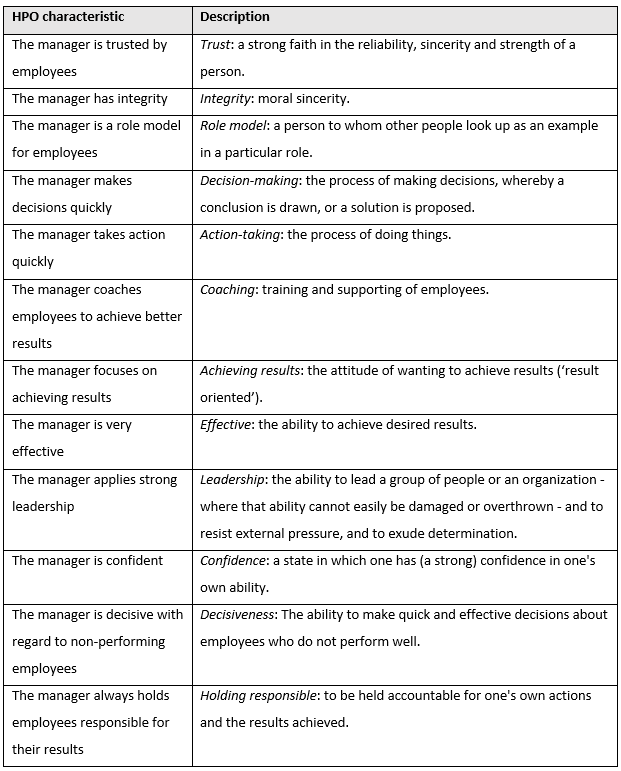
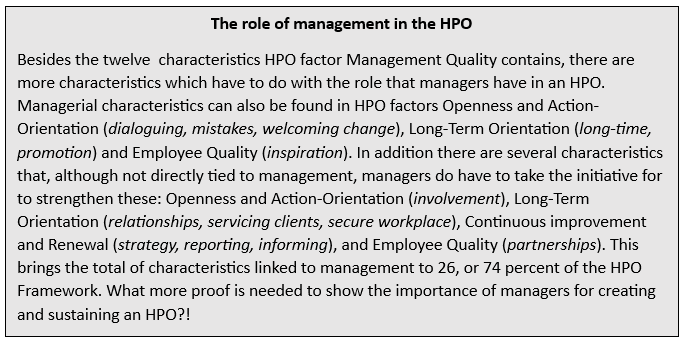

Exercise: Assessing Team Dynamics and Fostering Innovation
1. Assessing Team Harmony
• Does your team experience healthy debates, or are disagreements avoided?
• Is there a variety of perspectives represented, or does a uniform outlook prevail?
• When was the last time a team discussion led to a breakthrough idea or solution?
2. Evaluating Team Conflict
• Are conflicts within your team productive, or do they impede progress?
• How does the team handle disagreements? Are they resolved constructively?
• Do team conflicts lead to better solutions, or do they often remain unresolved?
3. Understanding Team Innovation
• Does your team regularly challenge the status quo with new ideas and approaches?
• How are innovative ideas fostered and encouraged within the team?
• Are different opinions valued as potential seeds for innovation?
4. Exploring the Ripple Effect
• Does the team’s dynamic foster an innovative culture throughout the organization?
• How do you ensure that innovation is not just top-down but also bubbles up from all levels?
• In what ways do the HPO factors and characteristics manifest in your team’s behavior?
Discuss the following with your team:
• If you find your team leaning towards too much harmony, explore reasons why this might be happening. Consider the potential downsides of a conflict-averse environment and strategize on how to introduce more diversity of thought into your discussions.
• If your team is inclined towards frequent conflicts, deliberate on how these can be channeled constructively. Identify the root causes of the disputes and establish ground rules for healthy, productive debates.
• Whether your team is harmonious or contentious, brainstorm how you can enhance creativity and innovation. Use the HPO factors and characteristics as a guide to structure these enhancements.
• Create an action plan to cultivate a balanced environment where different views are encouraged, conflicts are navigated constructively, and innovation is a shared goal.
Finally, discuss how to extend this balance and culture of innovation beyond the management team to all employees, ensuring the entire organization benefits from a diverse and dynamic approach to performance.

Case Study – Showing strong and disciplined leadership
Iringa University College (IUCo), part of Tumaini University and owned by the Evangelical Lutheran Church of Tanzania, offers a range of academic programs through its four faculties, an agriculture institute, a postgraduate research directorate, and a center for rural entrepreneurship. With 2,700 students from Tanzania and nearby countries, IUCo is led by a Provost who reports to the university’s board of directors. The Provost is supported by deputies overseeing academic affairs and administration, with various deans, directors, and department heads under them.
IUCo faced several challenges, including a surge in student numbers, competition from other universities, students unprepared by secondary education, regional poverty, distance from major cities making staff recruitment hard, expensive off-campus housing, church politics, high construction costs, increased competition from privately funded universities, and limited government student loans. To address these issues and improve enrollment, teaching quality, research, and financial stability, IUCo turned to the HPO Framework for guidance. After implementing the HPO Framework and focusing on improvement areas identified in two HPO diagnoses conducted years apart, IUCo saw significant progress. It ranked among the top ten universities in East Africa, gained national and international recognition, increased student recruitment and retention, improved education quality, expanded its facilities, enhanced employee satisfaction, and achieved financial stability.
A key factor in these improvements was the strong leadership of the Provost. He simplified IUCo’s strategy into five clear statements by consolidating over twenty strategic documents with his management team. He carried these statements on a laminated card in his jacket pocket, referencing them in discussions with employees and the Tumaini University Board. When board members suggested changes or projects that did not align with IUCo’s strategic goals, the Provost used the card to defend the college’s strategic direction, demonstrating remarkable courage and strong and disciplined leadership, by standing up for IUCo and by sticking to the stated strategic direction.

Course Manual 5: Employee Quality
In conversation with a CEO – A Knock on the Door
There was a knock. “Come in,” called Peter.
The door opened and a well-dressed man walked confidently in.
“Aha, Steven, glad you could join us. This is the journalist I told you about.”
Tanya stood up to greet the man. “Hello, how are you?”
“I can’t complain,” replied Steven. “How can I help you both?”
“Have a seat, Steven,” Peter responded. He turned to the young woman. “Tanya, Steven is our chief performance officer.”
Tanya’s eyes widened. “I remember reading something about the new term CPO, but I didn’t realize it was a reality.”
Steven chuckled. “I can assure you I do indeed exist.”
“I don’t mean to be offensive, but what exactly does a chief performance officer do?” Tanya asked in a tone sharper than usual.
The CPO laughed. “That’s something I ask myself sometimes. But seriously, my job is to enable the organization to perform as well as possible. That doesn’t mean I’m responsible for the company’s results. I create the conditions that allow our employees to be their best.”
“How do you do that?”
Peter interjected. “That’s exactly why I asked Steven to join our discussion.” He addressed the CPO. “Steven, we’ve reached the second pillar of the HPO, and I thought it would be a good idea if you explained it to Tanya, especially since you’ve been heavily involved with it.”
“Sure, where should I start?” asked Steven.
“First, tell Tanya about the need to have employees who are flexible in responding to changing circumstances, and how you’ve instilled a proactive attitude in them.”
“Good idea, Peter. You see, Tanya—may I call you Tanya? It comes down to three things. There needs to be an emphasis on data analysis, on truly understanding what the information means, and on reacting to that information by taking the right action. It’s about the story behind the numbers and doing something with it.”
“Is that it?”
“If only,” chuckled Steven. “To become an HPO, it’s absolutely essential to hire people who are curious, who want to be challenged, who want responsibility but also want to be held accountable. Such people want to perform well, everywhere and at all times.”
“It doesn’t sound easy to find those people.”
“It isn’t, but we make no compromises here. If we don’t think a new employee fits the profile, we don’t hire them. Not even if it costs us revenue.”
“What do you mean?”
“Well, especially when the market is good, which it has been recently, an additional employee automatically generates so much extra revenue. But that’s a short-term gain. We’re looking for long-term continuity, employees who perform well both in good times and bad.”
Tanya turned to Peter. “Just like with managerial quality, it sounds like the employees have to be able to do and be everything.”
“That’s not actually achievable,” Peter replied. “But you have to view it differently, more broadly. It’s about ensuring that your entire workforce, and indeed your management team, possesses the necessary qualities and skills as a group. You can’t expect one person to be all-around; to be able to do everything. But fortunately, my weakness can be your strength, so together we complement each other.”
“There’s one more important thing here,” said Steven. “Tanya, do you know what the biggest danger is that threatens a management team when appointing a new member?”
“I have a feeling it has to do with diversity.”
 “Why do you say that?”
“Why do you say that?”
“Because diversity is the only point under this pillar we haven’t covered yet,” the journalist chuckled.
“Sharp. But you’re absolutely right. You’re naturally inclined to include someone in the team with whom you get along well. The danger is that this person is like you in attitude and behavior…”
“… and in ideas!” Peter added. “And that’s deadly, because then no innovation occurs. So always ensure diversity, not only in the management team but also among your employees. Hire people of different ages, cultural backgrounds, genders, and educational levels so that they can stimulate each other and constantly come up with new triggers.”
“Triggers?”
“Yes, triggers—ideas or incentives for improvements that bring about the necessary innovation. They also challenge people, and you know, people who are challenged stay longer.”
“That sounds particularly important in the current war for talent.”
“Absolutely! Especially since many organizations look too narrowly at that battle. They think they win by being very good at bringing in people. But that’s not the key; the real challenge is keeping these people after they’ve joined, which is much harder. So keep inspiring them, keep challenging them, allow them to come up with new things, offer them development opportunities, then you create a sustainable HPO workforce.”
To become an HPO, it is essential to hire and keep employees who are naturally curious, enjoy being challenged, desire responsibility, and are willing to be held accountable. They should also have a strong drive to excel at all times and in all situations. These high-performing employees outdo the average worker, significantly boosting the organization’s overall effectiveness. With such a team, a company can truly transform into an HPO.
In this course manual part we deal with the HPO factor Employee Quality. Each of its four characteristics is discussed. At the end a summary table is given.
Inspiration
Inspiration means motivating someone to be excited about doing something. Employees in HPOs look to their managers to motivate them to keep improving and achieve remarkable results. They want to be constantly challenged and pushed to grow, aiming to contribute significantly to the organization’s success. Since HPO employees are exceptional, managers need to actively engage them to maintain their interest in staying with the company.
HPO managers inspire their teams by providing them with engaging work, challenging assignments, and more responsibilities. They emphasize the importance of being proud of personal and organizational achievements. They encourage qualities like self-confidence, an entrepreneurial spirit, determination, a positive attitude, and a desire to win. By setting high expectations and ambitious goals, HPO managers push their employees and themselves to higher performance levels. They make their teams feel they are part of something larger and inspire them to strive for excellence within the organization. With their passionate drive and commitment to persuasion, they rally their teams around common goals.
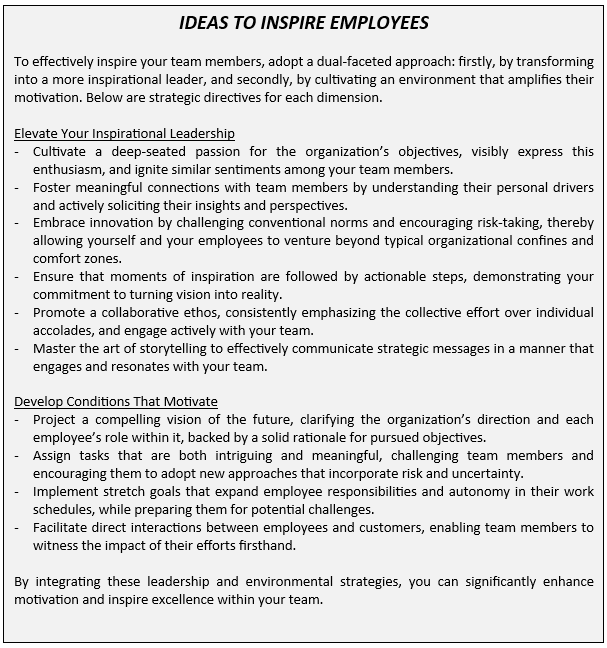
Resilience and flexibility
Resilience means bouncing back quickly from difficulties, and flexibility means being able to adapt and change easily. HPO employees live by the motto “We’ll find a way to succeed, no matter what.” They do not easily give up and continuously try new approaches until they achieve their objectives. They are eager to learn new skills and gain new knowledge, constantly improving themselves through training, taking on new roles and responsibilities, and participating in job rotation programs.
HPO managers focus on building their team’s resilience and adaptability. They use the master-apprentice approach, where less experienced employees learn from those with more experience. They offer on-the-job training that helps employees get comfortable with change and uncertainty as normal parts of work life. Additionally, when hiring, they look for individuals who have demonstrated strong resilience and flexibility in their past roles.
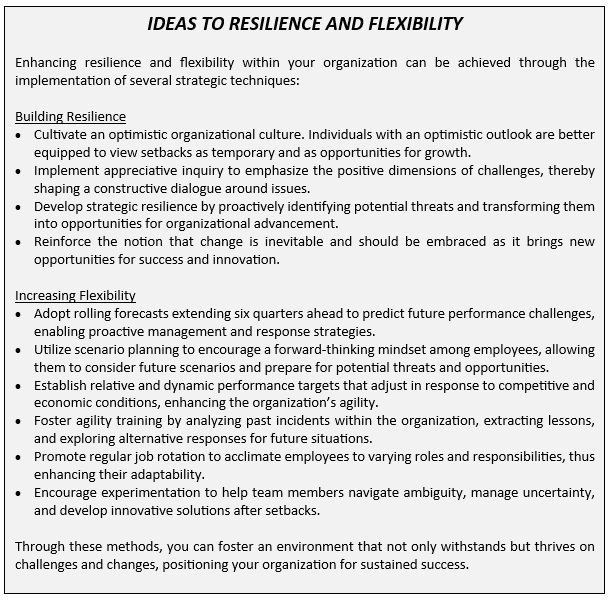
Diversity and complementarity
A diverse and complementary workforce means having employees with a wide range of differences, such as abilities, backgrounds, and experiences, which together provide all the strengths an organization needs. This diversity is valuable because it brings together various perspectives and ideas, enhancing the organization’s ability to come up with new solutions and strengthen its problem-solving capabilities.
Managers in HPOs focus on building teams that are both diverse and complementary, ensuring they have the necessary mix of skills, experiences, and creative thinking to tackle the organization’s challenges and find solutions to its problems. They hire people who bring a variety of abilities, backgrounds, personalities, and skills that complement each other. To find these diverse individuals, they use various recruitment strategies and focus on identifying and nurturing talent in different ways.
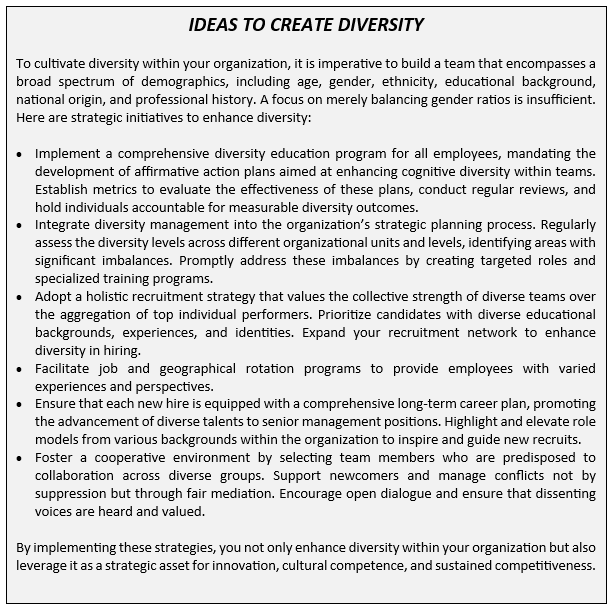
Partnerships
Partnership means working together with one or more people or organizations to achieve shared goals. Managers and employees in HPOs focus on building partnerships and joining networks that create value, helping both themselves and the organization grow. They encourage working together across different organizations by prioritizing teamwork and collaboration. This includes working closely with suppliers, customers, and other partners as a standard practice across the company.
Their goal is to establish high-performance business ecosystems (HPBEs) with organizations that are also HPOs and have top-notch collaborative processes. To achieve this, they support the idea of virtually integrating with these partners in the supply chain, which means redesigning and improving the processes that span across different organizations. People in an HPO actively seek out partnership opportunities with external parties because they recognize the benefits of learning from others.
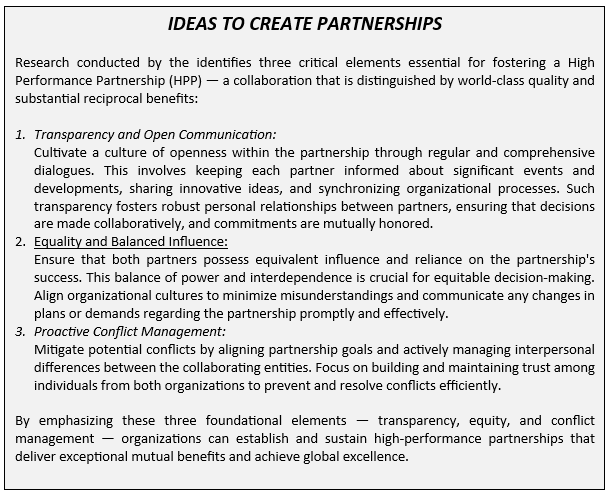
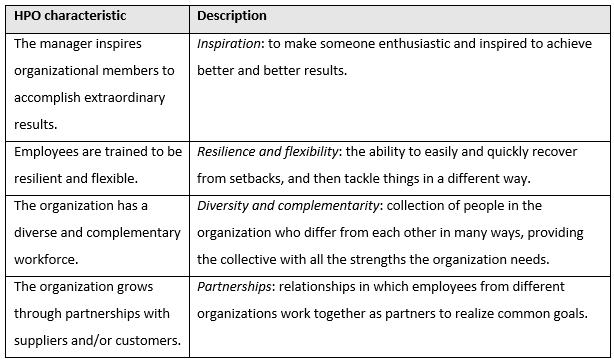

Exercise: Elevating Employee Performance
• Reflect on the key qualities that make a high-performing employee: curiosity, challenge-driven, accountability, and the drive for excellence.
• Consider how well these qualities are represented in your team.
Step 2: Team Discussion
• Initiate a conversation with your team about the importance of these qualities and how they align with the team’s goals.
• Encourage team members to share when they felt most challenged and energized at work.
• Together, identify areas within your current projects or workflows that could benefit from a fresh perspective or new challenge.
• Determine actions to integrate more diverse thoughts and skills into your team dynamics.
• Discuss the role of internal and external partnerships in driving performance.
• Explore how cross-functional teamwork and external collaborations could bring new learning opportunities and innovation.
• Ask each team member to commit to one action they can take to help the team grow towards high performance.
• Agree on a simple follow-up mechanism to support and review these commitments.
• End with a collective affirmation of the team’s commitment to embracing high-performance principles and continuous improvement.

Case Study – Training everybody to become tomorrow’s leader
Warwick, Rhode Island, may not be the most picturesque location, and the Atrion Networking Corporation’s building, with its two front windows and plain walls, might not catch your eye. Despite its unassuming appearance, Atrion, founded in 1987, was a leading company in merging information technology with business. Atrion excelled in enhancing business productivity and client satisfaction by offering tailored technology solutions. These solutions ranged from consultations and project management to certified training, telephony, software services, and more, all aimed at making IT a key driver of business success. The company’s dedication was also evident in the workshops it offered and the articles its staff published, showcasing their commitment to both clients and the industry. Thanks to this approach, Atrion enjoyed steady growth and received multiple accolades, including being named a Best Place to Work and one of the Fastest Growing Private Companies.
A significant factor behind Atrion’s success was its focus on its people. The company prioritized internal development, starting with a hiring process that looked for individuals eager to learn and grow. Atrion trained its staff to be versatile and take on leadership roles, regardless of their position in the company. The CEO emphasized the importance of character, attitude, ambition, and values in their hiring. Atrion provided leadership training to all employees, offered extensive on-the-job coaching, formal development programs, and gave employees the freedom to direct their own career paths.

Course Manual 6: Openness and Action Orientation
In conversation with a CEO – A Misunderstanding About Learning
“There’s something I don’t quite understand,” Tanya continued the conversation.
“What’s that?” asked Peter, amused.
“As you know, I write for a living, but I don’t do it just because I get paid. I’m also curious, I really want to learn about the subjects I come across.”
“So?”
“So why don’t more people share this passion for learning?”
“What do you mean?”
Tanya raised her arms, almost knocking over her coffee cup. “Do you know how many copies a well-known management book writer sells on average?”
Peter shook his head.
“Not too many, I can assure you. Do you know why that is?”
The CEO shook his head again.
“Because managers don’t keep up with their professional literature. It’s not just about reading professional journals and books, everyone should seize all opportunities to learn. Like attending training programs, but those are often one-off events, and few people really try to apply what they learn. Shouldn’t it be normal for people to want to keep improving themselves?”
“I do that,” Peter countered, pointing to the well-stocked bookshelf on the other side of the room.
“Okay, I said many managers, not all,” Tanya backtracked a bit.
“I’m just teasing you. You’re actually right.” He tapped his finger on the third factor of the HPO framework. “That’s why we spend so much time here actively promoting learning. We are a true learning organization.”
The journalist perked up. “I’d like to hear more about that.”
“Have you noticed that we actually stop learning, at least in a formal way, when we leave school and start our working lives?” Peter asked. “Indeed, as you said, employees receive training a few times a year, but I agree, those are special occasions where they often learn a specific skill.”
“So you see this as a problem too?”
“Definitely. Let me give you an example. How often do we introduce a new management concept and then expect our people to understand that concept immediately and apply it without further help? If they’re lucky, they might get a brief introduction, but that’s more often not the case.” He cast an inquiring glance at Tanya. “Could you ride a bike the first time you got one?”
Tanya rubbed her knee as if remembering a painful incident. “No, not really.”
“Why do we then think that our people can understand something as complicated as management in one go, or worse yet, apply it—that’s madness? The complexity is always underestimated. Additionally, we expect, no, we demand that they help the organization excel, without proper training and guidance.”
Peter paused, needing to catch his breath. “Sorry Tanya, I always get a bit emotional about this. Anyway, we try to do this differently. We as management spend a lot of time engaging in dialogue with employees.” His eye caught what Tanya was typing in her notebook. “What does that say, communication?”
Tanya nodded, puzzled. “Isn’t that right?”
“Not exactly. I’m talking about dialogue, and that’s something quite different from communication!”
“But isn’t communication very important? That’s what you read in all HR magazines,” the journalist countered.
“Communication is a fig leaf for not engaging in conversation with your employees. If something goes wrong, you can always say, ‘I told them, didn’t I? I stood on the soapbox, I sent all kinds of progress emails throughout the organization, so there.’ All nonsense. You need to listen to your employees, not talk at them. Listen, and then do something with what you’ve heard. That’s dialogue: you must invest first, but the investment always pays off. Moreover…”
“Wait,” interrupted Tanya, the CEO now in full flow. “Let me jot this down.”
Peter gave her a minute, but then burst forth again. “Moreover, managers who listen to their employees set a very good example. People realize how important it is to listen to each other. They spend more time engaging in dialogue with one another, exchanging information, knowledge, and best practices, eventually creating an open culture. Okay, it might take a while, it doesn’t happen overnight, but at some point, it does happen. Especially if you do something very important…”
“What’s that?” Tanya urged him on.
Instead of answering, Peter posed a counter-question. “Tanya, what do you learn the most from?”
“From your mistakes,” came the quick reply.
“And what are you absolutely not allowed to make?”
“Uh, mistakes?”
“Exactly, mistakes. From a young age, we’ve been taught not to make mistakes, and if you do make them, to cover them up as quickly as possible. Do you know what the major downside of that is?”
“What?”
“You’ve said it yourself, then you learn nothing. Worse yet: you also remove all desire to experiment if you don’t allow mistakes to be made. Experimenting always involves trial and error.”
“I see, but what do you do about it?”
“We involve employees as much as possible in important processes. We ask for their opinions, share our ideas with them, show our doubts and considerations. We discuss our mistakes together…” Peter chuckled. “There’s even a business unit that discusses ‘the blunder of the past month’ on the first Monday of each month. I’m not sure I like that name very much, but the idea is sound: bring up the stupidest thing you’ve done and tell what you’ve learned from it… and more importantly: what your colleagues can learn from it. Brilliant, I think.”
“And what…”
“Sorry to interrupt you, because I almost forgot to mention something important. All that openness, those dialogues, that knowledge exchange, happens with a specific purpose: to get those aforementioned triggers and then do something with them. After all, we’re a performance-oriented organization that’s constantly looking for opportunities to improve. We don’t just talk for the sake of talking, we have to do something with it!”
The guiding principle of a High Performance Organization (HPO) is “a day without learning is a day wasted.” This reflects the deep-rooted curiosity among HPO team members about finding ways to enhance the organization, its processes, and its people. They dedicate significant time to discussions, exchanging knowledge, and learning together. For them, the joy of working comes from the opportunity to grow personally and to contribute to the organization’s development.
In this course manual part we deal with the HPO factor Openness and Action Orientation. Each of its six characteristics is discussed. At the end a summary table is given.
Dialogue
Dialogue means having a conversation where people with different views talk to improve decisions and actions. In many organizations, communication often flows just one way, from managers to their teams, mainly to share information or persuade them to take specific actions. Even though team members might respond or offer suggestions, these inputs are frequently overlooked.
Unlike one-way communication, dialogue involves a genuine exchange of ideas. Both parties, the sender and the receiver, discuss and enrich the topic by exploring its implications and ways to enhance it. HPO managers understand that simply sharing information does not guarantee effective communication. They do not mistake regular meetings for real dialogue. True dialogue involves listening to others and considering their feedback in planning and action. HPO managers use dialogue to build commitment, spread belief in their mission, and ensure everyone clearly understands their goals. They start by listening, allowing team members to contribute to the conversation with their insights and ideas. Recognizing they do not have all the answers, they tap into the collective wisdom of their organization.
HPO managers view dialogue as a powerful tool for mutual exchange and use it to engage their teams passionately, always open to further input. They often adopt an ‘open door policy’ with a twist: instead of waiting for employees to come to them, they take the initiative to go out and engage with their teams directly. This approach breaks down barriers, making it easier to have meaningful conversations and understand how everyone is doing, reinforcing the importance of two-way communication in building a strong, responsive organization.
Knowledge sharing
Knowledge sharing means exchanging understanding and insights on various topics with others. In today’s organizations, knowledge is incredibly valuable because it includes best practices, lessons learned, problem-solving techniques, and creative ideas that are hard to copy. In HPOs, there is a strong focus on sharing information, knowledge, and best practices across the entire organization. Managers ensure there are systems and a shared knowledge base in place to gather and distribute knowledge and best practices efficiently throughout the company.
Moreover, HPO managers actively encourage and make use of new ideas and knowledge from anyone in the organization, regardless of their position or department. They emphasize the need for sharing knowledge across different areas of the company, breaking down barriers between divisions, functions, and ranks. This approach is crucial because studies have shown that organizational boundaries, like different business units, job functions, and office locations, can significantly reduce communication between people. For example, two individuals in the same department and location are likely to communicate about 1,000 times more than those who are in different areas or locations. Without a strong emphasis on regular knowledge sharing, there is a risk that the organization could become fragmented into isolated groups or “silos.”
Employee involvement
Employee involvement means getting team members actively participating and sharing experiences at work. Recent studies have found that a key factor distinguishing successful organizations from less successful ones is how well they recognize employees’ contributions to the company’s success. Interestingly, this recognition is not just about financial rewards but also about employees feeling valued and taken seriously by management. This includes managers listening to employees’ ideas, encouraging them to develop these ideas into actions, and involving them in quality improvement initiatives across the organization.
When employees are allowed to contribute and have a say, they tend to feel more committed and like they have a stake in the decisions and actions the company takes. However, for employee involvement to be truly effective, certain conditions must be met:
– Participation does not mean everyone has the same level of involvement in every activity. It varies from being informed and joining discussions to thinking along, deciding, and executing tasks.
– Participants need to have sufficient knowledge to contribute meaningfully.
– Everyone involved should understand that their participation aims to benefit the entire organization, not just their own department.
– Participants should be prepared to handle uncertainty and ambiguity, recognizing that their input might not always change things in the way they hope.
Making mistakes
Allowing mistakes means letting people make errors or poor decisions without punishing them. Studies have found that organizations often learn more from their mistakes than their successes, and the lessons from failures last longer than those from wins. However, admitting to mistakes is hard for many, especially for those in higher positions, as managers often hesitate to admit their errors openly.
HPO managers encourage experimenting and learning from mistakes. They allow their teams to take risks and are open to taking risks themselves, viewing mistakes as learning opportunities. These managers understand that setbacks are part of the process and focus on solutions and improvements rather than assigning blame. In an HPO, people are encouraged to openly discuss their mistakes to learn from them. Those who bring attention to issues are praised for their honesty, while those who hide their errors are corrected. In an HPO, the focus is not on why a mistake happened but on how to fix it and what can be learned from the experience. However, making the same mistake twice is not acceptable. HPOs also believe that if you are not making any mistakes, you are likely being too cautious and not pushing the boundaries of innovation.
Welcoming change
Welcoming change means being open to and embracing opportunities for things to become different. In HPOs, managers encourage change by helping the organization and its people become more self-aware. This self-awareness prompts individuals to consider if they need to change and helps develop the skills necessary for making those changes, thereby increasing flexibility. HPO managers take an active role in leading change. They get personally involved in change initiatives and are willing to adjust their leadership styles to meet the needs of the change process.
Performance-driven
Performance-drivenness means focusing on doing things well and achieving strong results. In HPOs, people understand that success is not guaranteed to last forever. They actively avoid becoming complacent and continuously challenge how things are currently done. They aim for the highest level of excellence in all aspects of the organization’s work and encourage each other to reach high performance levels. They are disciplined in carrying out their tasks but are also prepared for occasional disappointments, building resilience to overcome setbacks. This mindset ensures that they ultimately meet their goals.
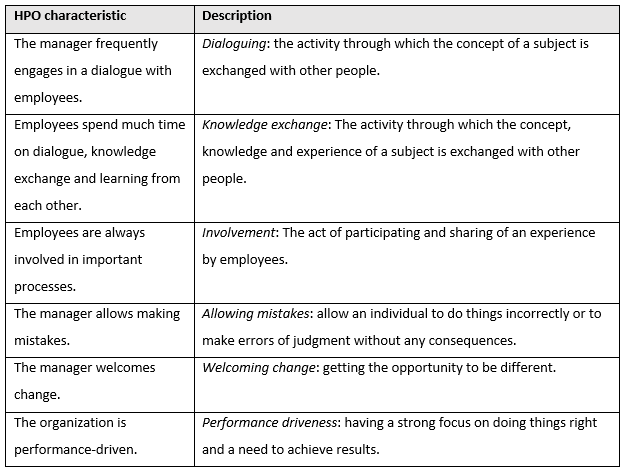

Exercise – FRESH AND STINKING FISH — ENCOURAGING OPEN DIALOGUE
1. Introduce the Exercise:
• Explain the goal of the exercise and the fish metaphor. Fresh fish represent positive contributions and what is working well. Stinking fish symbolize concerns or fears that worsen when hidden.

• Give each team member two sheets of paper: one for a fresh fish and one for a stinking fish, related to a specific topic on the agenda.
• Allow about five minutes for everyone to jot down their thoughts.
• Gather in a circle and invite each person to share their fresh and stinking fish with the group, spending 30 to 60 seconds each.
• After sharing, discuss as a group how you can address the stinking fish and reinforce the fresh ones.
• Develop an action plan for how the team can leverage positive insights and address concerns.
• Conclude by acknowledging the normalcy of uncertainty and affirming the value of discussing it openly.
• Encourage the team to address stinking fish in future meetings, ensuring these concerns are taken seriously and not dismissed.
• Monitor the emotional undercurrents during the exercise; acknowledge and validate feelings.
• Use open-ended questions to delve deeper into the issues raised.
• Encourage active listening, where each team member’s perspective is heard and considered.
• Emphasize the role of trust in making the team a secure base for innovation and problem-solving.

Case Study – Open door and open book policies
In the Back Bay area of Boston, Massachusetts, tucked away in an office building on Huntington Avenue, you would find Longfellow Benefits on the tenth floor. Despite its modest location, Longfellow was a standout company, having won Boston’s Best Employer Award six years in a row. Founded in 1999 by four visionaries, Longfellow built its reputation on teamwork, accountability, and understanding, offering employee benefits consulting and advisory services. As a broker, Longfellow helped companies select the best health insurance, retirement plans, and executive benefit systems, earning through commissions or fees without engaging in any special compensation schemes. The firm prioritized its clients’ and their employees’ interests in all recommendations.
Longfellow’s mission revolved around listening to and advocating for clients, delivering top-notch service, being a compassionate and unbiased business partner, leading the industry in thought, and continually growing and innovating. The company had established itself as a thought leader, with its associates frequently published and quoted, and it maintained strong partnerships with clients through a team dedicated to service, strategy, compliance, education, and communication. Longfellow enjoyed consistent growth and low employee turnover, with many team members staying for over a decade.
A key to Longfellow’s success was its open door and open book policies. The CEO emphasized the importance of executives being accessible: “The open-door policy for us means that the door is open for us, executives, to leave the office and to go to the work floor. People always feel a hesitation to enter the office of the chief executive officer so I need to come to them. I try to go to the operation floor at least once a week to talk to people. And every morning I do my rounds on the office floor, to chat with people and see how they are doing.” This approach, along with transparency about the company’s financials (‘open book’), fostered an environment where everyone felt comfortable discussing ideas and learning from mistakes. After client meetings, the team reviewed the discussion, provided feedback, and explored improvement opportunities. The CEO assured that mistakes did not cost anyone their job: “If you make a mistake at Longfellow, you’ll not lose your job. You don’t have to look over your shoulder all the time here, you can learn from your mistakes, you will not be punished. It has to be this way anyway, a lot here is learning on the job because it is a creative job. We have to be like this if we want to offer tailor-made solutions to our clients.”

Course Manual 7: Continuous Improvement and Renewal
In conversation with a CEO – A Breath of Fresh Air
Peter and Tanya decided to get some fresh air and strolled through the beautiful courtyard, chatting. After a while, they sat down on a bench under a tree.
“We might as well discuss the next factor now,” said Peter.
“Oh yes, the one about continuous improvement and innovation. That’s been a hot topic for a few years now, hasn’t it?” Tanya responded. “What exactly is the difference between innovation and improvement, and why don’t you call it continuous improvement like everyone else?”
“Because continuous improvement isn’t clear enough and doesn’t go far enough. This pillar is really about two things: improving existing products, services, and processes and at the same time innovating those same products, services, and processes. The first is about continuously doing better what you’re already doing; the second is about actually developing new things and bringing them to market.”
“But isn’t this pillar more of a prerequisite, something that should already be in place?”
“You would think so, especially with all the media attention it has received, but unfortunately, that’s not the case. My organization certainly wasn’t doing well in this area, and most organizations struggle with it as well.”
“What have you done then?”
Peter smiled. “Do you remember what I told you last night about strategy?”
“Yes, that it’s not important!”
“Well, that’s not quite right.” Peter shook his head. “I said that a strategy by itself isn’t enough to become an HPO, which is different from it not being important.”
Tanya nodded. “That’s true, but it sounds like a subtle difference.”
“But a crucial one!” Peter exclaimed. “Consider this: not important essentially means that it doesn’t really matter whether you have a strategy. Not enough means that having a strategy alone is not sufficient to become and remain an HPO. So, you must have a strategy, but…”
“…there needs to be something extra,” the journalist interjected. “If I remember correctly, you talked about uniqueness yesterday.”
“Exactly. It doesn’t matter whether an organization opts for cost leadership, product differentiation, customer intimacy, or a combination of these strategies: the distinguishing factor is the uniqueness of the chosen strategy in the industry or market in which the organization operates. And being unique is darn difficult.”
“How are you unique then?”
“We try to be unique in various ways. You can bring uniqueness into strategy formulation, so you aim to achieve or offer something unique. But you can also be unique in how you execute a more generic strategy.”
“Can you give an example?”
“Yes, okay. A few years ago, we as management said to each other that we were losing touch with the internet youth. We began to understand the youth less and less; the gap was widening, and that was inevitably going to affect our revenue. We were at risk of bringing fewer products to market that interested the youth. And if you don’t catch them early, they won’t come back later in life.”
“How did you react?”
“We set up a new business unit and made an eighteen-year-old guy the director. He was allowed to put together his own management team, so he hired all seventeen and eighteen-year-olds to carry out one assignment: develop products and services for their peers. Doing something like this is revolutionary in our industry.”
“Brilliant. How did it turn out?”
“Well, it was quite difficult at first to let those youngsters do their thing. They naturally made all sorts of rookie mistakes, but we as senior management showed incredible discipline and didn’t interfere. It paid off doubly: two years ago, the first products from their efforts accounted for a quarter of our revenue!”
“I’m impressed…” said Tanya admiringly.
“Thank you. The bottom line is that you constantly need to work on developing a unique strategy that then leads to improved or new products, services, processes, and core competencies. Everyone in the organization must constantly be on the lookout for triggers, things that provide new ideas that we can then turn into tangible innovations. Speaking of processes, that turns out to be an important characteristic of an HPO: good process management.”
“What does that involve?”
“It means organizing the entire organization to be able to execute that unique strategy. And that means constantly improving, simplifying, and aligning processes.”
“Then you must run a lot of projects,” Tanya chuckled.
Peter threw his hands up in mock horror. “Far from it, please no!”
“What did I say?” asked the journalist, somewhat startled.
“We actually hate projects. We’ve realized a long time ago, like many other organizations, that we tend to start too many projects. The trouble is that each project has its own merits, but we pile too many on top of each other. The logical consequence is that we don’t finish them, or we complete them incompletely, too late, or with too little return. Terrible!”
“What do you do about it then? Because without projects, there’s no innovation?”
“That’s not necessarily true, Tanya. For example, you can make improvement part of daily tasks. Then everyone watches for improvement opportunities in the processes during their execution and has the authority to tackle them immediately. In addition, you can still carry out projects, but then with discipline.”
“Discipline?”
“Yes, discipline. Start by agreeing that as an entire company, you will undertake three projects in the coming year; no more, no less. Then you only start a fourth project when the first three are completely finished, within budget, on time, and with the intended results.”
“Is it that simple…?”
“…and also that logical. Look at yourself, how many articles do you write at the same time?”
Tanya laughed. “Usually just one or two. I see your point, I once tried to produce two articles and a book at the same time, but it was a complete disaster. None of them were ever published.”
“That’s what I mean. Discipline in executing projects is a great asset.”
It had gotten rather chilly in the garden, so Tanya and Peter had gone back inside. The journalist was reviewing her notes on the HPO characteristics. “I see we’ve covered almost everything about this pillar except for the aspects related to reporting.”
“We definitely shouldn’t forget those,” Peter responded with a broad smile. “We’re actually quite proud of what we’ve achieved in that area.”
“You’ve piqued my curiosity again…”
“We’ve developed and implemented what we call the high rating model.”
“Is that something like the 7S model from that famous consultancy, whose name escapes me at the moment?”
“Something like that, but different. The high rating model stands for high Relevance, high Attention value, high Timeliness, high Insightfulness, high Neutrality, and high urGency.”
“Could you elaborate on that?” Tanya asked, typing away furiously.
“Of course. Within an HPO, performance information is extremely important. It needs to precisely indicate how the factors that truly make the organization successful are performing. This performance information must be sent at the right time, in the right form, to the right people, so they can take corrective or preventive action. In short: the information must be relevant, meaning it measures what matters. It must have a high attention value, which means it should spur management to take action. The information must be delivered timely and be insightful. The latter means that the performance information should provide a good understanding of underlying trends, developments, and issues. Additionally, the information must be neutral, meaning it is reliable at all times and doesn’t place blame on anyone. If it did, we would spend more time collectively covering our tracks than actually addressing what really matters: solving problems and seizing opportunities. The performance information must therefore create a sense of urgency, an impetus for people to continuously improve.”
“Wow, your high rating model sounds impressive!” Tanya exclaimed. “But… shouldn’t the last letter actually be a U?”
Peter burst into laughter. “You’re right, Tanya, but the high ratinu model just doesn’t sound as good!”
In an HPO, everyone feels a strong duty to always aim for the top results and to bring out the best in themselves, their teammates, and the entire company. To reach their highest potential, they constantly work on enhancing their existing products, services, processes, and key strengths. This means getting better at what they already do well, while also innovating and evolving to stay ahead.
In this course manual part we deal with the HPO factor Continuous Improvement and Renewal. Each of its eight characteristics is discussed. At the end a summary table is given.
Unique strategy
A unique strategy is a one-of-a-kind plan of action for a business. In many industries, creating a strategy that stands out from the competition is challenging because most companies offer similar products and services. However, the way these products and services are sold and how customers are treated can vary greatly. HPOs find their uniqueness in both what their strategy involves and how they carry it out. They ask themselves, “Why should customers choose us over our competitors? What makes us special?” and build their strategy around the answers to these questions, leading to new opportunities and innovations. They also come up with fresh approaches to replace outdated strategies.
While strategic plans can often be complex and hard to understand, HPOs aim to summarize what makes them unique on the first page of their strategic plan. This way, everyone immediately knows what sets the organization apart and can easily grasp these concepts. In sectors like non-profit and government, where the law usually dictates what tasks must be performed, how these tasks are executed is up to the organization. This flexibility allows these organizations to differentiate themselves by how they approach their work and serve their clients and communities.
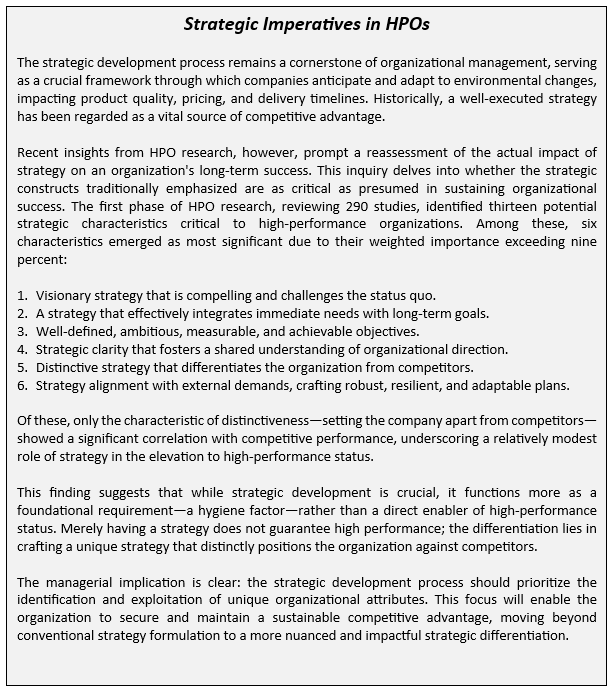
Process improvement, process simplification and process alignment
Process improvement means making the way we do business better. Process simplification means making our business operations easier to manage. Process alignment means ensuring all parts of our business operations work well together. In HPOs, there is a constant effort to enhance and streamline every process to make the organization more efficient and effective. This involves cutting out unnecessary steps, tasks, and any kind of waste, and making sure what is left is well-organized. They tackle the problem of having too much information, implement just-in-time processes, and adjust processes to increase speed. They ensure all processes work smoothly together, avoiding any delays or problems. Continuous improvement is achieved by connecting every part of the production and service delivery chain and using efficient models to manage these connections. This is done by adopting a holistic view of the system, applying lean principles to every work aspect, and quickly adopting new and improved ways of working.
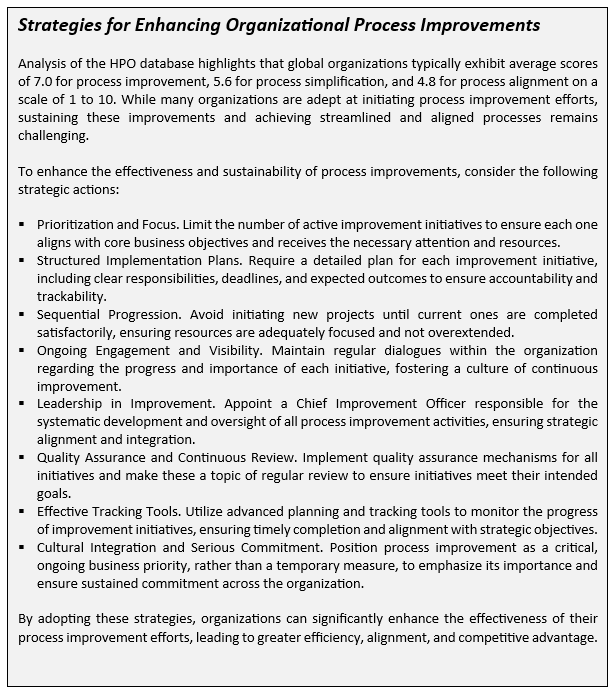
Performance management
Performance management is about guiding an organization by clearly defining its mission, strategy, and goals, and then tracking progress with specific measures to ensure it stays on course. It involves two main aspects: performance reporting and sharing this information across the organization. In HPOs, there is a focus on measuring what is truly important to the organization’s success. This is done by creating a model that connects the overall objectives to specific, measurable elements using critical success factors and key performance indicators.
People in an HPO regularly track these measures to see how well they are doing against their goals, and they are not shy about facing the truth when things do not go as planned. They rely more on hard data and facts than on gut feelings or opinions, concentrating on actual outcomes rather than just efforts or appearances. The goal is to focus on the results produced, not just the resources used. To do this effectively, they develop measurement criteria that are clear, timely, easy to understand, and simple to calculate. They also ensure that both financial and non-financial information necessary for making improvements is shared with everyone in the organization. This way, everyone has access to the data they need to help enhance their work and the organization’s overall performance.
Innovation of products, services, processes, and core competencies
Innovation means introducing new ideas and ways of doing things. In HPOs, there is a constant push to innovate products, services, processes, and key strengths, which helps them stay ahead of the competition. They quickly come up with new products, services, and processes to adapt to changes in the market. To support innovation, they create a culture that values learning, is open to change, questions old ways of doing things, always looks for ways to improve, and is deeply focused on innovation.
People in an HPO are great at coming up with new ideas, trying them out, and then successfully putting them into practice. They work on improving what they are already good at while also exploring new areas. They aim for both small, gradual improvements and big, game-changing innovations. They understand what their organization is uniquely good at, excel in these areas, and then work on enhancing and refreshing these skills and knowledge. They focus on their core strengths, keep these capabilities within the organization, and outsource tasks that are not central to their expertise.
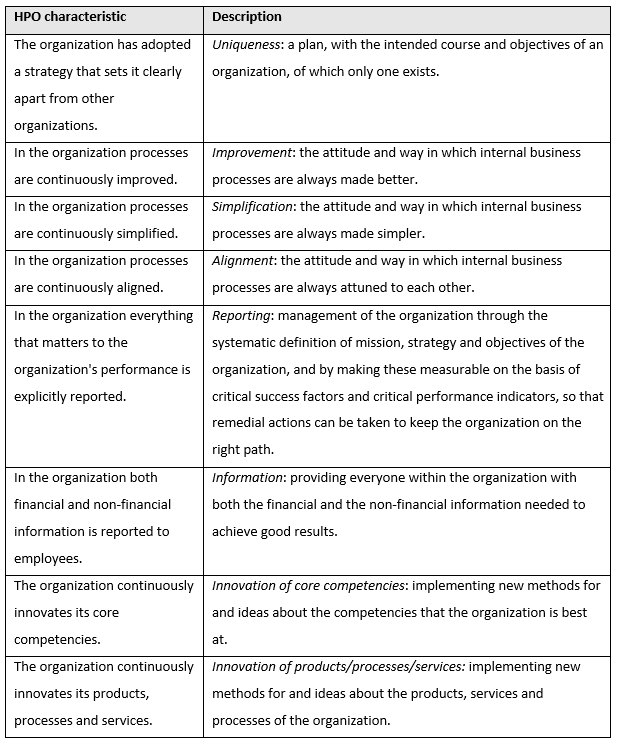

Exercise – Pathway to Innovation
1. Identify and List:
• Have each team member identify one element within their scope of work that could benefit from improvement or innovation.
• Compile a list of these elements and display them where everyone can see.
• For each element listed, discuss as a team how it currently functions and how it could potentially be improved or innovated.
• Encourage team members to consider both incremental changes and radical rethinking.
• Challenge the team to brainstorm how they could make their approach to their tasks or service delivery unique.
• Formulate a mini-strategic plan that includes these unique approaches and aligns with the organization’s overall strategy.
• Review your current processes as a team and identify areas that are overly complex or misaligned.
• Develop strategies for simplification and better alignment, ensuring every process is efficient and contributes to the organization’s objectives.
• Define clear, measurable goals related to the identified elements for improvement or innovation.
• Establish a simple tracking system to monitor progress towards these goals.
• Discuss what a culture that genuinely supports innovation would look like.
• Develop actions to foster this culture, such as regular brainstorming sessions or encouraging learning from other industries.
• Select the most promising ideas from the brainstorming session.
• Create a plan to test these ideas, assigning responsibilities and setting deadlines for pilot projects.
• Reflect on the exercise and gather feedback on the process from your team.
• Ensure the team understands that this will be an ongoing process, not a one-time event.
• Wrap up the session by emphasizing the importance of an ongoing commitment to excellence.
• Recognize the team’s willingness to challenge the status quo and explore new opportunities for growth.

Case Study – Fact-based discipline
The Customer Relations department at Ziggo, a Dutch media and communications service provider, recognized the need to enhance its processes to better serve customers and achieve its financial targets. To do this, they adopted the HPO framework. The management team focused on empowering employees to reach departmental objectives and fostering teamwork, while also keeping track of and sharing the outcomes. Over five years, this approach led to significant improvements: employee satisfaction increased, profits nearly doubled, and customer satisfaction reached a record high of 7.5 out of 10 for the industry.
The management team was determined to make their transformation into a High-Performing Ziggo visible. For this, they set specific goals to gauge the success of the transformation, including better scores on customer satisfaction surveys, higher employee satisfaction, quality certifications, awards (like “best website of the country”), and public acknowledgment of the department’s quality (such as media praise for assisting customers with payment issues). These goals, along with targets from ongoing improvement initiatives, were tracked using a CR Change Scorecard. This tool helped managers monitor the shift to becoming an HPO across various aspects of change, allowing them to discuss progress in weekly meetings and make necessary adjustments and improvements to the pace and approach of change and communication strategies as needed.
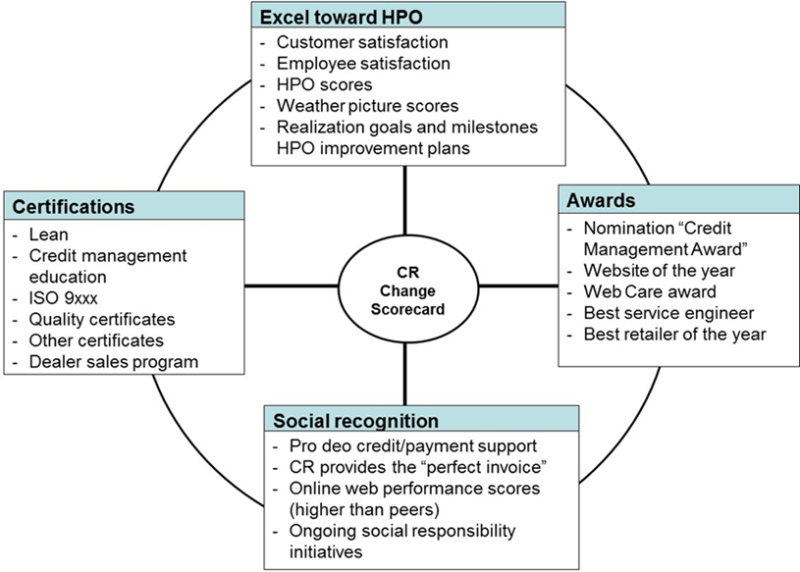
Figure: The CR change scorecard, for continuous improvement purposes

Course Manual 8: Long-Term Orientation
In conversation with a CEO – Rethinking What an Organization Should Achieve
“The traditional view of what an organization should achieve is based on a rather one-sided view of the world,” Peter resumed the conversation. “It’s based on the idea that an organization exists to create maximum value for shareholders. To achieve this, agreements are made between shareholders and management, and between management and staff about the results that need to be achieved. Staff then achieve these results because there is both a reward in place and a system of measurements, controls, and bonuses used by management.”
“What’s wrong with that, it works that way, doesn’t it?”
Peter sighed. “It might work in the short term, but look at the excesses we’ve seen at the beginning of this century—the accounting scandals, bonuses that were off the charts, social unrest, and a great erosion of people’s loyalty to the company. We’ve prioritized the interests of just those groups who are, in principle, the least committed to the company, with all the detrimental consequences that follow.”
“If you put it that way, shareholder value thinking does indeed sound problematic,” Tanya admitted.
“How can this be remedied?”
“We have chosen to invest our energy in balancing the interests of all stakeholders of the organization. These are all the parties that have an interest in the continuity and good performance of the organization. Naturally, these include the shareholders, but also the employees, customers, suppliers, the government, and social groups. We believe that we do not have a right to a place in society, but that we must earn that place. That automatically means we look much further into the future. Just a quick question for you, Tanya. Do you know how long the long term is for a typical profit company?”
“Uh, three years or so?”
“If only! No, it’s three months.”
“One quarter?”
“Yes, one quarter. Each quarterly report has to be better than the last. Miss two, and it’s irrevocably over for you.”
“Terrible!”
“You can’t build an organization on that. We operate on a ten-year basis. Yes, our strategic plan does not look further than three years ahead, but we always make decisions with the long term in view. This then translates into everything we do.”
“Like what?”
“For example, we work to keep our people, both managers and staff, with the organization as long as possible. We have people who have been working here for many years. We prefer to promote new management from within our own ranks, and we do not fire people quickly. Not even when times are bad, because that demoralizes those who remain, and worse: when the economy picks up again, where are you going to find good people? No, we aim for continuity.”
Tanya looked a bit troubled. “But people who stay that long, don’t they become a bit stale?”
“I don’t think so!” Peter exclaimed. “Yes, you’re right, if people sit in the same place for years without development, they do not progress, they can become old-fashioned and sleepy. But you can’t lose sight of the other HPO factors.”
“What do you mean?”
“I’ll give you an example. Think of the HPO factor continuous improvement and innovation. It entails that people in an HPO are constantly busy improving and renewing themselves and the organization, doing new things. That keeps things fresh and achieves what the Americans call a ‘double whammy.'”
“A what?”
“A double whammy! An HPO has people who, because they have been with the organization for a long time, know the industry and the customers extremely well and know exactly what’s going on and what the customers want. And they couple that with a fresh spirit, an attitude to keep trying new things to serve those customers. So, they are extremely capable of serving the customer.”
“Meh,” Tanya scoffed, “I know that, the customer is king. Not really, as long as you’re not a customer, you’re king, because then they try everything to make you a customer. But once they have your money, you’re no longer important to them.”
“It’s a shame, but you’re right, Tanya, that’s still how it works at many companies. That’s so foolish because we’ve known for a long time from research that existing customers are much more lucrative than new customers. So bringing in new customers through the front door while existing customers leave through the back door is not economically wise. But apart from that, we genuinely want to help the customer. Customers are everything to us. They grant us their trust, they want to do business with us, they expect all sorts from us. They pays our salaries, our vacations, and so forth, so we must do everything to make them happy. And not just customers, this also applies to suppliers and partners. They all place their trust in us and we must never betray that trust. We never enter into partnerships for a short time; we want to be in it for the long haul.”
In an HPO, the focus is always on ensuring the organization’s long-term success rather than just making quick profits. This approach to thinking about the future benefits everyone connected to the organization, including customers, suppliers, employees, government agencies, interest groups, and the wider community. The goal is to have a positive impact on all these stakeholders.
In this course manual part we deal with the HPO factor Long-Term Orientation. Each of its five characteristics is discussed. At the end a summary table is given.
Stakeholder orientation
Stakeholder orientation means aiming to benefit everyone who is impacted by an organization’s success or failure. In HPOs, there is a belief that focusing only on shareholders is too narrow. Instead, they strive to build strong, lasting relationships with all stakeholders, ensuring that everyone benefits. HPOs keep in close touch with their key stakeholders to understand their needs and work to align these needs with the goals of the organization. They also show their commitment to the community by investing in local economies and the environment. By prioritizing social value (consisting of ESG – environment, social, governance; CSR – corporate social responsibility; and EDI – equality diversity inclusivity), they not only contribute positively to society but also build a strong and positive corporate reputation, making social value creation a key part of their operations.
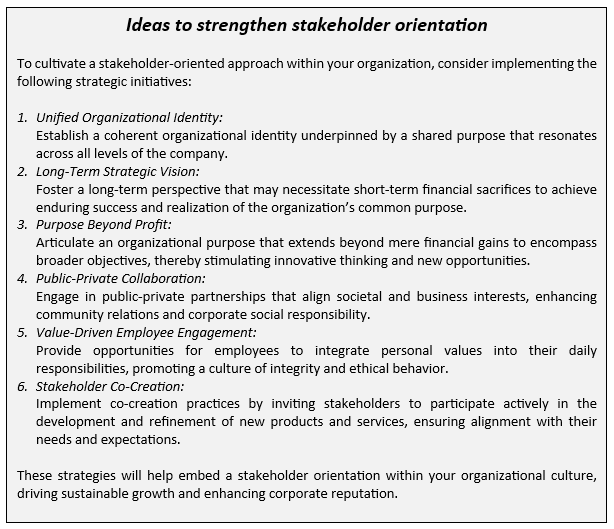
Customer orientation
Customer orientation means how a company views and treats its customers. In HPOs, there is a strong focus on customers, to the point of being ‘obsessed’ with them. These organizations actively learn about their customers’ desires and values through direct interaction. By engaging with customers and responding promptly to their inquiries, concerns, and needs, they build outstanding relationships.
HPOs prioritize customer loyalty by making customer satisfaction a key objective. They identify essential factors that lead to exceptional customer satisfaction and regularly gather feedback to assess how satisfied customers are. They set high standards for customer interactions and consistently meet these standards. This approach includes providing products and services that meet customer expectations and even anticipating needs that customers may not have expressed.
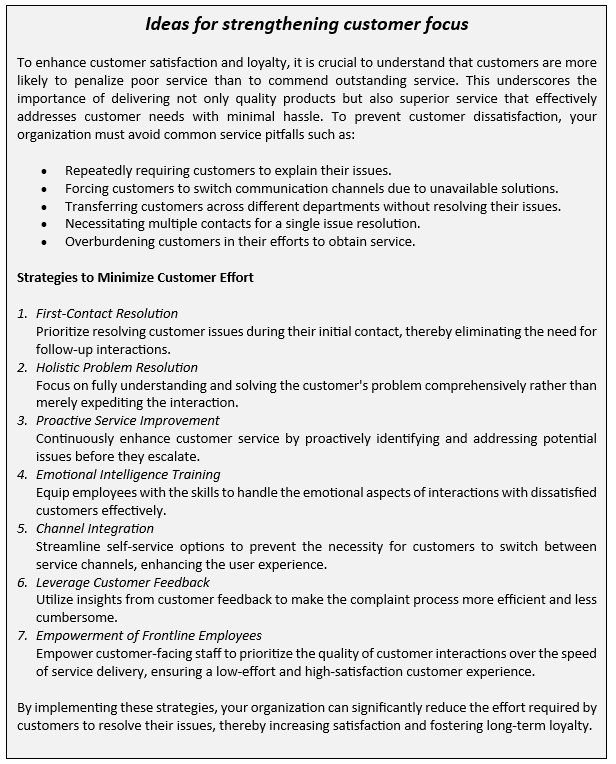
Longevity
Longevity means staying with an organization for a long time. HPO managers often remain with their companies for extended periods. This long tenure allows them to gain deep knowledge about the industry, customers, how the organization works, and its employees. With this understanding, they can introduce new ideas effectively, continuously contributing value to the organization.
HPO managers are dedicated to the long-term health and success of the company. They steer clear of chasing after the latest trends for quick wins. Instead, they focus on strategies that ensure the organization’s ongoing sustainability. They are skilled at balancing what is best for the organization with their own interests and encourage their team to prioritize the organization’s needs. By committing to the organization for the long haul, HPO managers build lasting relationships within the company. Their example encourages others to stay and grow with the organization, fostering a stable and committed workforce.
Promotion from within
“Promotion from within” means moving someone who already works at the organization up to a higher position. In the business world, there is often a preference to hire external managers to lead because it is believed they will bring new ideas and perspectives. However, many external CEOs end up underperforming and leave the company after a short period, typically having shorter tenures than CEOs who were promoted from within the company. Research shows that companies led by CEOs who have been promoted from within tend to perform much better than those that hire their CEOs from outside.
HPOs focus on preparing internal candidates for leadership roles, ensuring there is a pool of potential leaders already within the organization. They select new employees not just for their current skills but for their potential to lead, looking for qualities like determination, energy, endurance, and the ability to motivate others. HPO managers offer leadership development opportunities, such as job rotations and professional growth programs. They also identify and nurture high-potential employees by placing them in important business roles to test and develop their leadership skills.
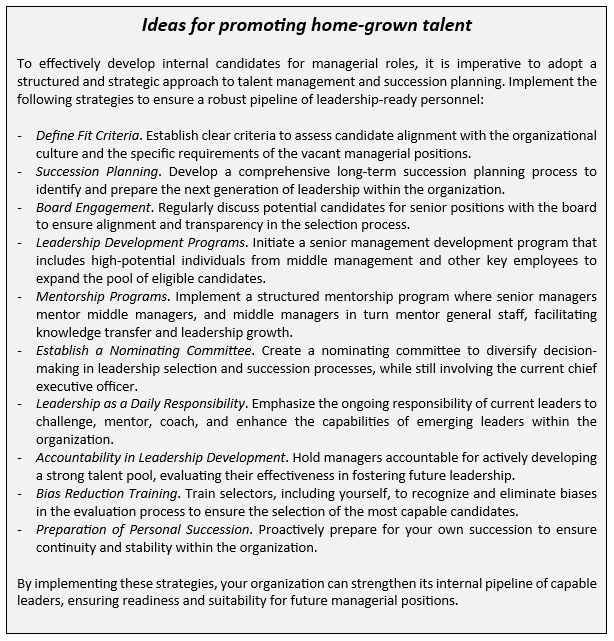
Secure workplace
HPO managers build a safe and stable work environment, with a high feeling of physical and psychological safety, where employees do not have to worry about danger or fear. They focus on keeping employees on board, avoiding layoffs unless absolutely necessary. They foster an open culture where everyone can share their thoughts, criticisms, and ideas freely, and act independently in their roles. By creating a caring workplace, they aim to keep employee turnover low. In exchange, they expect employees to contribute positively and help meet the company’s objectives.
Additionally, HPO managers work to boost employees’ self-confidence, understanding that confident employees depend less on strict rules and more on their own judgment. This confidence makes employees feel more secure in their roles, encourages them to speak up, and generally act in ways that drive high performance. HPO managers reassure their teams that not meeting targets will not lead to job loss but rather to opportunities for training in weak areas or reassignment to roles that better match their skills.
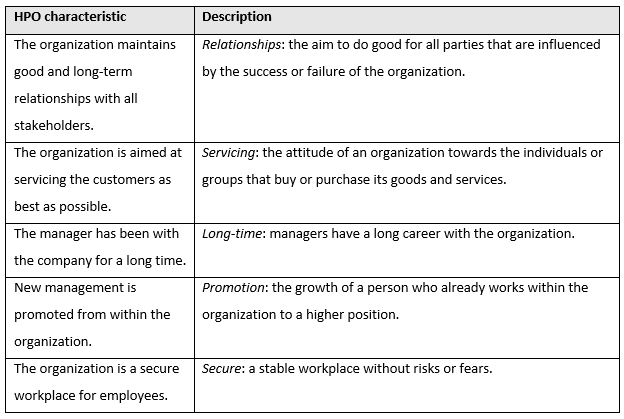

Exercise – The Long-Term Stakeholder Web
• Large sheets of paper or a whiteboard
• Markers
• Sticky notes
1. Mapping the Stakeholder Web:
• Begin by asking each participant to draw their organization at the center of a large sheet of paper or a whiteboard.
• Around the organization, have them map out all the stakeholders (customers, employees, suppliers, community, etc.) connected to the organization.
• Use lines to connect these stakeholders to the organization and to each other, illustrating the web of relationships.
• Discuss as a group how the organization currently impacts each stakeholder, focusing on the long-term effects.
• Write these impacts on sticky notes and place them on the corresponding lines in the web.
• For each stakeholder, ask the group to describe the ideal long-term relationship and impact they would like the organization to have.
• Compare these ideal scenarios with the current situation and identify any gaps or areas for improvement.
• On new sticky notes, write down strategies or actions that could bridge the gap between the current state and the ideal long-term scenario.
• Place these strategy notes on the web, linking them to the relevant stakeholders.
• Choose the most feasible and impactful strategies.
• Assign teams or individuals to develop detailed action plans for implementing these strategies.
• Set deadlines and define metrics for measuring progress.
• To deepen the understanding, have participants role-play different stakeholders reacting to the proposed strategies.
• Gather insights on how these strategies might be received and refine them as needed.
• Reflect on how this long-term orientation can change the approach to daily operations and decision-making.
• Have each participant commit to one action they will take to support this orientation.
• Summarize the key takeaways and reinforce the importance of considering the long-term impact on all stakeholders.
• Schedule follow-up sessions to review progress on the action plans and ensure the organization continues to move towards the ideal long-term stakeholder web.

Case Study – Reversing the organizational pyramid
Rogers, a seemingly typical small town less than an hour’s drive from Minneapolis, Minnesota, was actually a bustling business hub. Among its notable companies was Archway Marketing Services, Inc. (Archway), which specialized in handling the logistics for sales and marketing materials for some of the biggest names in retail, fast food, and the auto industry. Archway managed everything from promotional displays and signage to brochures and samples, ensuring these items reached retail locations and sales offices efficiently. For a medium-sized client, this could involve managing up to 6,000 different items. It was easy to see why companies chose to outsource this complex task to Archway, as it offered significant cost savings through its efficient operations.
A key to Archway’s attraction to clients was its unique service model, which flipped the traditional corporate hierarchy upside down. At the top of this inverted pyramid was the client, followed by the Client Services group, which was solely focused on meeting client needs. The foundation of this structure consisted of the Shared Services group, encompassing all the support departments like IT, Logistics, Operations, HR, and Finance. This setup allowed the Shared Services group to provide the best possible support to the Client Services team, enabling them to serve clients effectively and make quick, strategic improvements to client business processes. This model emphasized partnership and collaboration between the two groups, eliminating any internal competition over importance, and ensured everyone worked together for Archway’s success.
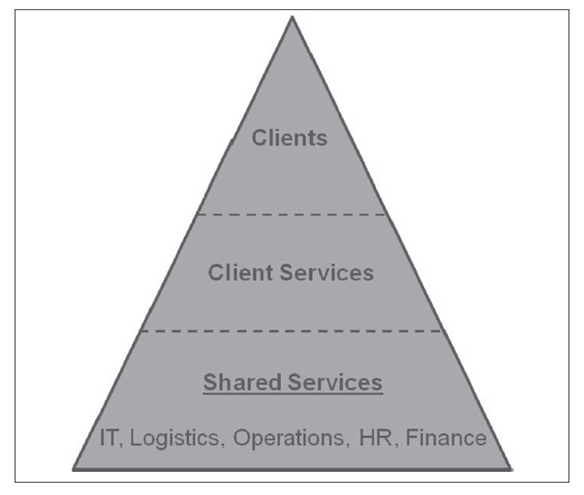
Figure: Archway’s reversed organizational pyramid

Course Manual 9: HPO Benefits
In conversation with a CEO – It pays to be an HPO!
The CEO stated emphatically: “Every organization can and should aim to become an HPO.”
“Why do you say that so emphatically?”
“Because it pays off a lot. ‘It pays to be a HPO’, I always tell my employees.”
“What do you mean by that?” The journalist was now very curious.
The CEO leaned forward to make his point. “Research has been done on how much better HPOs perform compared to non-HPOs…”
“That must be quite something,” interrupted the journalist.
“Indeed,” said Peter, slightly irritated. “Just be patient, Tanya, and I’ll show you how much.” He began rummaging through a drawer in the desk. “Aha, here it is.” He picked up an article from the drawer and slid it across to the young woman opposite him. “Take a look at this page.”
Tanya leaned over eagerly to look at the table in front of her. After a minute, she looked up again and said in amazement, “Hello, this is quite something. According to this article, the difference between HPOs and non-HPOs is considerable. The revenue of HPOs apparently grows on average 10 percent more per year than that of non-HPOs, the profit of HPOs is 29 percent higher, the return on investment and return on equity are about 20 percent better, and the shareholder value is 23 percent higher.”
Peter nodded enthusiastically and added, “And that’s not all. The non-financial performances of HPOs are also significantly higher than those of non-HPOs: higher customer satisfaction, higher customer and employee loyalty, and better quality of products and services. And that year after year!”
Since its first publication in 2007, more than 2,000 organizations worldwide have worked with the HPO Framework, and many new research studies have been based on the framework. This makes it possible to evaluate the financial and non-financial benefits that applying the HPO Framework brings to organizations.
Better employee attitude
Employees have a much stronger focus on making things better. They take greater responsibility for enhancing the organization’s products, services, and processes. This proactive approach leads to ongoing improvements across the board. Additionally, there is a noticeable boost in creativity, with employees feeling more comfortable trying out new ideas. This has resulted in launching more new products and services, getting them to market faster, and seeing more success with these launches. There is also a shift towards a more positive and engaged attitude among employees. They are more focused on finding solutions rather than dwelling on problems. Employees take pride in their organization and enjoy being part of it. There is a renewed sense of purpose and energy, with everyone feeling united by a shared goal: to make and keep their organization an HPO.
Better cooperation
Employees are working together more effectively, not just within their own teams but also with other departments, as well as with suppliers and customers. They are more open to ideas from others and have moved away from working in isolation and in “silo’s”. Instead, they view themselves as part of a connected value chain that needs to work smoothly at every step. This new approach has led to increased trust among colleagues, making it easier to build strong working relationships. There is also a noticeable increase in how much employees care about and support each other. Managers have become more understanding and are fully committed to helping their team members excel. Moreover, the organization as a whole has become more open. Conversations between managers and employees, as well as among different departments, have become more common and more meaningful.
A better organization
The organization stands out because it has a strategy that is different from its competitors, both in what the strategy involves and how it is put into action. This distinct approach makes the organization more appealing to potential customers and job seekers. There is a greater emphasis on focus and discipline now. Fewer projects are started, but those that are taken on are completed on time, within budget, and achieve the intended outcomes. Employees are also deeply committed to social responsibility, actively contributing to society through various initiatives. This focus on stakeholders means the organization’s social efforts have a positive impact on the community. Moreover, thanks to improved service, fewer quality issues, and a stronger track record of meeting goals and keeping promises to clients, the organization is seen as high-quality. This has enhanced its reputation among both the business community and the wider society.
Better financial results
The non-financial improvements mentioned before lead to significant financial gains. Productivity goes up because the same team accomplishes more with greater success. Profitability rises due to reduced costs and increased revenue. As a result, the organization climbs to the top of its industry, continuously expanding its market share. Moreover, with costs and budgets more effectively managed, the organization’s financial health improves and becomes more stable. And in case of non-profit or governmental organizations, they achieve more and deliver higher quality services within the same or a reduced budget.
HPO in specific sectors
In this section an overview is given of the results of HPO research conducted in specific sectors worldwide.
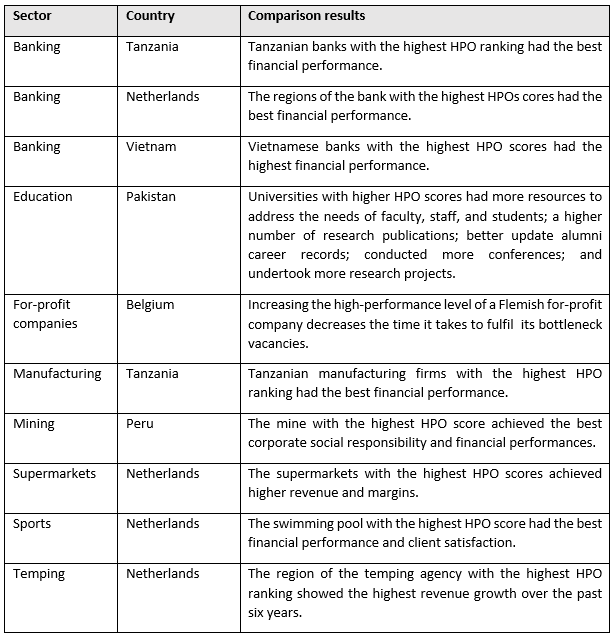
Underneath more detail on each study is given:
• Employees from ten banks in the Tanzanian capital Dar Es Salaam received and completed the HPO Questionnaire. The subsequent average HPO scores, calculated for the ten banks, were ranked and matched with their financial performance. The final matching showed that Tanzanian banks with the highest HPO ranking also had the best financial performance. Tanzanian banks with the lowest HPO ranking displayed the worst financial performance.
• Despite the fact that the regions of the Dutch bank used the same procedures, processes and systems and offered the same products and services, they still achieve different financial results. A closer look revealed that management and employees of the different regions in the Netherlands focused on different things. The units that were paying specific attention to the HPO characteristics performed the best.
• Managers and employees of multiple banks in Ho Chi Minh City and Hanoi, Vietnam, completed the HPO Questionnaire. The banks with the highest HPO scores, especially for factor Continuous Improvement & Renewal, showed the highest financial performance.
• Teaching staff of multiple universities in Pakistan filled in the HPO Questionnaire and also several performance indicators of their institutions (such as number of publications and research projects). Statistical analyses showed that those universities that scored high on the HPO characteristics also scored high on the performance criteria.
• In preparation for a webinar, organized by the Flemish Department of Employment on the attractiveness of organizations, respondents were send a survey with which they could indicate the high-performance level of their organization and how long it took for their organization to fulfil its bottleneck vacancies (i.e. the time between posting a vacancy on the job market and fulfilling that vacancy). Statistical analysis showed that there exists a linear and positive relationship between being an HPO and the time it takes for such a company to fulfil its bottleneck vacancies.
• Employees from ten manufacturing firms in Dar Es Salaam, Tanzania, filled in the HPO Questionnaire and their scores were averaged. The subsequent HPO ranking was matched with the financial performance of the ten manufacturing firms. This matching showed that the Tanzanian manufacturing firms with the highest HPO ranking also had the best financial performance, while Tanzanian manufacturing firms with the lowest HPO ranking reported the worst financial performance.
• A comparison of two mining companies in Peru showed that the mining company with the highest HPO scores applied more corporate social responsibility (CSR) practices and achieved higher organisational performance.
• The Dutch supermarket industry is dominated by a small number of powerful companies which capture the majority of sales and which compete fiercely with each other. This competition is mainly quality based, in the sense of offering increasingly more products of higher quality and striving for better distribution mechanisms. The HPO Questionnaire was used to analyse the strength and performance of supermarkets. It turned out that the supermarkets with the highest HPO scores indeed achieve better financial results, both in terms of revenue and margin achieved, than those of supermarkets with lower HPO scores.
• The HPO scores and financial results of two Dutch swimming pools were compared, with as outcome that the highest-scoring swimming pool had the best financial results of the two swimming pools and also the highest reputation as a client-oriented swimming pool.
• The five regions of a large temping agency in the Netherlands were compared on their HPO scores and financial results. It turned out that the region with the highest HPO scores also achieved the highest revenue growth in the past six years.
HPO at individual organisations
In this section an overview is given of the performance effects of an HPO transformation at individual organisations.
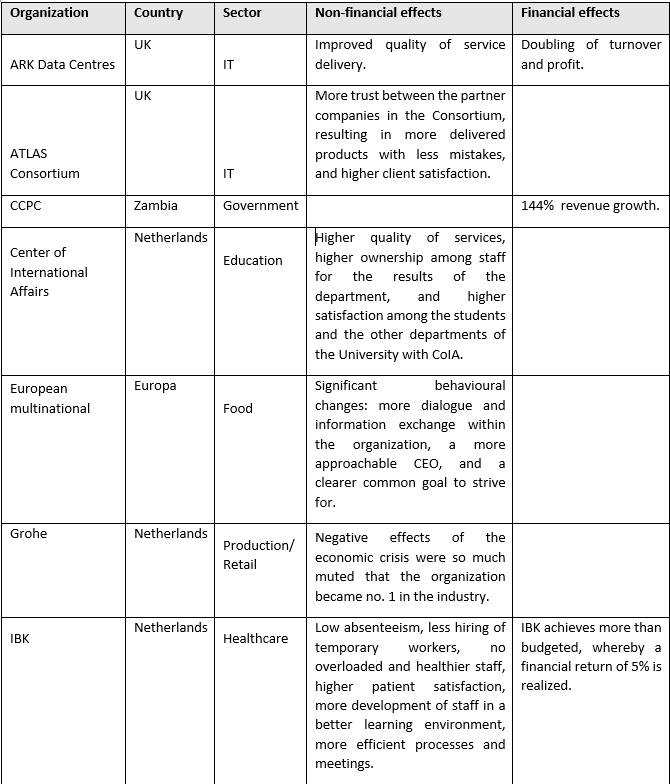
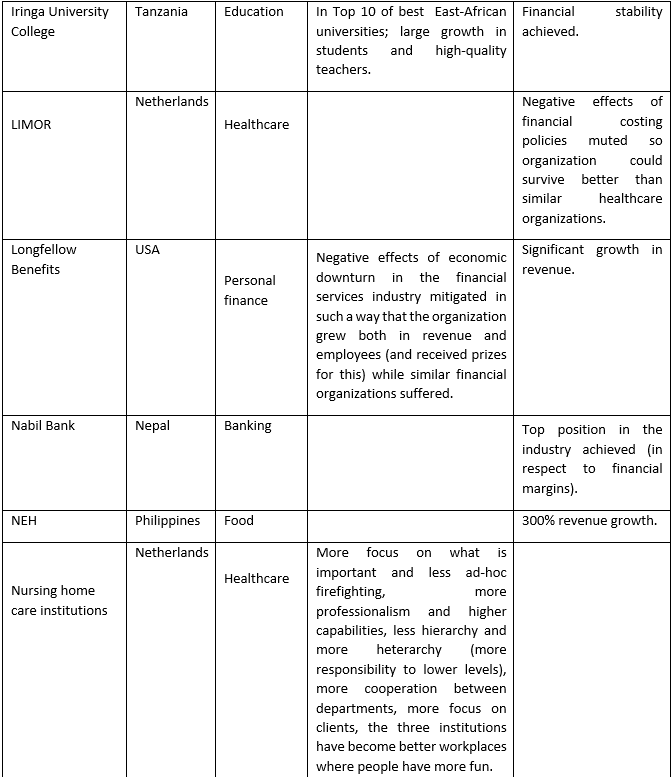
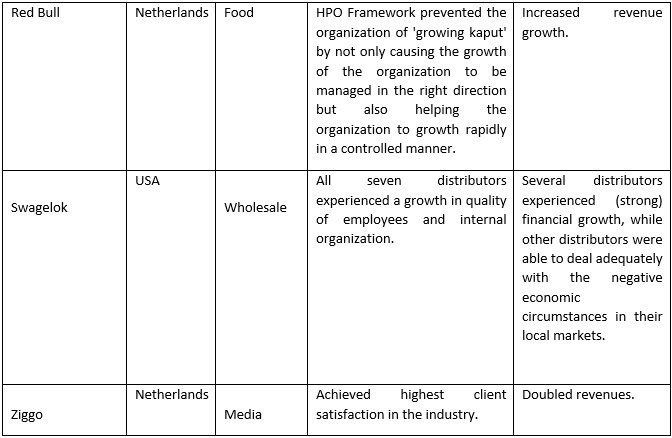
Underneath more detail on each study is given:
• ARK, one of UK’s leading provider of high integrity data centres, used the HPO Framework to make sure the quality of its internal organization could keep pace with the rapid sales growth the company was experiencing. In a series of HPO Diagnoses, with in between the company working on the HPO attention points, the company was able to manage and even speed up its growth while improving the quality of service delivery.
• ATLAS, a British consortium of IT companies working for the British Ministry of Defence, used the HPO diagnosis to increase the quality of its cooperation and to achieve the results that were agreed upon with the Ministry. To this end, the consortium conducted several HPO diagnoses over a period of four years and during the intermediate periods worked on the HPO attention points. The consortium noticed: better relations, more trust and more communication among partner organizations; increased engagement of employees; significantly more applications delivered to a larger number of users worldwide; and external recognition from British governmental committees as being an example of successful cooperation on a grand scale.
• In its quest to become a prosperous middle-income nation by 2030, Zambia realized the need to create a strong economy and increase its gross domestic product. One way to achieve that goal, which the Zambian government applied, was to create high-performance organizations. The application of the HPO Framework at the Zambian Competition and Consumer Protection Commission (CCPC) significantly improve its financial and operational performance in two years, while enhancing two-way communications, employee morale, customer service, and its reputation for efficiency and integrity.
• The Centre of International Affairs (CoIA), part of the Rotterdam University of Applied Science, was charged with the coordination of all policy, knowledge, information, communication, and support processes related to internationalization and international students. CoIA had the ambition to become the centre of expertise regarding internationalization, with smooth and tailor-made services for study programs and students. To support this ambition, a HPO transformation was undertaken. Within five years the HPO status was achieved, and CoIA reported higher quality of services, higher ownership among staff for the results of the department, and higher satisfaction among the students and the other departments of the University with CoIA.
• In an era of increasingly saturated markets and ever tightening competition, multinational firms are diversifying their product portfolios, exploring new areas of operation, standardizing to achieve economies of scale, and generally enhancing the quality of their organization. To be able to do this successfully, a European multinational embarked on an initiative to transform itself into an HPO. Within six months the organization realized significant behavioural improvements, including enhanced communications and employee engagement, and was able to set a course for sustainable renewal.
• The Dutch unit of Grohe, a large European manufacturer and supplier of kitchen and bathroom fixtures, decided to conduct two HPO diagnoses. As a result of working on the HPO attention points, the management of the company stated that the organization had gained a renewed spirit and that the winner mentality had returned. Specifically: the company achieved an increase in openness and action orientation because departments now came together routinely to jointly discuss and take action; many new products had been introduced successfully, and there was a new successful market approach. Sales and profits doubled and market share was won in a difficult competitive market.
• A longitudinal study of five years was performed at the Tactus Intensieve BehandelKliniek (IBK), a closed treatment clinic of Tactus Addiction Care in the Netherlands, in which a diagnosis and analysis of the institute’s status was performed twice. The research results show that the HPO transformation approach yielded many financial and non-financial benefits for this healthcare institute.
• A private university in Tanzania, Iringa University College, wanted to increase the quality of its internal organization and, therefore, conducted two HPO diagnoses, two years apart. In the intermediate period, the organization worked on its HPO attention points. At the time of the second HPO diagnosis, the college reported the following increases in performance which it attributed to working with the HPO Framework: it now ranked among the top ten peer East African universities; it achieved national and international recognition and awareness; it recruited and retained more students; it raised the quality of education; it expanded its facilities considerably; it attained higher employee satisfaction; and it became financially stable.
• LIMOR, a Dutch healthcare provider, used the HPO Framework to ward off and contain the negative effects of external turbulent developments, such as the changed financing method used by the Dutch government. This could have potential disastrous effects on not only the financial position of healthcare organizations but also on their ability to provide care to their clients. The HPO Framework helped LIMOR to create a sense of urgency in the right places so people focused on the right things in the right manner, resulting in the organization performing considerably better than comparable healthcare organizations.
• Longfellow Benefits, a broker (i.e. intermediary) located in Boston USA that advised companies in choosing the best Health and Welfare Plans, Retirement plans and Executive Benefit programs for that company, applied the HPO Diagnosis in order to find out if and where an already successful company could improve. The first diagnosis yielded several improvement points on which the company diligently worked, even though the severe financial and economic recession that befell the industry. The second diagnosis showed Longfellow had maintained its HPO status and had even been able to grow in personnel, clients and revenue. The company won the Boston Best Employer Award several years in a row.
• Nabil Bank Limited, the first foreign joint venture bank of Nepal, conducted two HPO diagnoses over a time span of two years. During these diagnoses, the performance of Nabil Bank was compared with its peer group of Nepalese banks. This comparison showed that both for return on assets and non-performing loans, Nabil Bank was the best bank in the peer group.
• NEH, a banana grower and exporter in The Philippines, noticed that, after working on the HPO diagnosis attention points, an HPO mind-set had arisen throughout the organization: commitment to one goal and one team, with dialoguing a key activity; an increase in the net productive area from 50 hectares per year to 250 hectares; an improvement in the quality of the bananas from 50 to 90 per cent Grade “A”; and an improvement in revenue.
• The HPO Framework was applied at three Dutch nursing home care institutions. In a period of three years the HPO Diagnosis was performed at the three institutions. This yielded information on their status on the way to high performance and attention points which they needed to address to help them further along their journey. Based on an analysis of the transformation process, the experiences and lessons learned from each institution were identified and summarised.
• Red Bull the Netherlands was a young, fast growing company with a serious risk of ‘growing kaput.’ The company had problems managing the current sales in the right way – increasingly mistakes were made in the ordering, delivering and receiving payment for shipments – let alone achieve the ambitious growth objectives of doubled sales in the next three years. The management team decided to use the HPO Framework to strengthen the internal organization in such a manner that current and future growth could be managed in the right direction and the company could grow in a controlled manner. The HPO Framework indicated the areas where strengthening was needed and by addressing these areas in an expeditious way, Red Bull the Netherlands not only achieved the desired growth but even surpassed it without experiencing quality issues.
• A group of seven sales and service locations of Swagelok, a North American manufacturer of fluid system components, applied the HPO Diagnosis twice over a period of two years and in between worked on improvement opportunities identified per specific location. During the second diagnosis the effects of applying the HPO Framework were evaluated and it turned out that this application had different outcomes depending on local circumstances. Some locations experienced a growth while other locations used the HPO Framework to battle the consequences of adverse economic circumstances. All locations however agreed that the HPO Framework had been instrumental, in a positive way, to the development of their organization and its people, and for several locations this already resulted in increased financial performance.
• Realizing the need to improve its processes in order to better serve its customers and meet its financial goals, the management of the Customer Relations department at Ziggo, a Dutch provider of media and communications services, turned to the HPO framework. Management developed a strategy for empowering employees to attain departmental goals and cultivating teamwork, all while measuring and communicating results. In five years, the department has seen sustainable improvements: employee satisfaction is up, profits have almost doubled, and the once-struggling department has achieved an all-time high customer satisfaction score for its industry of 7.5 out of 10.
HPO factors: evergreens?
A key question is whether the HPO factors will remain relevant over time. Managers want to know if focusing on these factors will help ensure their organization’s long-term success. To check if the HPO factors and characteristics stay consistent over time, studies from before and after the mid-1990s, around when the ‘new economy’ emerged, were analyzed. This period saw significant globalization and advances in information and communication technology, along with a more educated and vocal workforce. These changes led to a faster-paced business environment, increased competition, and higher expectations from employees, all demanding more from management.
Comparing HPO characteristics identified in studies conducted before 1995 with those from studies after 1995 showed that nearly 90% of the characteristics remained the same, despite the substantial changes in the business world. This consistency suggests that the 35 characteristics of the HPO Framework are likely timeless management principles crucial for building and maintaining a top-notch organization. Managers should always consider these characteristics when planning how to lead their organizations to excellence and outstanding results.
This finding is reassuring because, although the business environment may shift, the essence of competition and managerial work remains constant. Therefore, the HPO Framework’s relevance for the future is strong, offering organizations a reliable guide for evolving into a High Performance Organization.

Exercise

Case Study – The benefits of an HPO transformation
In Course Manual 3 ARK, one of UK’s leading provider of high integrity data centers, was introduced. This company used the HPO Framework to make sure the quality of its internal organization could keep pace with the rapid sales growth the company was experiencing. In a series of HPO Diagnoses, with in between the company working on the HPO attention points, the company was able to manage and even speed up its growth while improving the quality of service delivery. Summarizing the diagnoses results, ARK increased its HPO score in 3 years 1,1 point thus becoming an HPO, while at the same time experiencing significant growth in both revenue and created data warehouse capacity (see the Figure).
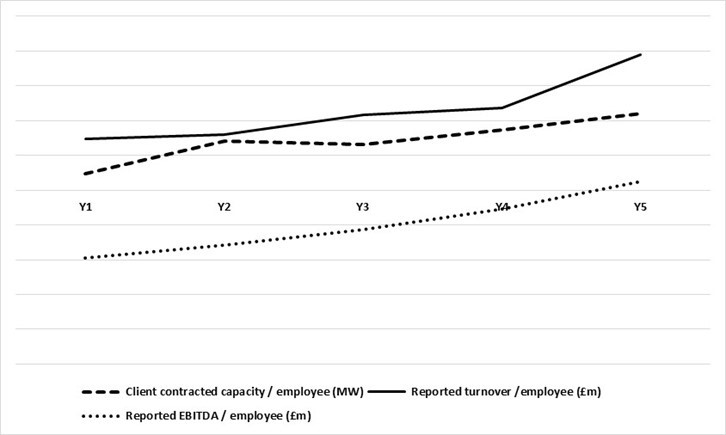
Figure: The performance of ARK data Centres during the HPO transformation period

Figure: The performance of ARK data Centres during the HPO transformation period
The transformation yielded several key results:
• Ark had evolved into a more mature and cohesive organization. It moved from a chaotic start-up phase, reminiscent of a children’s soccer team chaotically chasing the ball, to a more structured and calm environment. The company had established clear processes and procedures, eliminated internal divisions, and fostered a positive work culture. Additionally, Ark developed useful efficiency tools that could be leveraged more effectively.
• Ark had also become a more interconnected organization, with best practices and excellence being shared across the company through various platforms like Ark University and intranet. Communication had improved, with less hierarchy between staff and senior leadership, leading to a better understanding of everyone’s role and impact within the company.
• A proactive, collaborative culture had emerged, replacing previous disagreements and divisions. The leadership team had become more united, adopting a collective approach to problem-solving.
• The HPO transformation gained new momentum, with business success fueling pride in the company and integrating the HPO mindset into the organization’s fabric. Resistance to the HPO concept had decreased, and HPO Coaches played a significant role in maintaining this momentum by encouraging open and constructive conversations.
• What set Ark’s managers apart during this transformation was their ability to foster a work environment where employees were motivated to collaborate towards a shared goal, even in a fast-paced and demanding industry. They managed to balance focusing on external demands with strengthening the organization internally to handle growth. Moreover, they recognized that maintaining HPO status required ongoing effort, just as much as achieving it.

Course Manual 10: HOW versus WHY
The HPO Framework is not a set of instructions or a recipe which can be followed blindly. Rather it is a framework that has to be translated by managers to the specific situation of their organizations in their current time, by designing a specific variant of the framework fit for the organization’s context. Thus, after the WHAT provided by the HPO Framework (as in “we now know what has to be improved”), the tailoring of the organization, the HOW (as in “how we should improve depends on the organization”), is done by the organization itself. Hence, the HPO Framework is not a ‘silver bullet’ and does not provide a blueprint for high performance; it indicates the areas in the organization that are important for achieving excellent performance after which it is your task and that of your colleagues to undertake improvement actions that strengthen these areas. Thus the HPO Framework provides focus on the areas in your organization that really matter.
As the Figure illustrates the HPO Framework provides a holistic view of the organization
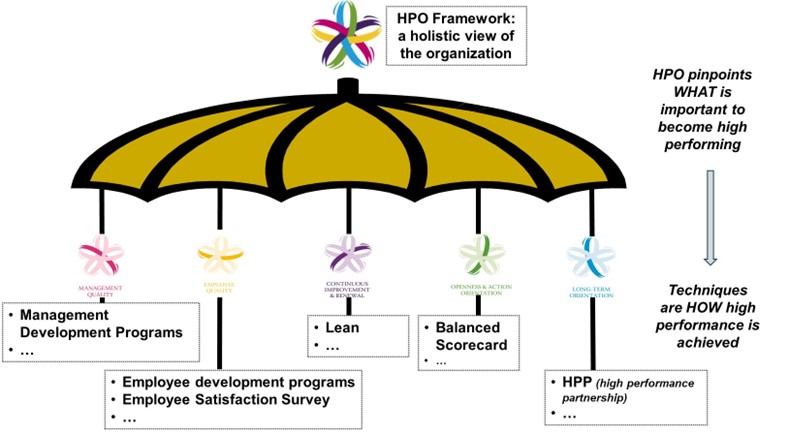
What makes the HPO Framework unique?
Since the 1960s, both business practitioners and scholars have been exploring what makes organizations excel. Since that time, hundreds of publications on excellence and high performance have emerged. So, what sets the HPO Framework apart from other high performance models?
One major difference is how research subjects were chosen. Many studies selected their subjects based on financial performance, comparing successful companies to less successful ones to identify high-performance traits. This method has its risks, such as potentially overlooking valuable insights from non-selected organizations. Recent academic opinion suggests this approach might not be the most reliable. Additionally, most previous studies focused on Western, particularly North American, markets, neglecting non-Western, non-profit, and governmental sectors. This limitation makes it hard to apply their findings globally. The HPO Framework research did not pre-select organizations based on performance. Instead, it reviewed a wide range of studies across various disciplines and included data from for-profit, non-profit, and government sectors in Western and non-Western countries. This comprehensive approach allowed for generalizable findings applicable to diverse organizations.
Another distinction is the HPO research’s transparency and thoroughness. Previous studies often lacked detailed accounts of their data collection and analysis processes, and many were not peer-reviewed. In contrast, the HPO study documented its methods meticulously, presented its findings at scientific conferences, and published them in journals, ensuring validation and critique from the scientific community.
Furthermore, while many models claim universal applicability, the HPO Framework is a framework and not a model. ‘Model’ suggest a one-size-fits-all approach, which does not consider an organization’s unique context. A framework, however, outlines key areas of focus, leaving organizations to tailor the ‘how’ to their specific circumstances. This customization increases the likelihood of achieving high performance. Longitudinal research has confirmed that organizations using the HPO Framework have seen sustained performance improvements.
Critics might argue that the HPO factors are not new, noting that many organizations have already adopted various quality and improvement models. However, unlike those models, the HPO Framework is grounded in scientific research and has been proven to enhance performance sustainably. It identifies the most effective opportunities for improvement, offering a solid foundation for organizations aiming to become High Performance Organizations.
Understanding the importance of WHAT Before HOW
To truly benefit from the HPO Framework, it is essential to first grasp what needs improvement within your organization. This understanding serves as the foundation upon which all subsequent actions are built. The HPO Framework meticulously identifies areas critical to achieving high performance, allowing you to focus your efforts where they will make the most significant impact. However, recognizing these areas is just the beginning.
The real challenge—and opportunity—lies in determining how to implement these improvements effectively. This is where the uniqueness of your organization comes into play. The “how” is not a one-size-fits-all solution; it must be tailored to fit your organization’s specific context, which includes its culture, sector, region, and current stage of development.
Cultural factors play a significant role in shaping how improvements should be approached. For instance, an organization in a highly hierarchical culture may require different strategies than one in a flat, collaborative culture. For example, in a hierarchical organization, introducing a new performance evaluation system might necessitate top-down communication and training sessions led by senior leaders. In contrast, a flat organization might adopt a more participatory approach, involving employees in the development and rollout of the system.
Sector differences also matter; what works in a technology firm might not be applicable in a healthcare organization. A tech company aiming to boost innovation might focus on agile methodologies and continuous learning programs. Meanwhile, a healthcare organization might prioritize patient care protocols and staff training to improve service delivery.
Additionally, regional considerations, such as local regulations and market conditions, can influence the effectiveness of various approaches. A multinational corporation operating in diverse regions might need to adapt its strategies to comply with different regulatory environments and cater to varying consumer preferences. For instance, a marketing strategy that resonates in the U.S. may need significant adjustments to be effective in Asia.
Furthermore, the phase of the organization—whether it is a start-up, in a growth phase, or a mature entity—will also dictate the appropriate methods for implementing change. Each phase has its unique challenges and opportunities, requiring different strategies to navigate effectively. A start-up might focus on rapid scalability and building a robust customer base, while a mature organization might concentrate on sustaining market leadership and optimizing operational efficiency.
By acknowledging these factors, you can customize the HPO Framework to suit your organization’s unique needs, ensuring that the improvement actions you take are not only relevant but also sustainable. This tailored approach is what transforms the HPO Framework from a theoretical model into a practical tool that drives real, lasting change.

Exercise – Which techniques work … and which don’t
• defining a clear vision, mission and strategy
• enhancing trust in leadership
• putting more focus on customers
• creating better career development opportunities
• improving processes with an improved information technology structure
• selecting and putting in a different organizational structure (‘reorganize’)
• implementing competence management
• lowering work pressures
• introducing servant leadership
• appreciating employees more for their efforts
• developing better listening skills in managers
• creating more two-way communication with employees
• laying off poor-performing employees.

Case Study – Using the HOWs to shape the WHATs
Riverdale Social Services (RSS), nestled in the heart of a bustling metropolitan area, embarked on a transformation journey under the guidance of a new director. Tasked with meeting increasing demands for its services amidst a rapidly changing social landscape, RSS turned to the HPO Framework for direction. However, the leadership team was acutely aware that identifying areas for improvement—the “What”— was only the beginning. The true challenge lay in the “How”— tailoring their approach to suit the unique fabric of their organization.
To refine their mission and vision, RSS engaged in a comprehensive overhaul, crafting a mission statement that resonated deeply with their commitment to impacting the community. The new director’s initiative, “Walk & Talks,” became a cornerstone for building trust within the team, offering an informal setting to discuss concerns and aspirations openly. Recognizing the importance of their service users’ input, RSS implemented a feedback system that invited suggestions for service improvement directly from those they served.
The organization introduced a mentoring program to foster knowledge transfer and career development, creating a nurturing environment for both seasoned employees and newcomers. Lean principles were adopted to streamline administrative processes, significantly improving efficiency in client intake. In a bold move towards enhancing agility in decision-making, RSS embraced a flatter organizational structure.
Understanding the critical role of skills development, a comprehensive skills inventory was established, highlighting training needs and arranging targeted sessions to bridge gaps. To combat work-related stress, flexible working arrangements were introduced, offering employees the much-needed balance between their professional and personal lives.
The leadership’s shift towards a servant leadership model underscored their commitment to supporting their teams, ensuring they had the necessary resources and support. A monthly recognition program was launched to celebrate individual and team contributions, fostering a culture of appreciation. Furthermore, management workshops focused on enhancing listening skills among leaders, acknowledging the importance of active listening in effective leadership.
An internal platform for dialogue was created to promote open discussions on policy and strategy, enhancing two-way communication. Rather than resorting to layoffs in the face of performance issues, RSS invested in performance coaching, providing struggling staff with the opportunity to improve their skills.
Through these carefully considered strategies, RSS not only navigated the complexities of implementing the HPO Framework but also made significant strides in enhancing their community impact. This journey underscored the Framework’s versatility when the “What” is seamlessly integrated with the “How,” tailored to an organization’s specific context and needs.

Course Manual 11: Causality
Researchers have long debated whether certain management practices lead to better organizational performance or if it is actually HPOs that are more likely to adopt these practices. Studies show a positive link between specific management methods and organizational success. However, just finding a positive relationship does not definitively prove that these management practices are the cause of better performance. It is possible that the relationship works both ways, with management practices and performance influencing each other.
Despite this uncertainty, many consultants and authors claim their strategies and models will boost organizational performance. Yet, many of these supposed “miracle solutions” only have short-term benefits. The question of what causes what is crucial for managers who need to wisely use limited resources on practices that are likely to improve their organization. This part of the course manual explores whether applying the HPO framework actually leads to better organizational performance.
The relationship between the HPO framework and organizational performance has been substantiated through multiple studies across various industries and regions. These studies collectively demonstrate a consistent positive correlation between HPO scores and enhanced organizational performance metrics such as financial results, employee satisfaction, and market competitiveness.
For instance, European multinational retail divisions that recorded higher HPO scores also reported superior financial outcomes. Similar positive outcomes were observed in diverse settings, including Dutch temporary employment agencies, banks in Vietnam, and manufacturing firms in Tanzania. These findings suggest that higher HPO scores are indicative of better organizational performance across different contexts.
Further research involving the application of the HPO framework showed that organizations that conducted HPO diagnoses and focused on improving identified HPO attention points saw tangible improvements in performance. Examples include:
• A private university significantly enhancing its educational quality and reputation.
• A multinational bank achieving leading performance metrics compared to its peers.
• A manufacturer reviving its corporate spirit and doubling its market share.
• An IT consortium enhancing cooperation quality and achieving high recognition for its collaborative efforts.
• A banana exporter in the Philippines drastically improving agricultural productivity and product quality.
These case studies highlight not just financial gains but also improvements in employee engagement, operational efficiency, and customer satisfaction. Although these studies robustly link HPO practices with improved performance, they have not explicitly dissected the causality between these variables. To investigate the causal link, we now discuss two case studies.
Causality case 1
In the competitive landscape of the UK’s technology sector, a mid-sized company known as Technology embarked on a journey to elevate its performance to that of a High Performance Organization (HPO). With a workforce of approximately 5,000 employees spread across 12 distinct locations throughout Great Britain, Technology offered a uniform range of technology services across its regional offices. Despite the geographical spread, each location operated under the same set of processes, systems, and procedures, aiming for consistency and excellence in service delivery.
To gauge and enhance its HPO status, Technology conducted two comprehensive HPO assessments two years apart. These evaluations aimed to identify areas of strength and opportunities for improvement, with the ultimate goal of boosting organizational performance. The results of these assessments were particularly telling for two of Technology’s locations, referred to as L1 and L2 for confidentiality. On paper, L1 and L2 were nearly identical in every operational aspect, from the services offered to the systems and procedures in place, and even the reward structures for employees. Basically the only distinction between them was their geographical location.
The first assessment revealed L1’s average HPO score at 6.1, which impressively increased to 7.2 by the time of the second assessment. Conversely, L2’s score dipped from 6.4 to 5.9 during the same period. Notably, no other significant improvement projects or initiatives were launched aside from the HPO project, and neither location embarked on any independent initiatives.
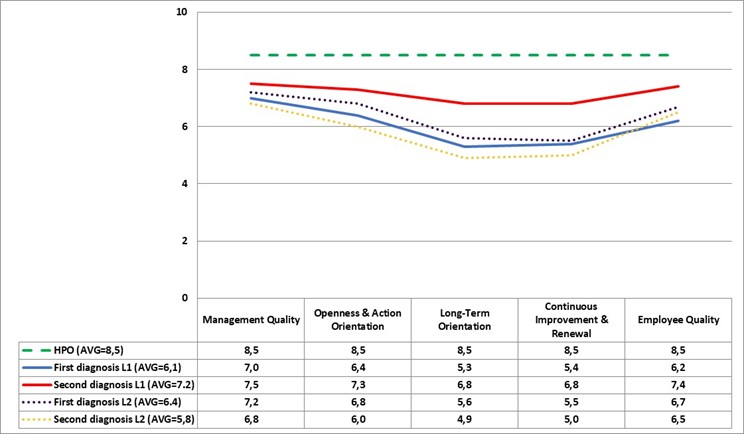
Further investigation into these divergent trajectories highlighted a stark difference in management attitudes towards the HPO project. L1’s management team gradually embraced the HPO framework, methodically addressing the identified attention points. This slow but steady approach reflected a willingness to evolve and improve. On the other hand, L2’s management exhibited resistance to change, adopting a “not invented here” mindset. This location, known for its insularity and minimal interaction with other branches, chose to continue with business as usual, disregarding the HPO framework’s recommendations. This decision led to employee dissatisfaction at L2, with many voicing concerns over inadequate leadership and limited opportunities for professional development.
The contrasting management attitudes and their subsequent impact on performance were evident. L1 not only enhanced its service delivery but also saw a notable increase in profitability. L2, despite maintaining its service level, suffered a decline in profit margins. This disparity underscored the critical role of management’s commitment to the HPO framework in achieving organizational success.
The case of Technology’s L1 and L2 locations serves as a compelling illustration of the causal link between the implementation of the HPO framework and enhanced organizational performance. The unique circumstances and identical starting points of L1 and L2, coupled with the absence of other improvement initiatives, provided a clear comparison. The decisive factor in their differing outcomes was the extent to which each location’s management team embraced and acted upon the HPO framework’s recommendations. This case study affirmatively answers the question regarding the causality between adopting the HPO framework and improved organizational performance. It also validates the hypothesis that applying the HPO framework directly contributes to enhanced performance, rather than improved performance facilitating the framework’s application.
Causality case 2
A Netherlands-based service company, referred to here as “Service,” embarked on a journey to transition from average performance to becoming an HPO. Service, employing about 1,500 staff across seven departments, utilized standardized processes including annual budgeting, quarterly and monthly reporting, and yearly evaluation and reward systems. Service initiated its first HPO assessment where managers and employees participated in a structured questionnaire and interviews conducted by researchers. The interviews aimed to delve deeper into the specific HPO scores and to understand the operational and cultural dynamics within the departments. Post-diagnosis, the board mandated that each department must engage in the HPO transformation, focusing on identified attention points, yet retaining autonomy over their approach to enhancing these HPO factors.
This case study concentrates on two departments, the sales department (D1) and a staff department (D2), which demonstrated the most varied results initially. In the first HPO diagnosis, both departments scored below the HPO average of 8.5, with D1 at 6.1 and D2 at 6.4, highlighting a need for significant improvements particularly in areas of Continuous Improvement (CI) and Long-Term Orientation (LTO).
For D1, the focus was on simplifying accountability structures, enhancing process execution and alignment, and prioritizing organizational goals over departmental ones to foster a client-centric strategy. D2 was advised to enhance collaboration with line departments to foster partnerships and align and simplify process execution, in addition to placing organizational interests above departmental ones.
A follow-up HPO assessment two years later showed that most departments, including D1, improved their HPO scores, with D1 increasing to 7.0. This improvement was attributed to the new management team’s commitment to addressing the HPO factors earnestly, resulting in higher employee satisfaction, increased turnover, and profitability. In contrast, D2’s score remained unchanged, with a noted lack of commitment from its management towards the HPO transformation, leading to increased employee frustration and decreased satisfaction among internal stakeholders.
The findings post the second HPO assessment underscored that departments which earnestly engaged with HPO management practices realized positive outcomes, illustrating the critical role of dedicated leadership and a committed approach to organizational enhancements in achieving high performance.

Exercise – The management commitment challenge
• Participants should read the case study of Technology’s L1 and L2 locations beforehand.
• Prepare a presentation summarizing the key points of the case study for reference during the exercise.
1. Divide and Conquer:
• Split participants into two groups. Assign one group to represent L1’s management team and the other L2’s.
• Each group will prepare arguments defending their location’s approach to the HPO framework, focusing on the mindset and actions of the management team.
2. Role-Play Debate:
• Conduct a structured debate between the two groups. L1 will argue the benefits of embracing the HPO framework and the strategies they used to successfully implement it. L2 will present their rationale for resistance and the outcomes of maintaining the status quo.
• Encourage participants to explore the underlying reasons for each management team’s stance and the consequences of those attitudes on organizational performance.
3. Reflective Analysis:
• After the debate, lead a discussion on what both groups could learn from each other. Focus on identifying constructive strategies L2 could adopt to overcome its resistance and how L1’s management could further enhance their approach.
4. Strategic Planning Session:
• Reunite the groups and task them with creating a strategic plan aimed at increasing management commitment to the HPO framework. This plan should address overcoming resistance, fostering a culture of continuous improvement, and ensuring the long-term engagement of management and employees alike.
5. Presentation and Feedback:
• Have each group present their strategic plan. Provide feedback and encourage peer evaluation, focusing on the feasibility and potential impact of the proposed strategies.
• Highlight the importance of management’s role in steering organizational culture and performance through commitment to improvement frameworks.
6. Actionable Commitments:
• Conclude the exercise by asking each participant to commit to one action they will take within their organizations to promote a positive attitude towards continuous improvement and renewal, inspired by the case study and exercise discussions.
Conclusion:
• Emphasize that the key takeaway from Technology’s experience is the critical role of management’s attitude in the successful implementation of the HPO framework. The exercise aims to equip participants with insights and strategies to foster a culture of high performance within their organizations, regardless of their starting point.

Course Manual 12: HPO Diagnosis
In conversation with a CEO – A Final Insight Before Departure
Peter and Tanya walked to the elevator.
“Thank you so much for taking the time for me,” said the journalist as she stepped into the elevator. Just before the elevator doors closed, she let out a cry and slipped back out.
“What’s wrong?” asked Peter, concerned.
“Phew, I almost forgot to ask. Do you remember when you said that the five pillars do not need to be improved sequentially? You promised to tell me more about that.”
“That’s right,” Peter admitted. “I can tell you that it takes a lot of time and effort to reach a stage where the organization can truly be called high performing. And I haven’t even talked about the effort it takes to maintain that level. Many organizations don’t have the energy or courage for it, often because they don’t know what to do or where to start. Moreover, it often happens that people do not feel the need to become an HPO; they think they are doing quite well, especially when they look at their competitors. But there is often a case of being ‘the one-eyed king in the land of the blind,’ if you know what I mean.”
Tanya nodded. “Sure, but you did start, didn’t you?”
“Correct, but it wasn’t without difficulty. Especially the lack of a sense of urgency was a challenge. That’s why we first carried out an HPO diagnosis to determine where we stood and what points we needed to improve first. Moreover, the resulting diagnostic report provided a first step towards targeted improvement actions. That diagnosis has been very useful in bringing the HPO philosophy to life in our organization.”
“Can I get that diagnostic report?” Tanya asked eagerly.
Peter smiled. “I anticipated that, here it is.”
Tanya stepped back into the elevator. “Thanks again, this is going to make a great article.”
“I expect so, but you don’t know everything yet,” Peter replied. “Read the report first, and then next time I’ll tell you how we continued. Because to paraphrase the famous management guru Peter Drucker: the purpose of a diagnosis is not to gather knowledge, it’s to take the right action.”
Engaging and Inspiring Colleagues to Participate in the HPO Online Questionnaire
Your organization can evaluate its high performance level and identify challenges and possible improvements by conducting an HPO diagnosis. The HPO diagnosis process starts with an HPO awareness workshop for management and other interested parties. During this workshop, the organization gets acquainted with the HPO framework, the HPO diagnosis and the possible HPO transformation process. During the actual HPO diagnosis, management and employees complete the HPO Questionnaire, which consists of statements based on the 35 HPO characteristics. The questionnaire has been validated and the statistics performed on data collected worldwide. Therefore it is important to mention that the main principles of the HPO framework remain unchanged, regardless of the type of company or industry being diagnosed. Respondents rate their organization on a scale of 1 (not at all) to 10 (very much so) on these statements. The individual scores are averaged to provide scores on the HPO factors for the complete organization. These average scores indicate which HPO factors and characteristics the company needs to improve in order to become an HPO. For these factors and characteristics the organization drafts improvement actions which are incorporated in an HPO transformation plan. This plan is then executed during the year and updated when actions have been successfully wrapped up.
In the next module, we will go deeper into the HPO diagnosis process. For now, we first need to collect data from your organization in order to be able to perform the diagnosis. How to gather the data from your colleagues is described in the project Study.
Engaging and Inspiring Colleagues to Participate in the HPO Online Questionnaire
To successfully conduct the HPO diagnosis, it’s crucial that we engage and inspire our colleagues to participate actively in the HPO online questionnaire. Here’s how you can effectively communicate the importance of this process and motivate everyone to get involved:
Highlight the Benefits of HPO for Everyone
Start by explaining what the HPO framework is and why it matters. The HPO framework is a proven methodology designed to help organizations achieve and sustain high performance. Emphasize that this is not just a management initiative; it’s a company-wide effort that benefits every employee, regardless of their role. By participating in the HPO questionnaire, colleagues can contribute to creating a more efficient, effective, and enjoyable workplace.
Make It Personal and Relevant
People are more likely to engage when they see how something directly affects them. Illustrate how the insights gained from the HPO questionnaire can lead to tangible improvements in their daily work life. Whether it’s enhanced collaboration, better resources, or clearer communication, show that their input is vital in shaping a better working environment for all.
Foster a Sense of Ownership and Inclusion
Encourage colleagues to view their participation as a critical component of the organization’s success. Create a sense of ownership by highlighting that their feedback directly influences the company’s strategic direction and improvement initiatives. When employees feel that their voices matter and are heard, they are more likely to participate earnestly.
Communicate Clearly and Regularly
Ensure that all communication about the HPO questionnaire is clear, transparent, and consistent. Use multiple channels to reach everyone—emails, meetings, internal newsletters, and even informal conversations. Keep the messaging positive and forward-looking, focusing on the opportunities that the HPO diagnosis presents.
Lead by Example
Management should lead by example and participate in the HPO questionnaire first. When employees see their leaders actively engaged and supportive of the process, they are more likely to follow suit. Leaders can share their own experiences and reasons for participating, which can serve as a powerful motivator for others.
Provide Support and Resources
Make sure that colleagues have all the necessary information and resources to complete the HPO questionnaire. Offer assistance if needed, whether it’s through instructional guides, Q&A sessions, or designated points of contact for queries. Ensuring a smooth and accessible process will help mitigate any reluctance or confusion.
Celebrate Participation and Progress
Recognize and celebrate the efforts of those who participate. Share updates on the progress and preliminary findings of the HPO diagnosis. Acknowledge the collective effort and highlight success stories or early wins. Celebrating these milestones reinforces the value of participation and keeps the momentum going.
By effectively communicating the importance of the HPO questionnaire and inspiring colleagues to contribute, you can ensure a robust and meaningful diagnosis process. This collective effort will pave the way for transformative improvements, driving your organization closer to achieving high performance.

Exercise – Self-reflection and commitment exercise: preparing for the HPO diagnosis journey
Initiate personal reflection on the organization’s HPO journey and solidify individual commitment to improvement.
1. Reflection:
Spend a few moments reflecting on one area where you believe your organization can improve based on the HPO characteristics.
2. Commitment Statement:
Write a one-sentence commitment statement on how you will contribute to this improvement.
3. Sharing (Optional):
Share your commitment with a colleague to encourage mutual support.
This exercise primes you for active participation in the upcoming HPO diagnosis and transformation efforts, starting with personal accountability.

Case Study – Grohe’s Path to Success Through applying the HPO Framework
Grohe AG, Europe’s largest and a global leader in the sanitary fittings industry, has consistently set the benchmark for quality, technology, and design in bathroom, toilet, and kitchen products. With a global market share of approximately eight percent, Grohe’s commitment to delivering ‘the perfect flow of water’ has established it as the premium brand in the sanitary sector. Despite its success, Grohe faced challenges that threatened its market leadership, particularly in the Netherlands. This case study explores how Grohe navigated these challenges by implementing the HPO Framework, leading to a rejuvenated company culture and increased market share during a period of industry recession.
The Challenge
Despite being the market leader, Grohe’s Dutch CEO observed a diminishing lead over competitors, a decline in turnover, and a loss of the company’s winning spirit. The organization was operating on autopilot, with a lack of innovation and an ineffective marketing strategy. The sales team’s performance was not aggressively evaluated, leading to complacency. In response, an HPO Diagnosis was conducted, revealing Grohe’s potential for improvement and areas of focus to become a full-fledged HPO:
• Openness & Action Orientation – Grohe initiated several measures to foster a culture of openness and action. Quarterly meetings increased transparency and encouraged cross-departmental collaboration. This shift not only improved openness but also instilled a more action-oriented approach across the organization.
• Continuous Improvement & Renewal – To address the need for continuous improvement, Grohe streamlined its process improvement activities. Innovations and cross-departmental involvement became prerequisites for management sign-off on any improvement activity, promoting knowledge sharing and fostering a culture of innovation.
• Management & Employee Quality – Grohe invested in enhancing the quality of both management and employees through mini MBA training sessions focused on building a ‘we can do’ mentality. Personal performance indicators were introduced, clarifying expectations and fostering a dialogue between management and staff.
• Long-Term Orientation – The challenge of maintaining a long-term perspective in the face of private equity ownership was met with a renewed focus on the company’s future vision. Despite the short-term pressures, Grohe committed to strategic planning and vision development for the ‘Grohe of tomorrow.’
Results and Reflection
A second HPO Diagnosis revealed a modest but significant improvement in Grohe’s HPO score, especially notable given the severe recession in the building industry (see the Figure). Grohe Netherlands not only doubled its sales and profits but also increased its market share to 45 percent. The improvements across the HPO factors, particularly in openness & action orientation and continuous improvement, underscored the effectiveness of the targeted initiatives. Grohe’s application of the HPO Framework catalyzed a transformation that extended beyond financial success. It rejuvenated the company’s culture, reinstated a winning mentality, and positioned Grohe to tackle future challenges with confidence. The CEO’s pride in the enhanced cooperation, increased focus, and the dismantling of siloed thinking highlighted the profound impact of the HPO Framework. Grohe’s journey underscores the value of strategic, focused improvement efforts, even in the face of industry downturns, and serves as a compelling case for the adoption of the HPO Framework as a catalyst for organizational change and success.
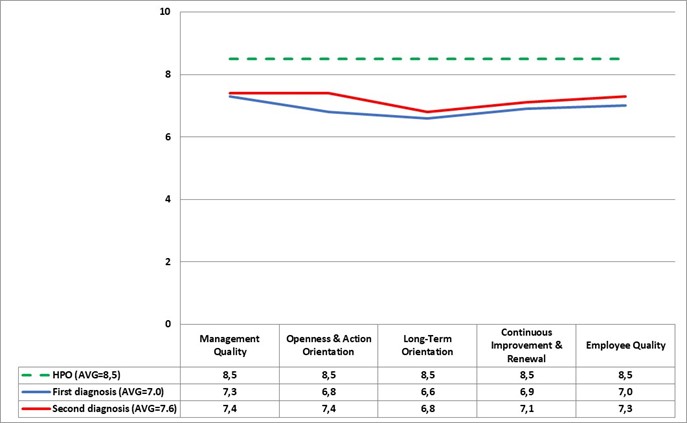
Figure: Grohe’s HPO scores from the two diagnoses
Project Studies
The HPO Questionnaire is a key component of the HPO Diagnosis. Each participant has to distribute the questionnaire amongst their team – using the link to the internet-based questionnaire – and ask the colleagues to rate their team and organization on the 35 HPO characteristics. As the questionnaire is internet/based, in general completing the survey takes less than 10 minutes. Each participant should get a minimum of 5 responses (there is no maximum). The participants should complete the questionnaire themselves also. The data of the respondents will be analyzed and feedback reports for the participants will be prepared. These reports which will be distributed before session 3.
When inviting colleagues, an introductory note as this can be used:
Dear colleague,
As part of our continuous improvement journey our organization has decided to partake in the learning program High-Performance Organization (HPO). Such an organization is defined as an organization that achieves financial and non-financial results that are exceedingly better than those of its peer group over a period of time of five years or more, by focusing in a disciplined way on that which really matters to the organization. To become an HPO, we are using the HPO Framework. This framework is based on a five-year, international scientific study at profit, non-profit and government organizations at has been used the past twenty years by hundreds of organizations. This study reveals the 35 most important aspects that together form the basis for better performance: for better financial results, higher customer satisfaction, higher employee satisfaction, etc.
As part of the transformation to an HPO, we start with the HPO Questionnaire which measures, based on our own opinion, how far along we are to the HPO level. By participating in the survey you give your opinion about our organization, where we are now and where you think we can improve further. Ultimately, we can jointly increase the performance of our organization and the services we provide to clients.
Before you start your research, here’s a few things:
• You have the option to complete the questionnaire until XXXX (completion generally takes less than 10 minutes).
• Your answers will always remain private and treated confidentially. Only total scores are announced during the feedback presentation.
• To log in, click on the link below. After an introductory text, you can immediately start answering the questions. Please complete the questionnaire in one go. If you have stopped completing the questionnaire prematurely, you will have to start again (this is because we do not ask for your email address for confidentiality purposes and therefore do not know what your questionnaire is).
• When the questionnaire refers to ‘the manager’, this refers to your direct supervisor/manager, i.e. the person to whom you are accountable. When we talk about ‘the organization’, it refers to the part within our organization where you work.
• After completing the answers, press ‘continue’. The answers on that page are then saved. It is then not possible to click on ‘previous’ in your internet browser. However, you can use the ‘Back to previous’ link on the left below the meter.
Click on this link: (to be provided)
Program Benefits
Management
- Improved management
- Better teamwork
- Leadership excellence
- Improved communication
- Committed employees
- Positive environment
- Better skills
- Increased proactiveness
- Increased engagement
- More trust
Human Resources
- Improved culture
- Happier employees
- Better recruits
- Higher retention
- Growth mindset
- Increased engagement
- More development
- Improved skills
- Improved behavior
- Better Communication
Production
- Higher productivity
- Higher efficiency
- Less mistakes
- Happier employees
- Higher quality
- More innovativeness
- Continuous improvement
- Positive mentality
- More focus
- More discipline
Client Telephone Conference (CTC)
If you have any questions or if you would like to arrange a Client Telephone Conference (CTC) to discuss this particular Unique Consulting Service Proposition (UCSP) in more detail, please CLICK HERE.



















